Rio de Janeiro
A Week in Rio
Rio de Janeiro is a vibrant and magical Brazilian city known for its energetic atmosphere, famed white sand beaches, jungelous hiking trails, breathtaking landscapes, sprawling favelas and all night samba parties. We spent a week in Rio, explored the city by neighborhood, getting a feeling for each one’s character, sights and beaches.
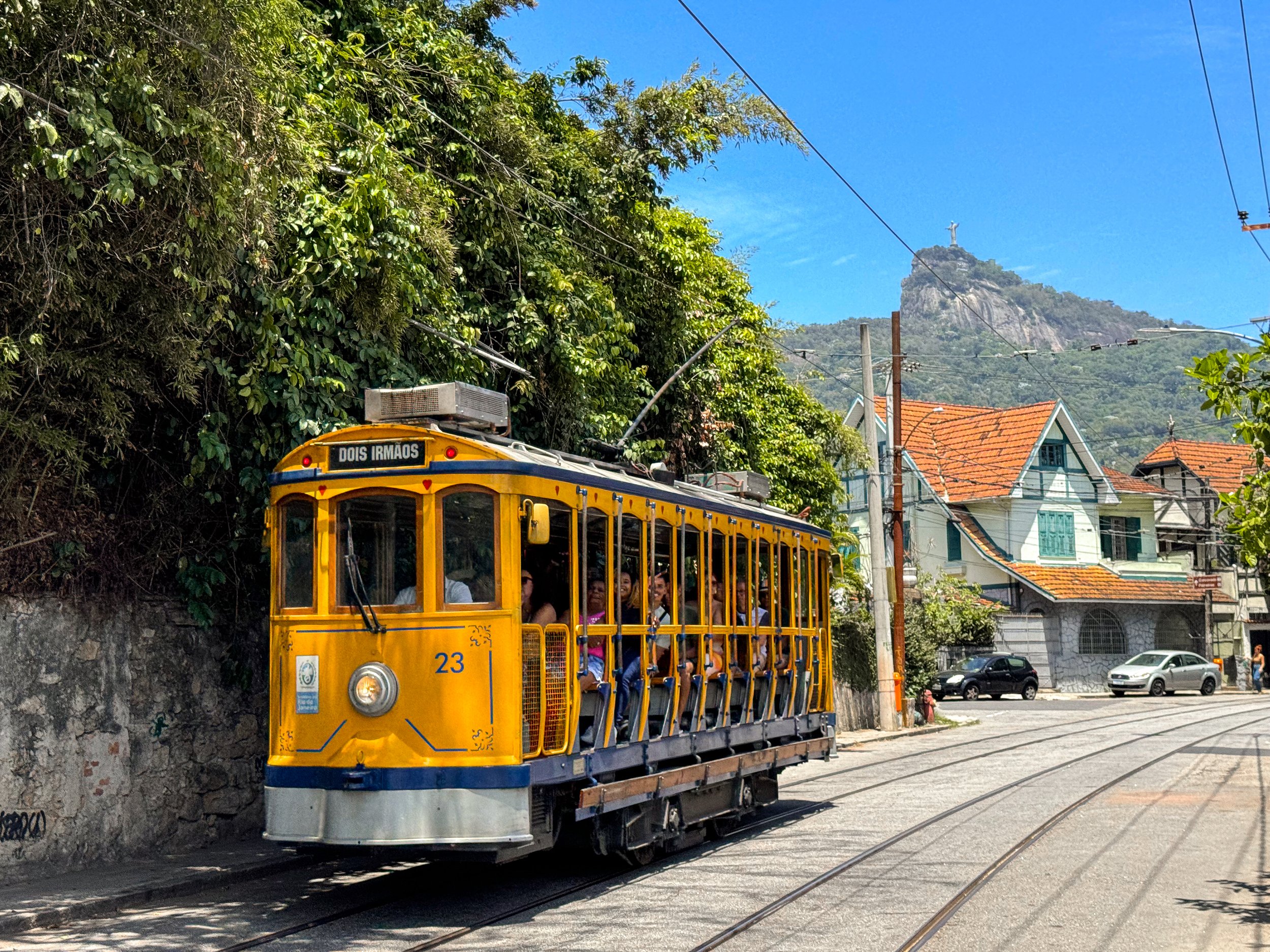
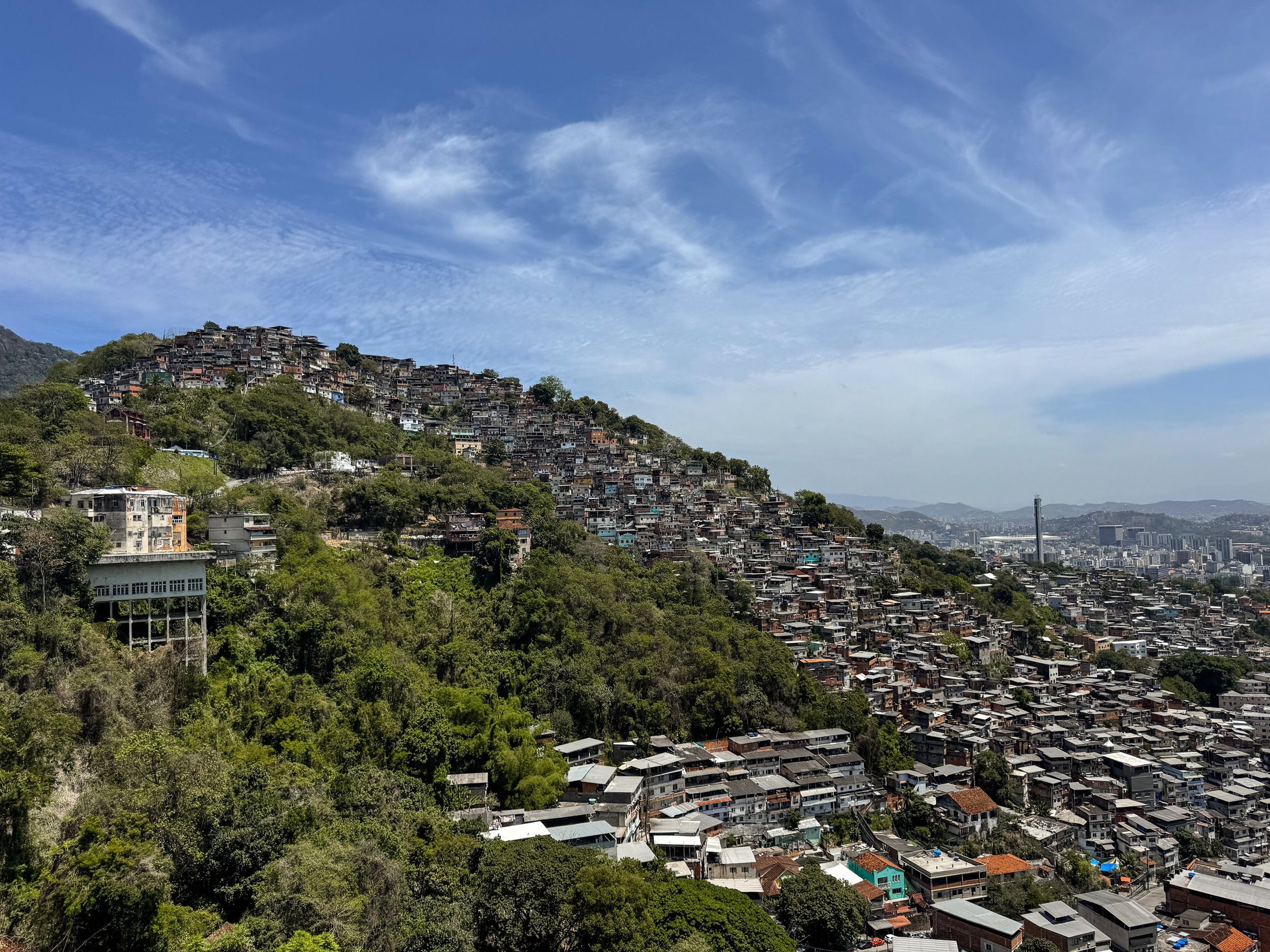
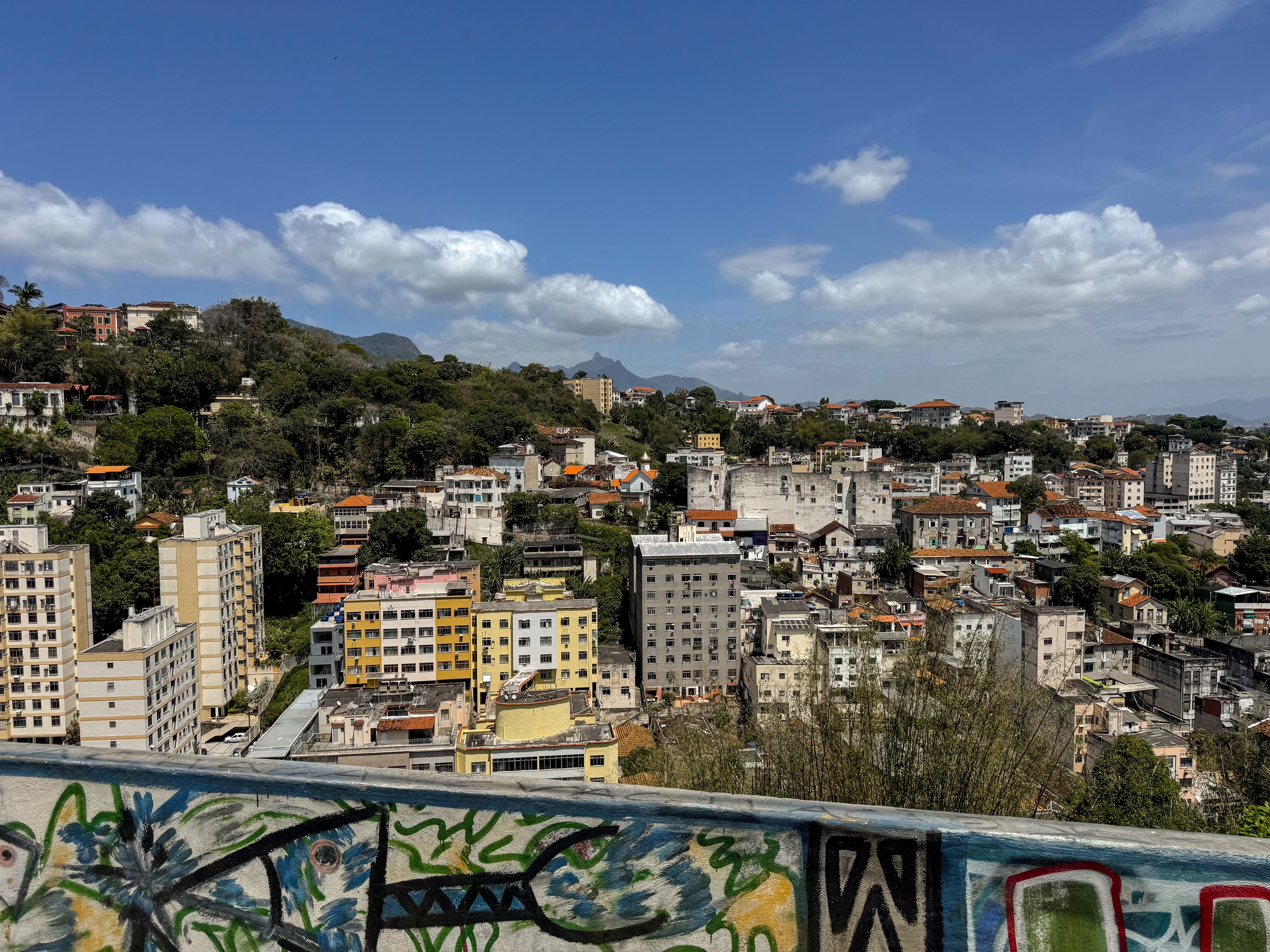
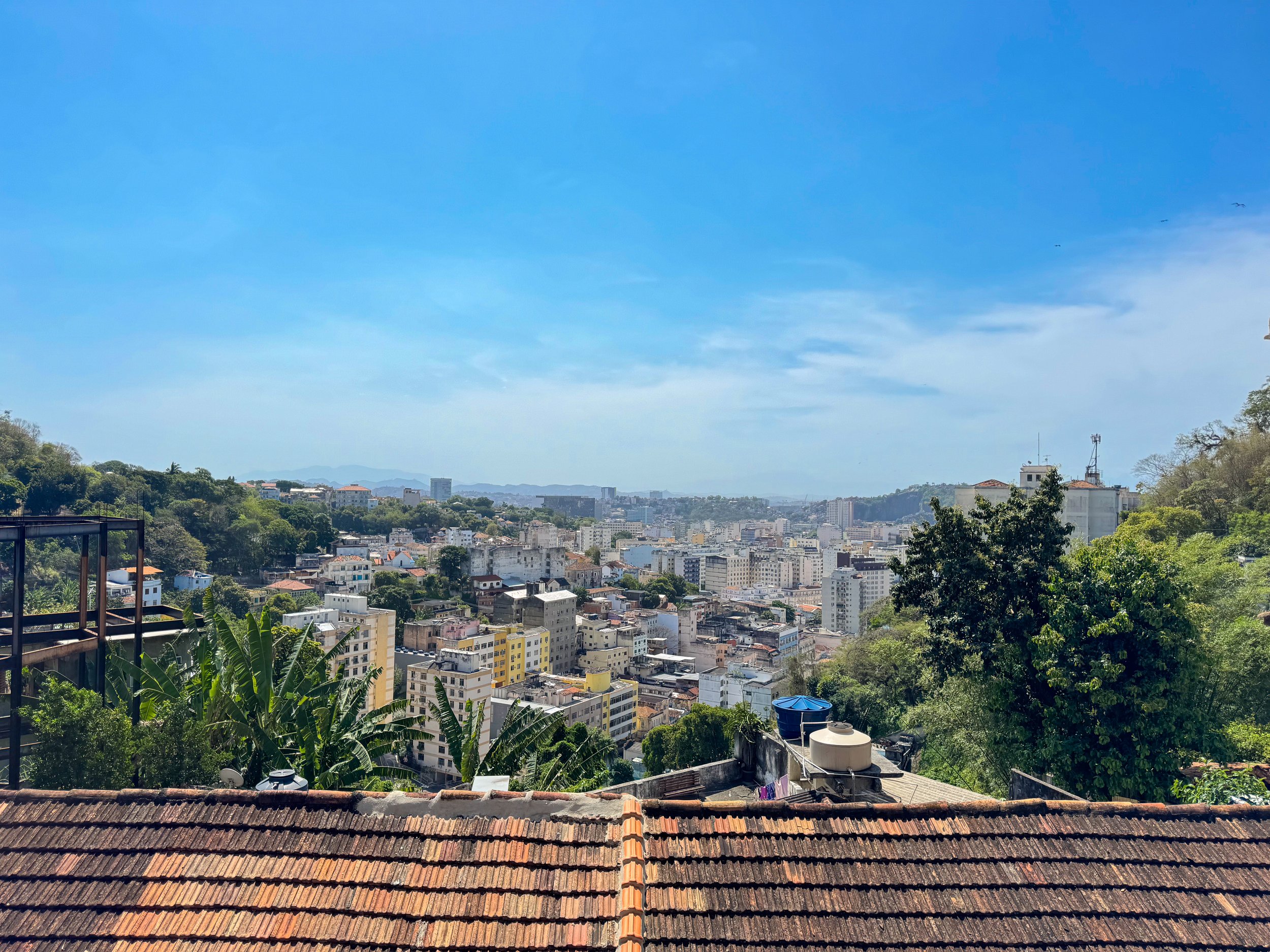
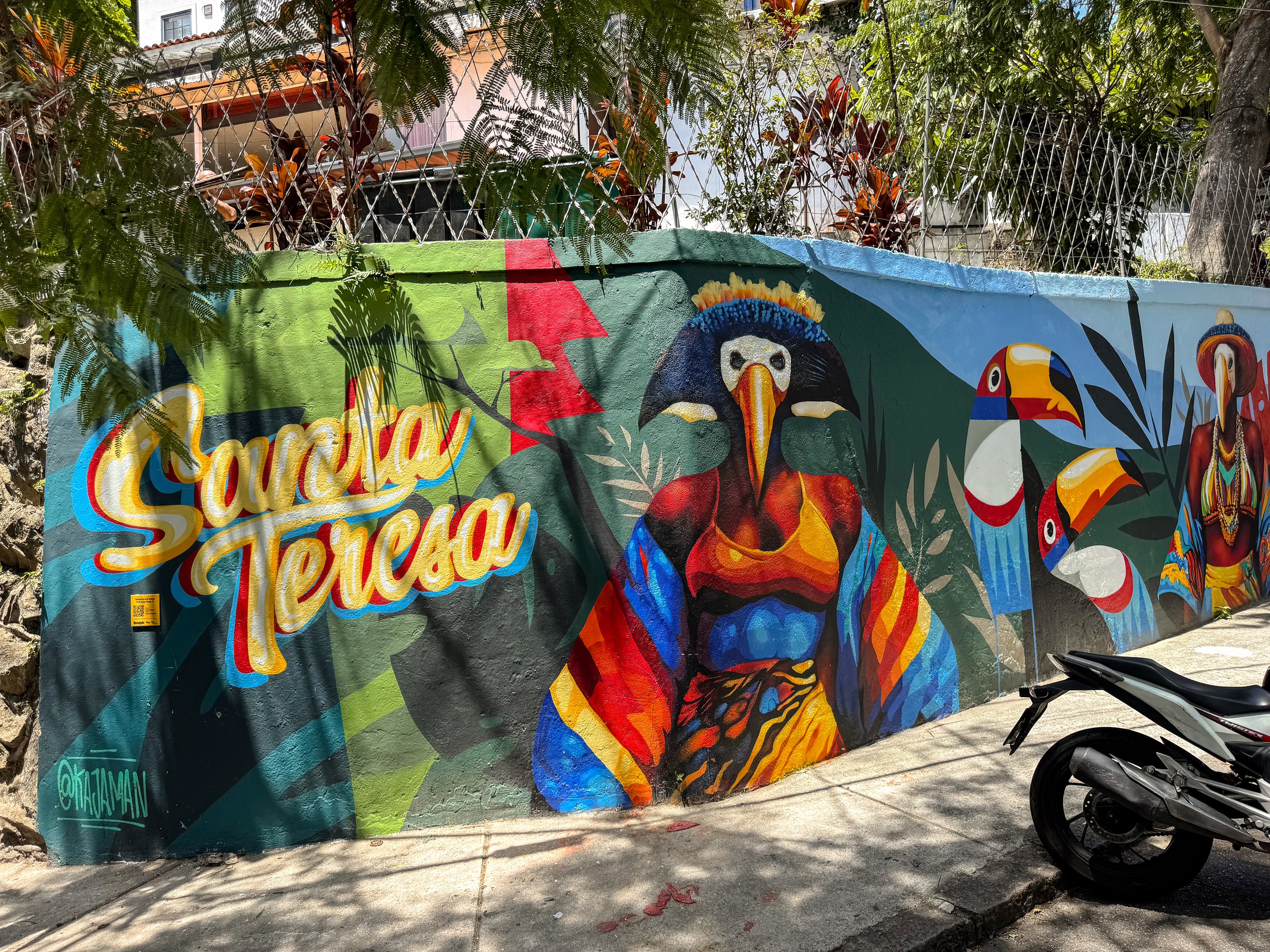
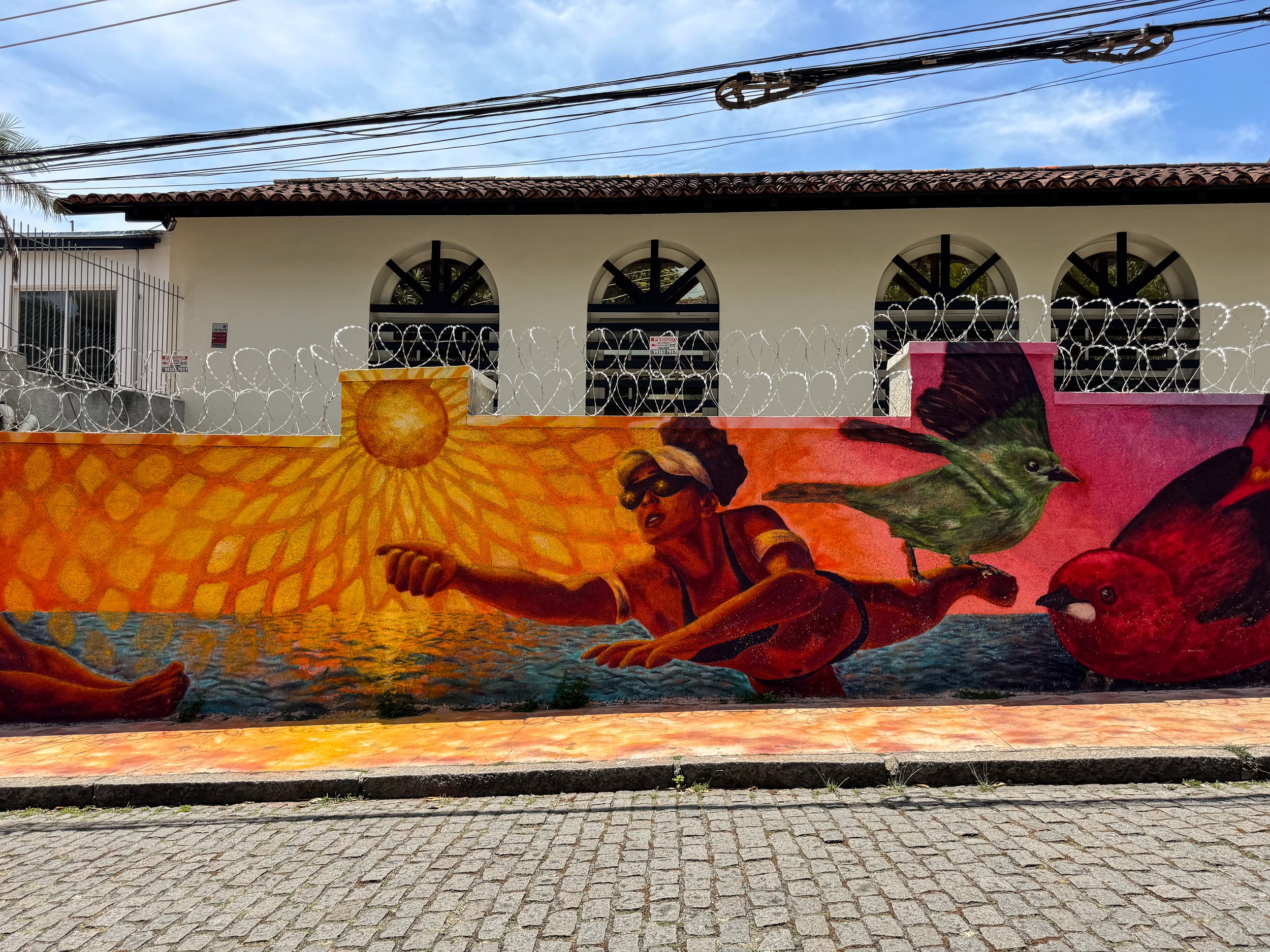
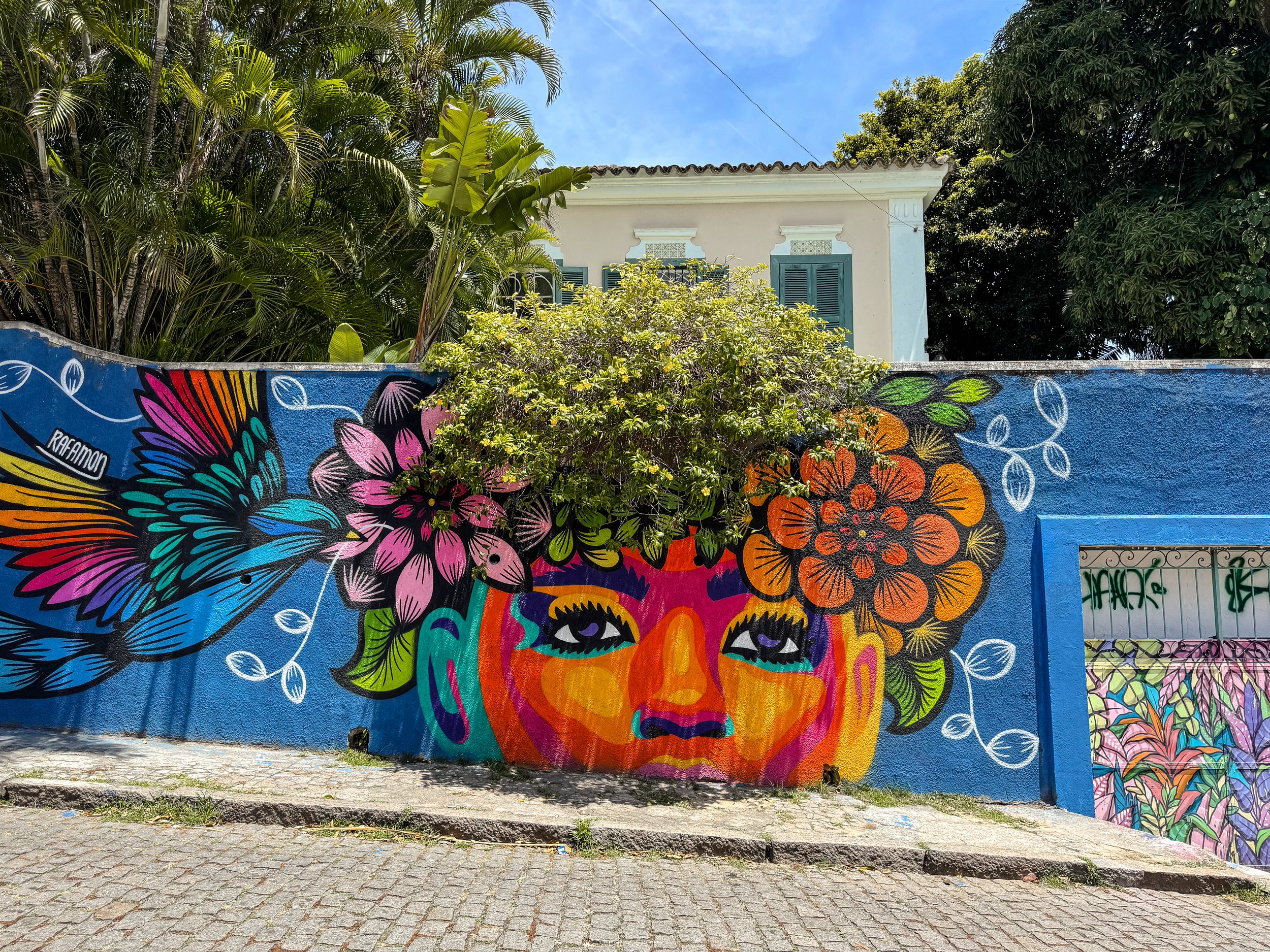
Santa Teresa
Santa Teresa is a hilly neighborhood with winding cobble stone streets, scenic viewpoints overlooking neighboring favelas, a restored tram, colorful street murals, and Brazilian restaurants.
Santa Teresa Tram. A historic yellow tram that rides through the Santa Teresa neighborhood past its landmarks and sights, making quick stops at stations along the way. We took the tram from the main station near the Metropolitan Cathedral into the neighborhood to the top of the hill. From here, we hopped off and walked back down, exploring the neighborhood on foot.
Good to Know: Purchase tram tickets at the station at 9am to avoid the crowds.
Largo dos Guimarães. The small central plaza in Santa Teresa with a tram station and a street with several cute cafes, vintage style restaurants and Brazilian shops.
Casanossa. A beautiful restaurant along the Santa Teresa tram route with a multilevel outdoor courtyard under the dappled lighting of trees with views of the hilltop architecture. We came here for lunch, ordering the bohlinos de bacalau, ceviche and a cold Brazilian beer.
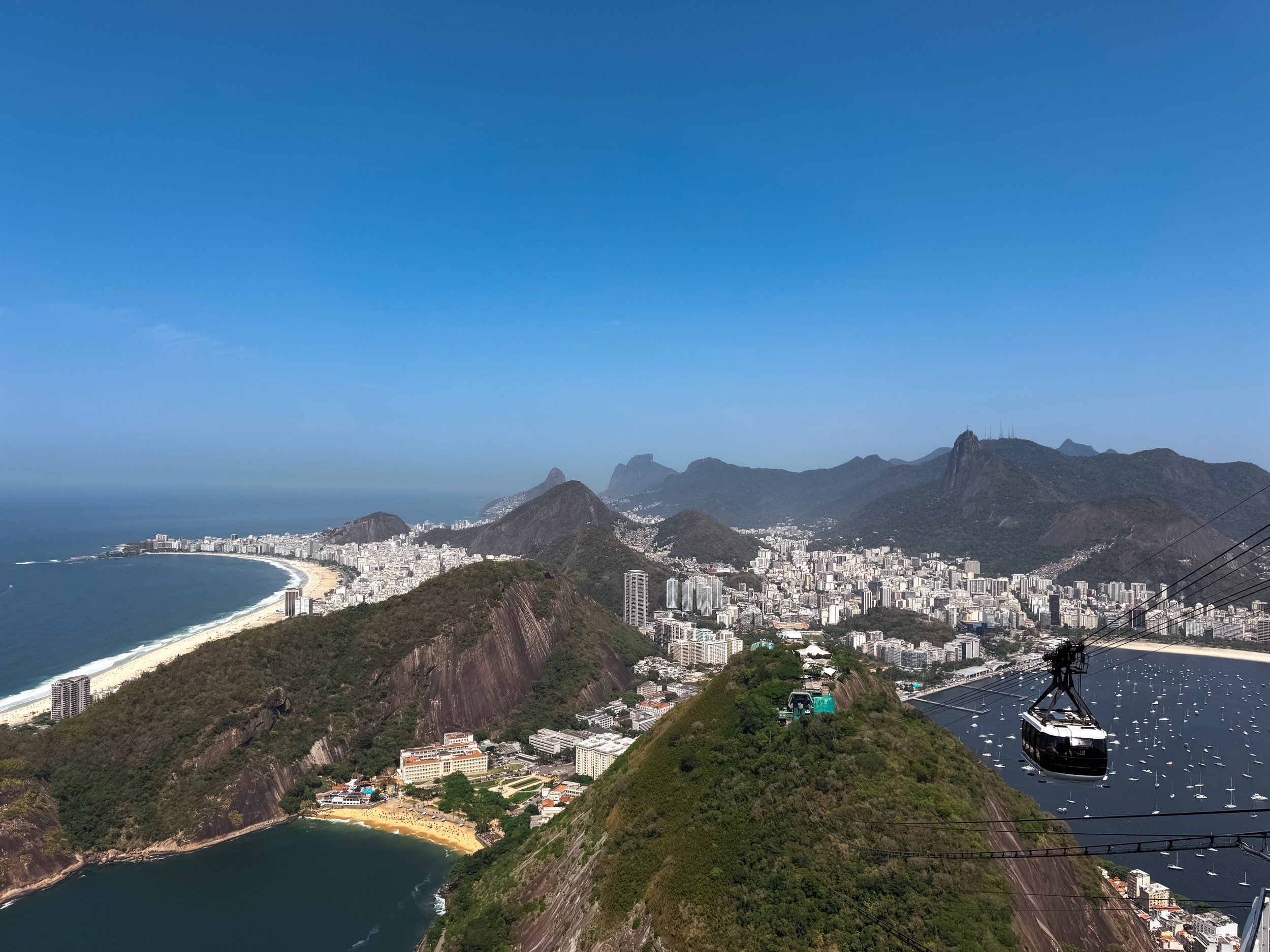
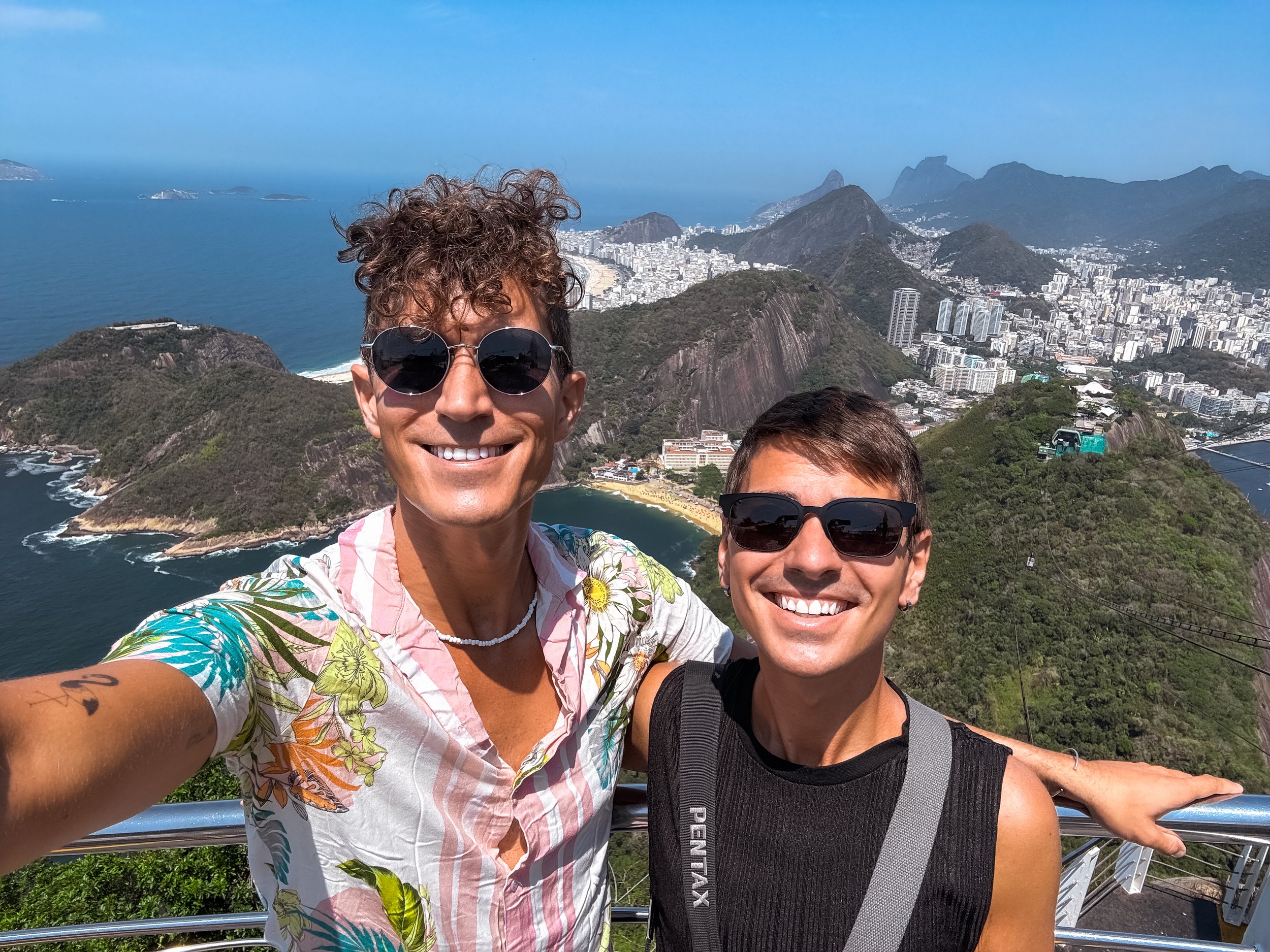
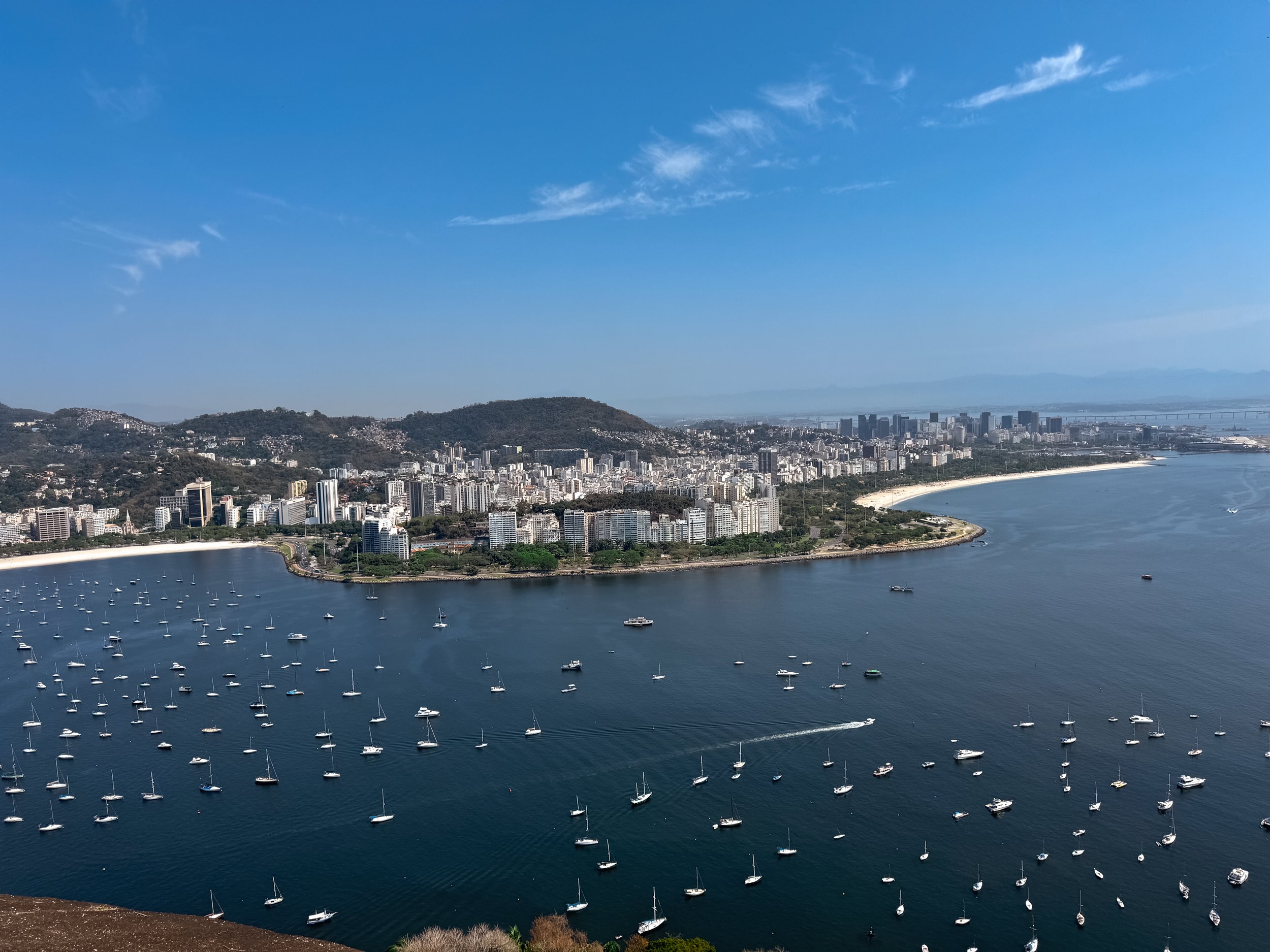
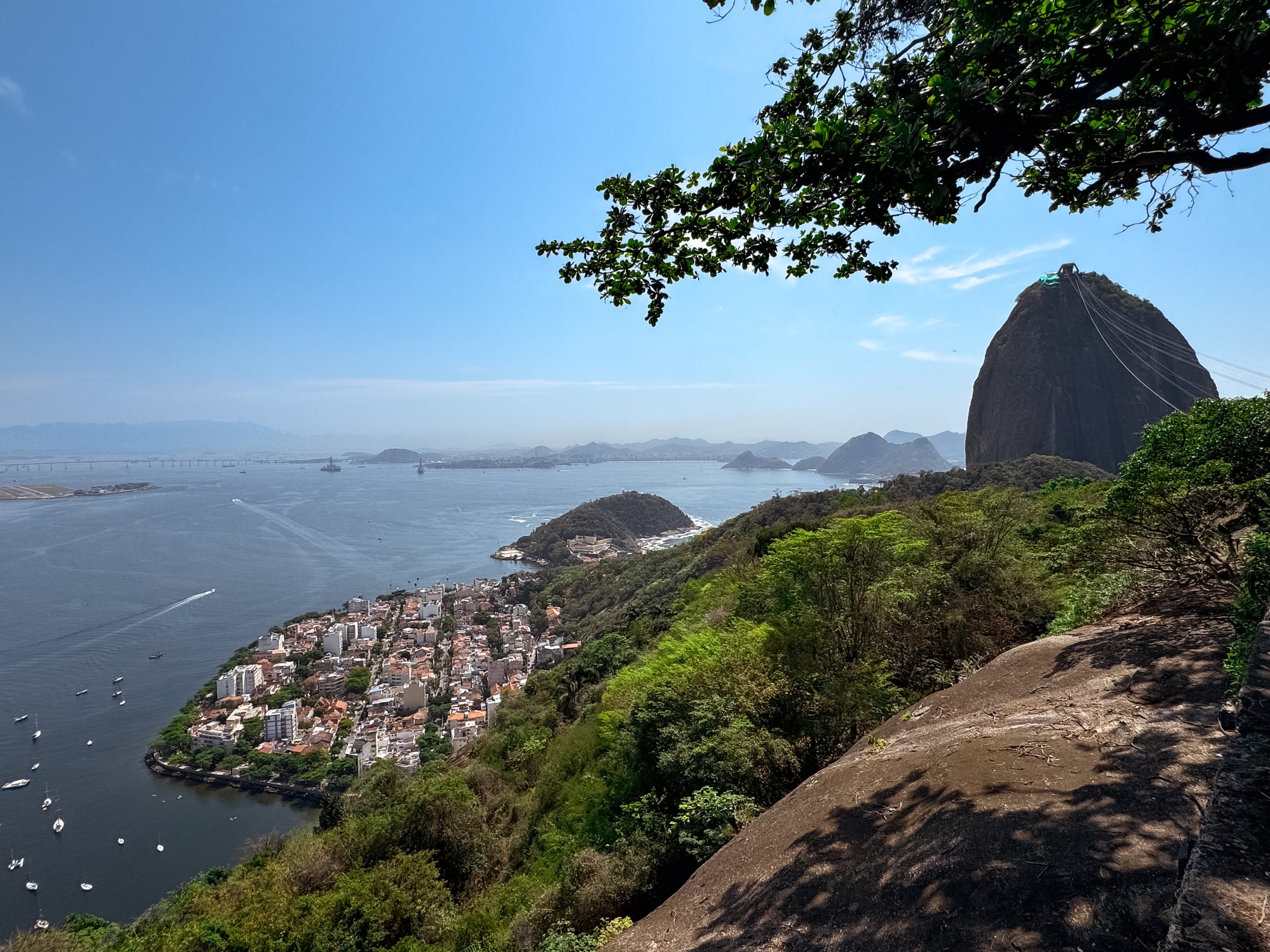
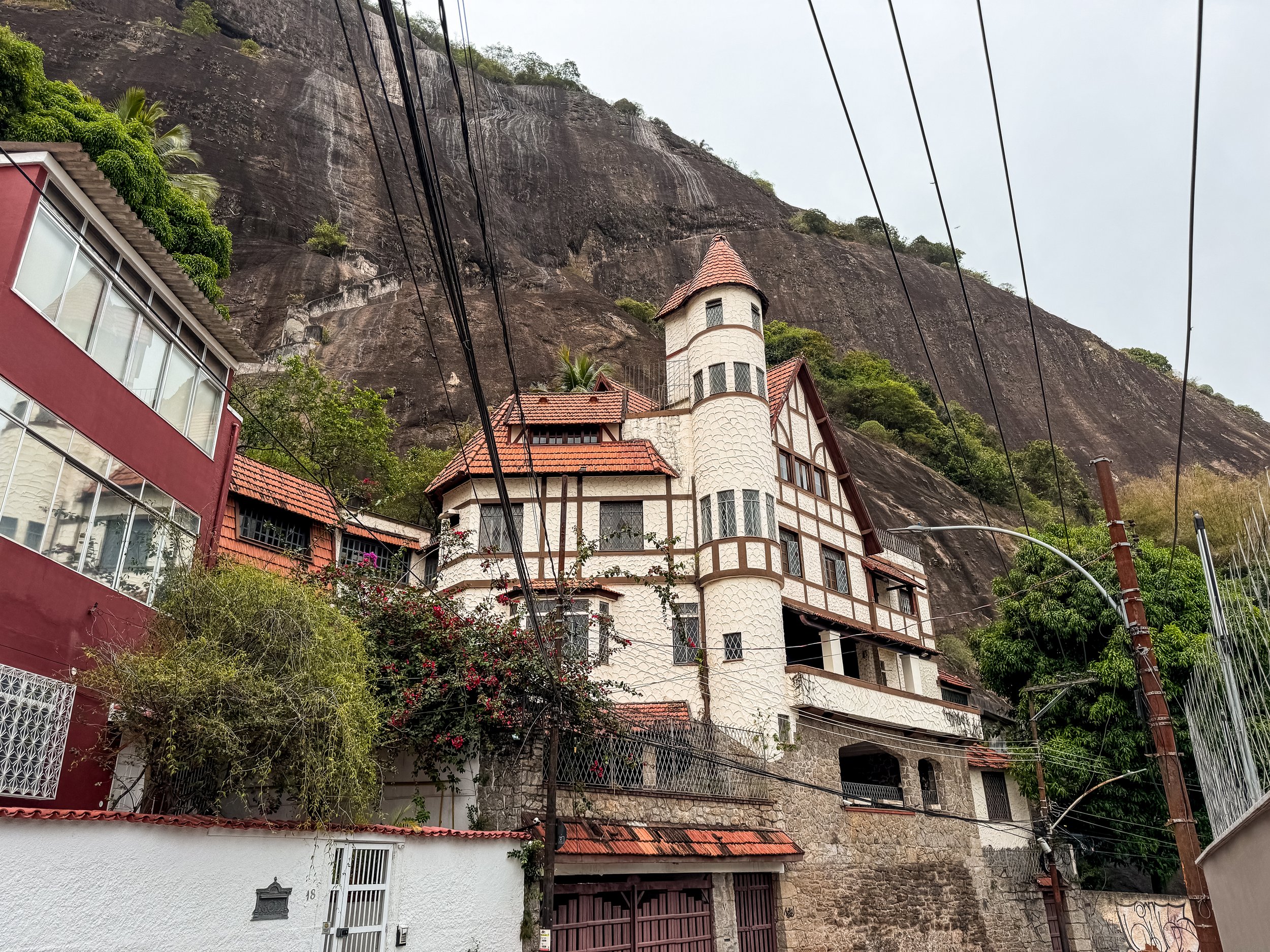
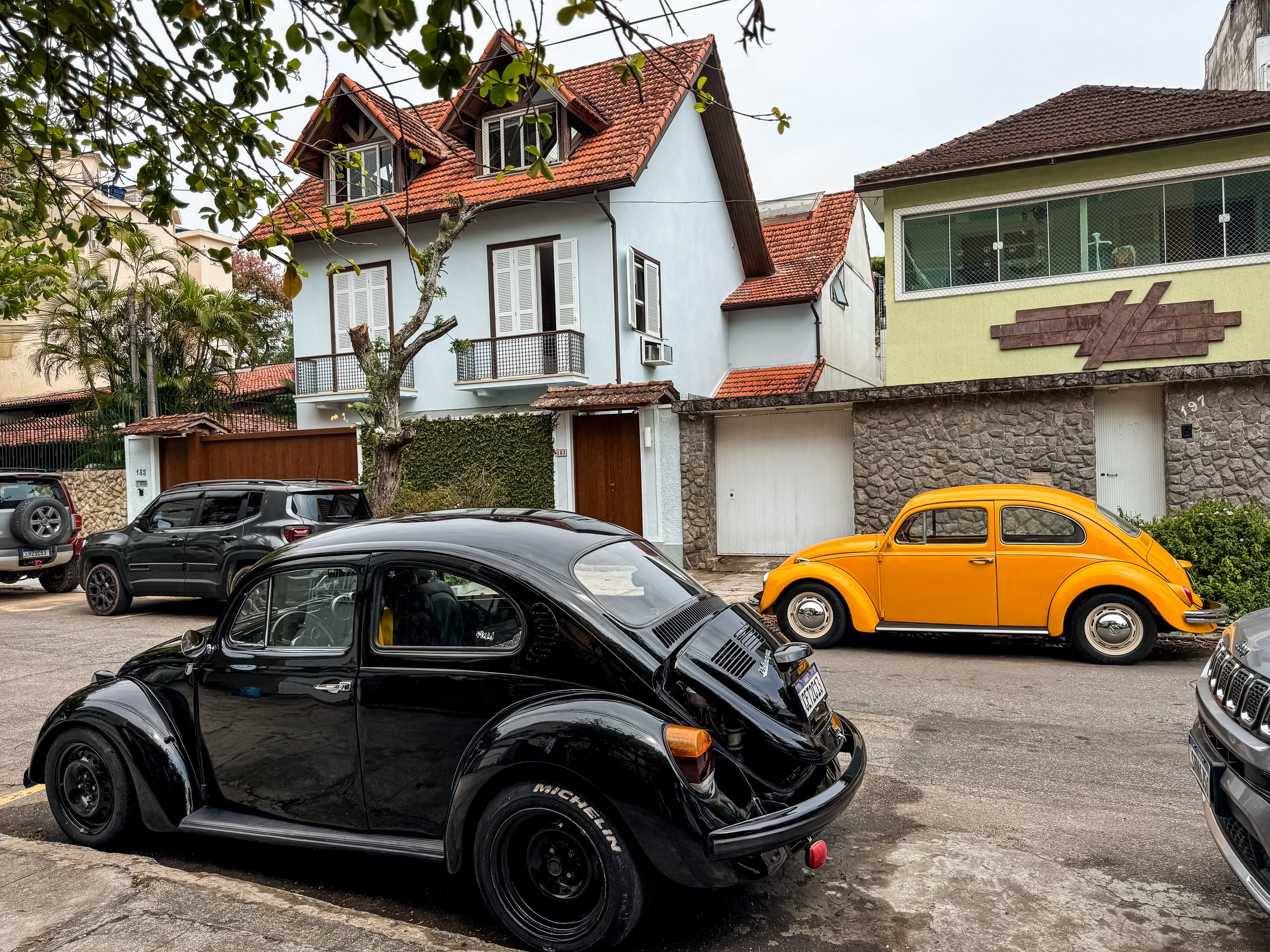

Urca
Urca is neighborhood at the base of the Sugarloaf Mountain. The residential are around the mountain has views of the harbor, beautiful small beaches, tree lined streets with flowering plants, German style houses, VW Beetles and a historic military base.
Pão de Açúcar (Sugarloaf Mountain). An iconic granite mountain with panoramic views of Rio, the harbor and ocean. We took the cable car up to smaller Urca Mountain then to Sugarloaf Mountain. From the summit of each, we overlooked the city from all angles, watched airplanes fly closely overheard and spotted people climbing the sheer granite cliffs. The smaller mountain has a garden with nature trails where spotted a tiny monkey climbing in a tree. Both mountains have numerous cafes, restaurants, food stands, bars and shops at their summits. While taking in the views, we ordered a coffee and brigadero, a Brazilian truffle.
Good to Know: Only go on a clear and sunny day. We purchased our tickets online ahead of time for the 9am entry to beat the crowds. Book here!
Praia Vermelha (Red Beach). A small beach named after its red hued sand at the base of the Sugarloaf Mountain. Come here to listen to the waves crash while relaxing in a beach chair under an umbrella with a fresh coconut.
Maria Açaí. A local restaurant chain for sweetened cups of açaí with a range of toppings like coconut, granola and nuts.
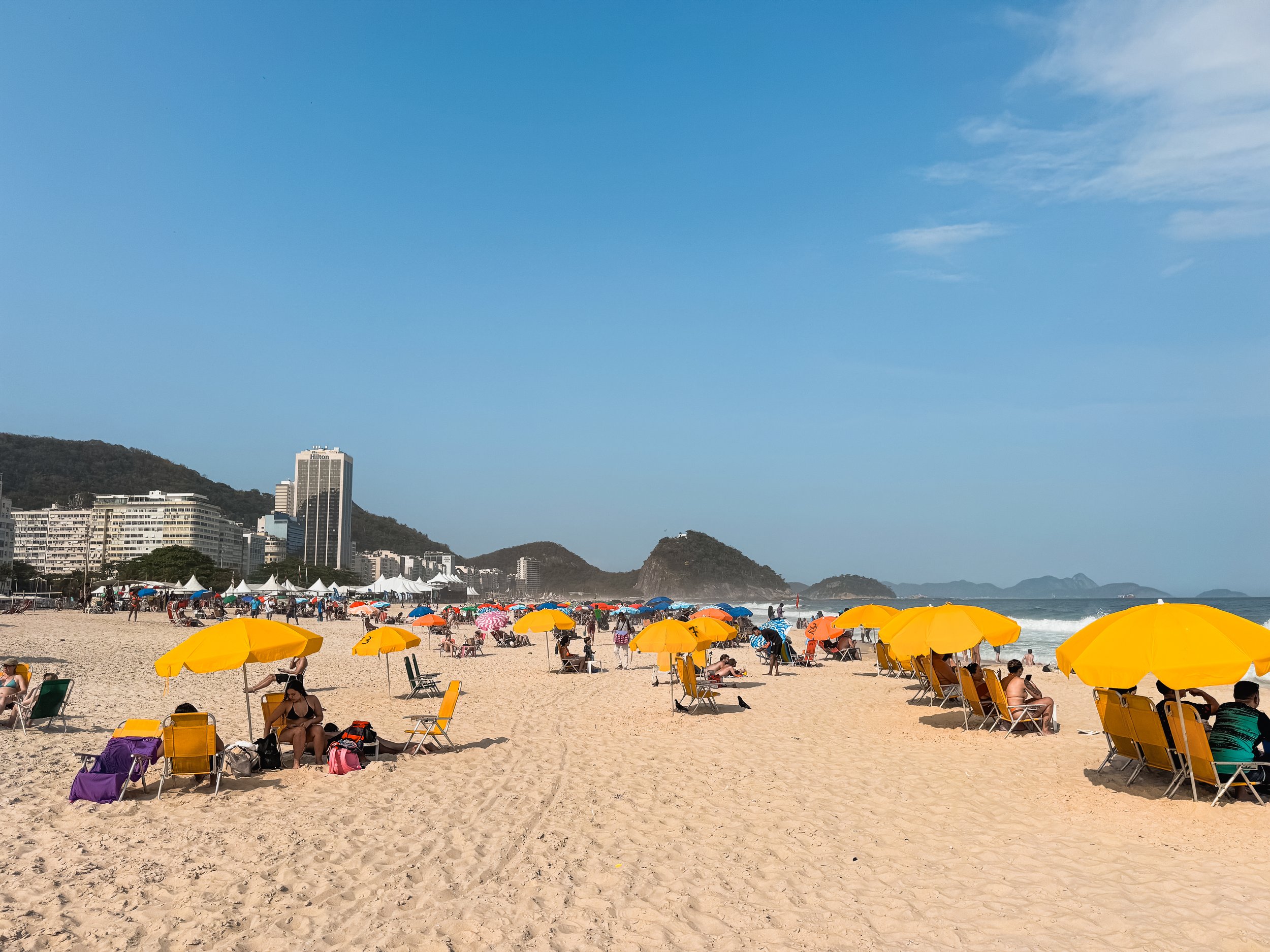
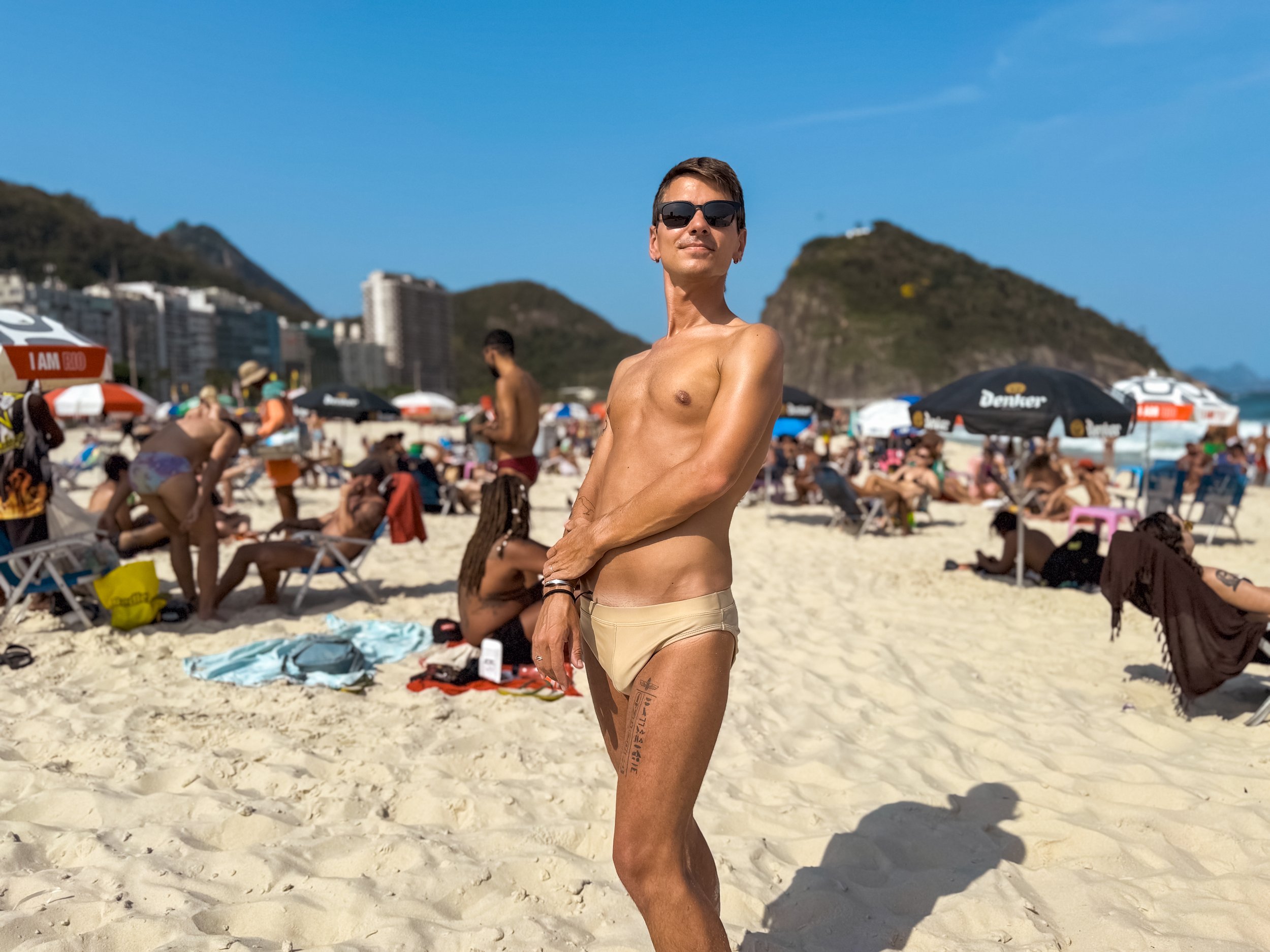
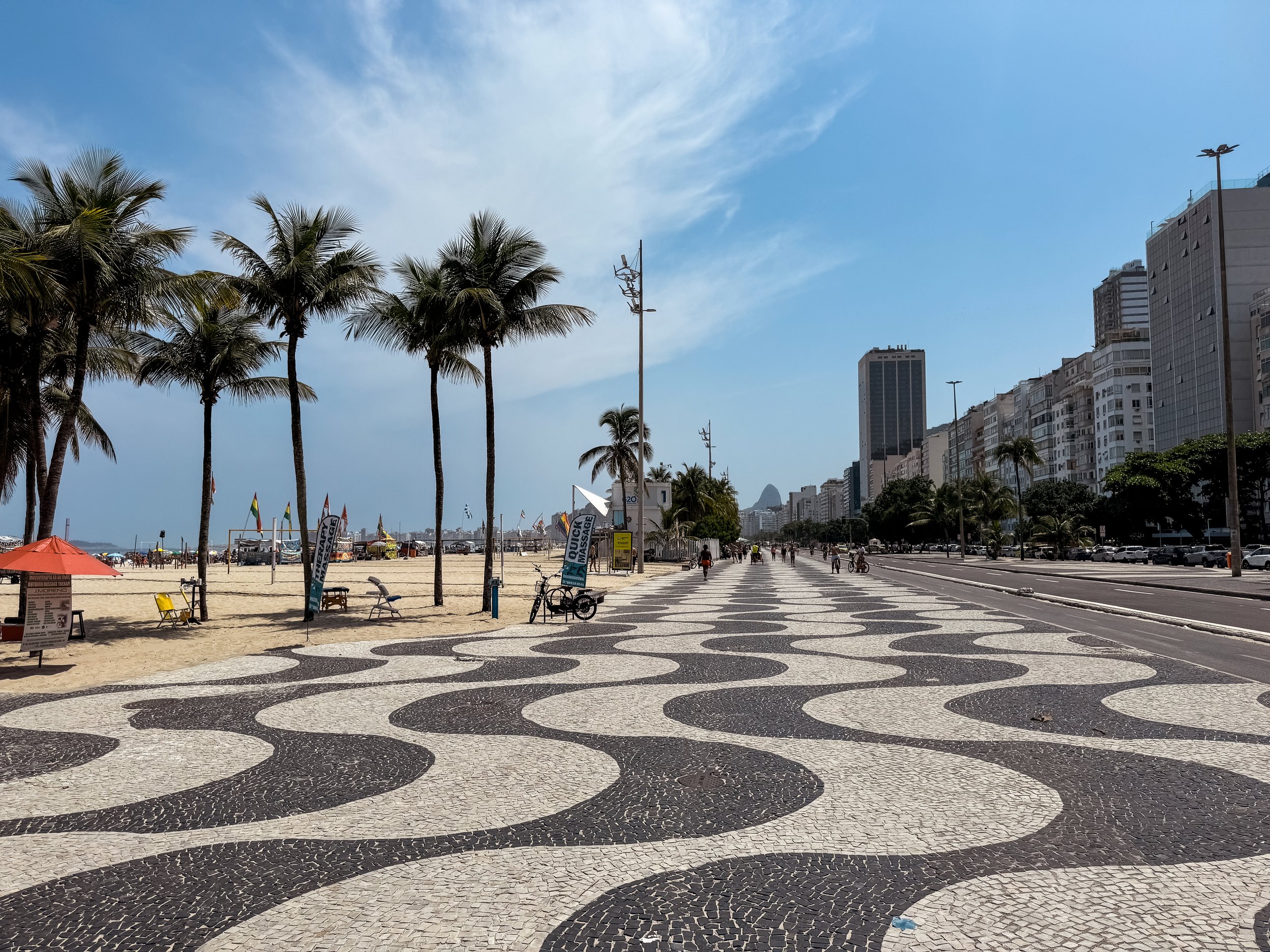
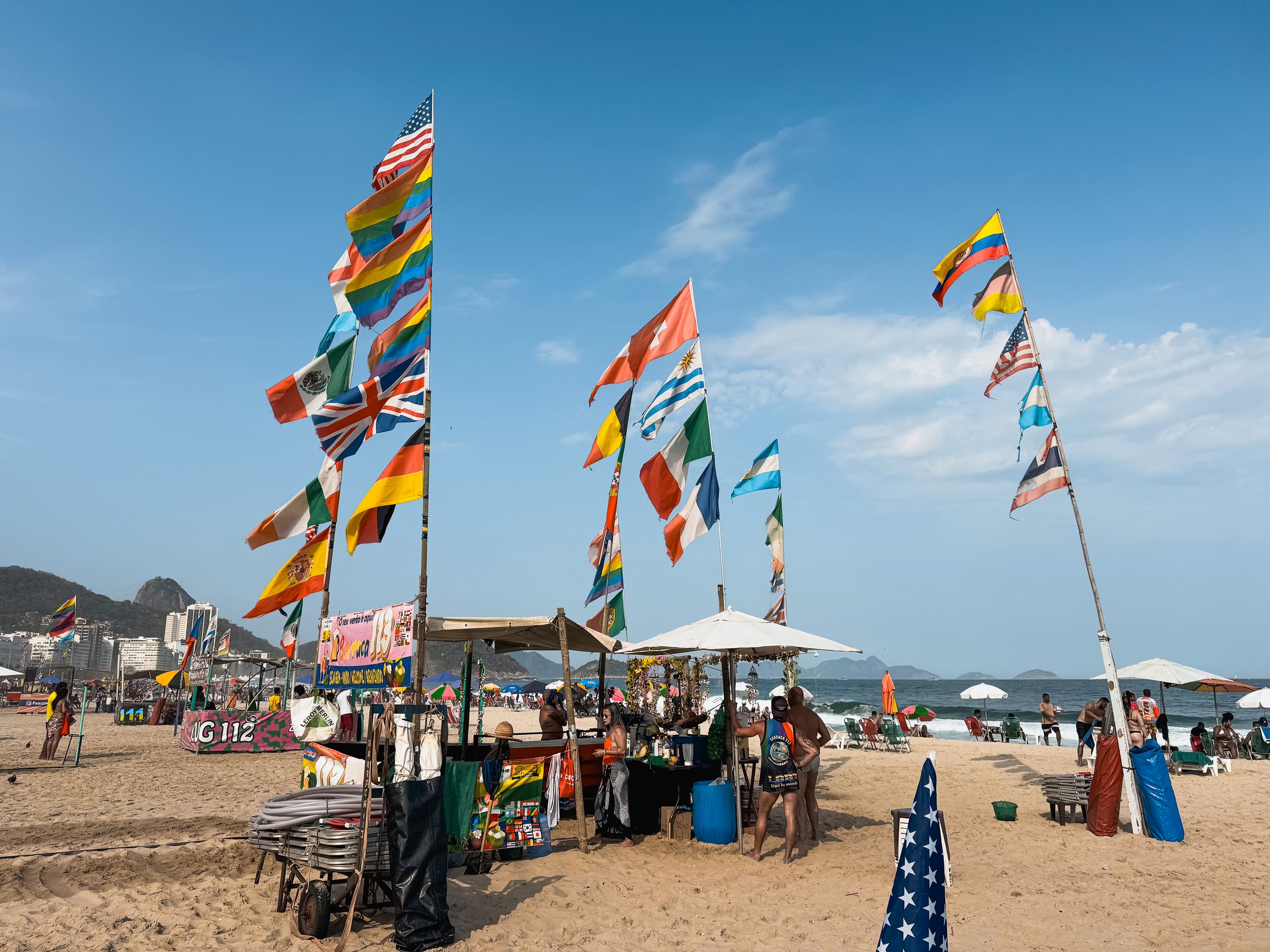

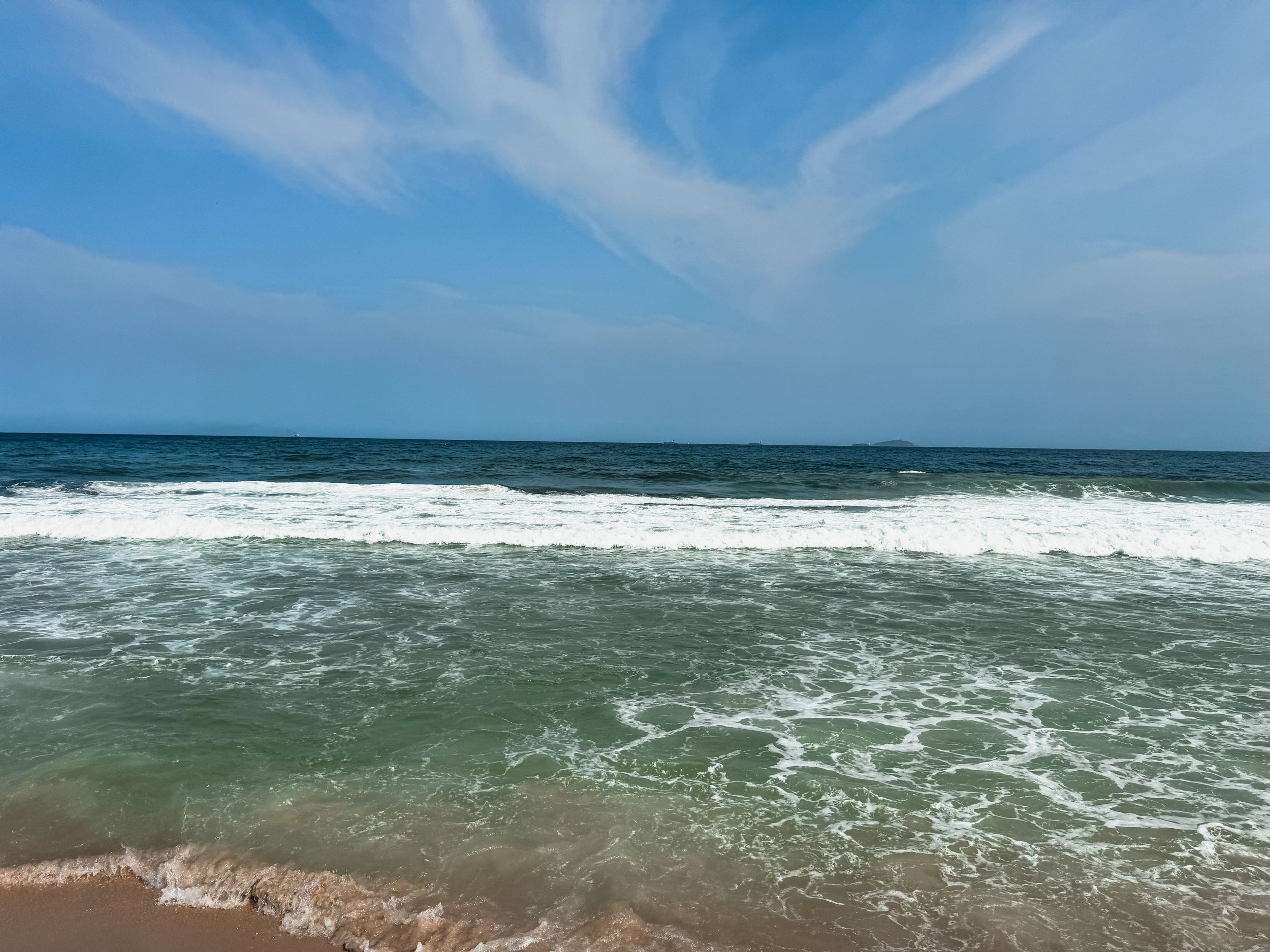
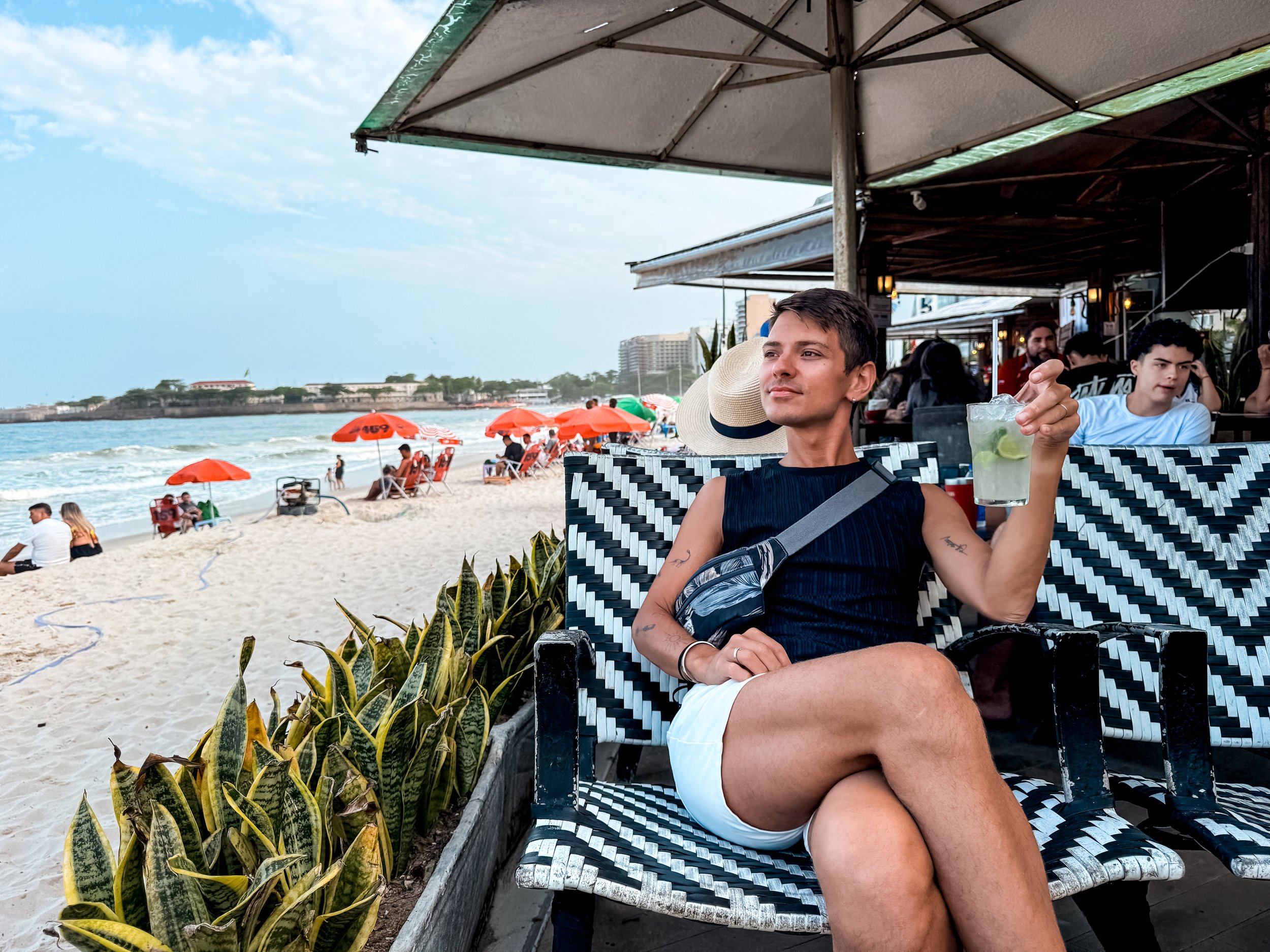
Copacabana Beach
Copacabana is a famous for its yellow sand beach lined with colorful umbrellas and thousands of people relaxing under the Brazilian sun. At Borrachas (beach tents), vendors rent lounge chairs and umbrellas, sell coconuts, tropical cocktails and beverages. Food vendors walk the beach pushing carts with boiled corn, carry portable grills with smoked cheese and trays of skewered shrimp while others sell cigarettes & drugs.
All kinds of people visit Copacabana Beach. Vendors fly dozens flags as welcoming symbols to attract foreign tourists, sports fans, gays and other Brazilians. There’s not a specific gay section though most gays congregate anywhere around the large and numerous rainbow flags. It can be a sporty spot, we watched as guys played competitive games of foot volley and others jogged by shirtless along the promenade as we sipped on caipirinhas.
Atlantic Promenade. The black and white tiled promenade is lined with beachside restaurants and bars. We walked along its entire length, taking advantage of the 2 for $R20 caipirinhas ($3.50 USD). Across the street, along Atlantic Avenue, skyscrapers, upscale restaurants, hotels and residences provide a metropolitan feeling to the beachy atmosphere. There’s no bad spot along Copacabana Beach but the best views are from the west looking towards Sugarloaf Mountain.
Joaquina Restaurant. A restaurant in Copacabana with contemporary versions of classic Brazilian dishes and cocktails made with Brazilian fruits and syrups. We ordered the tapioca breaded shrimp with passion fruit mango sauce and the seafood moqueca made with dorado, plantain, farina and a thick fish broth.
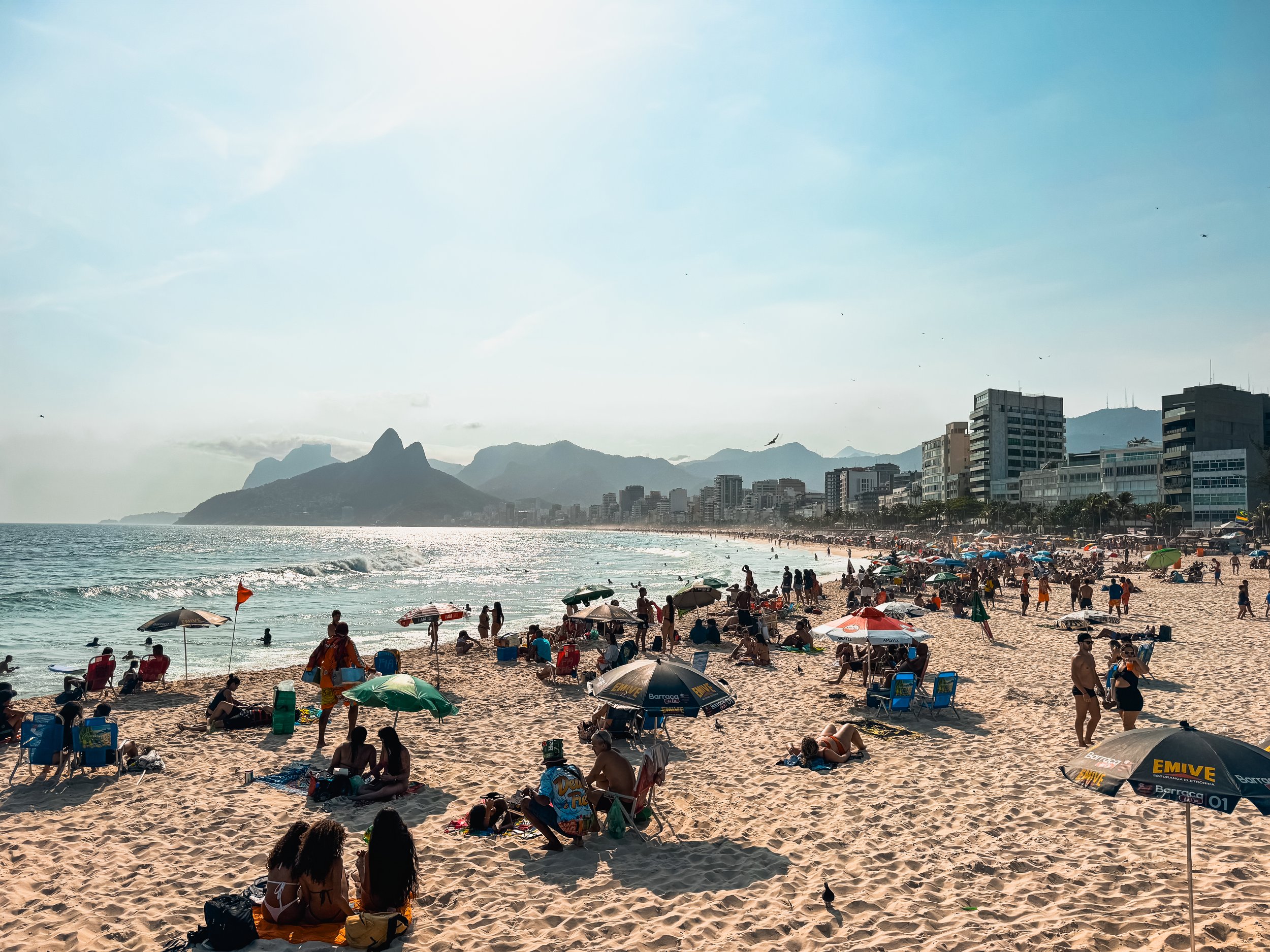
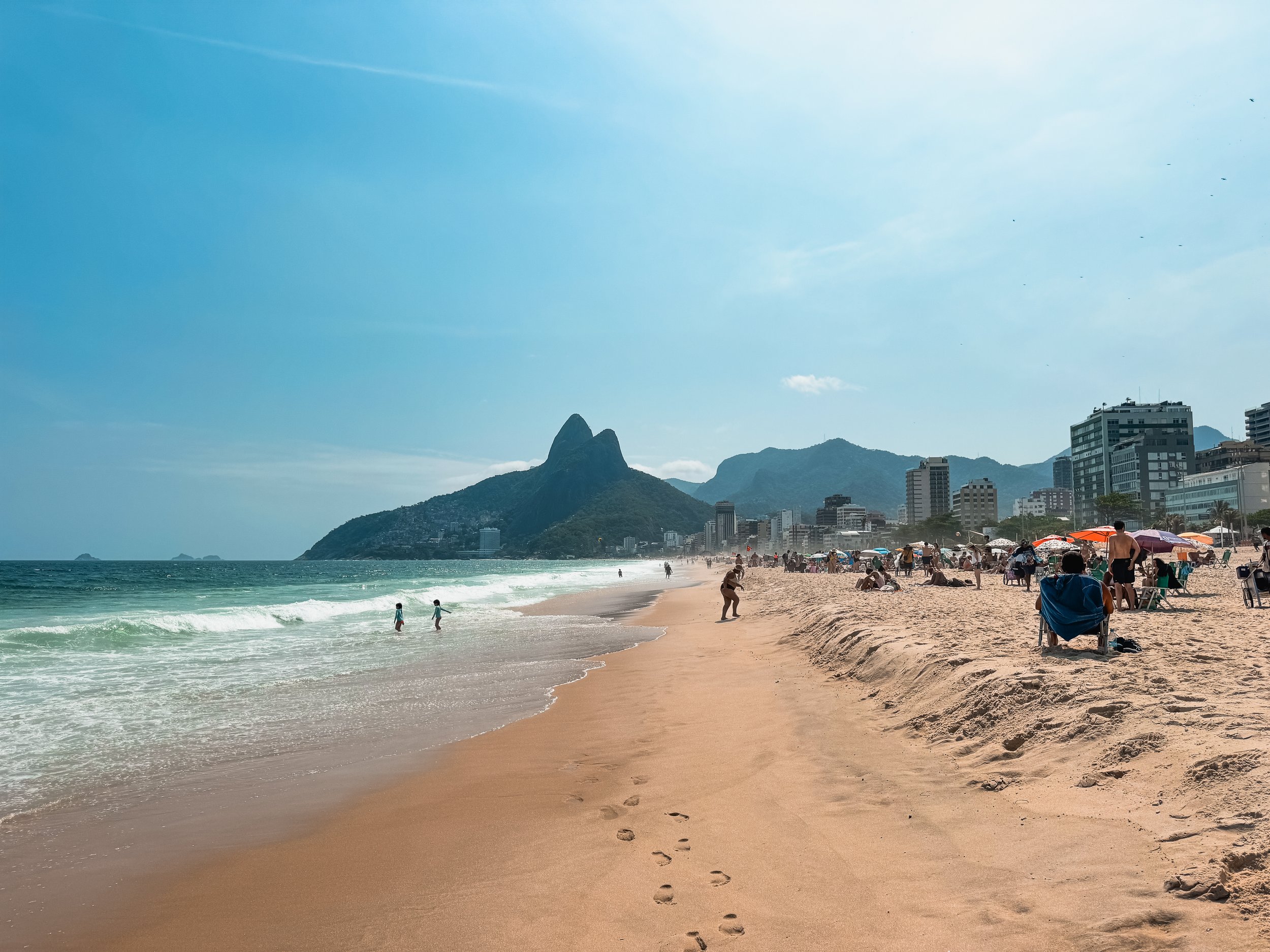
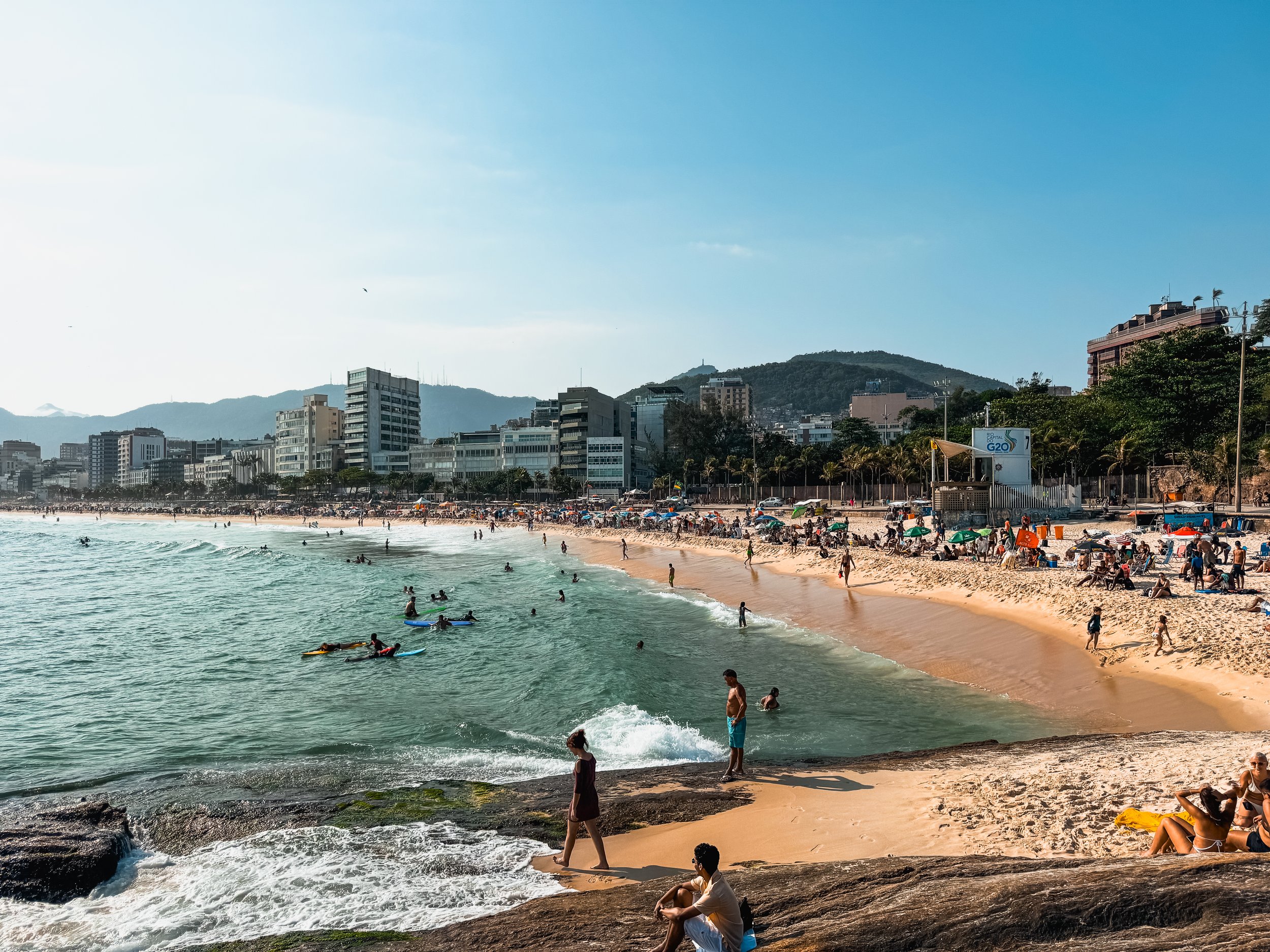
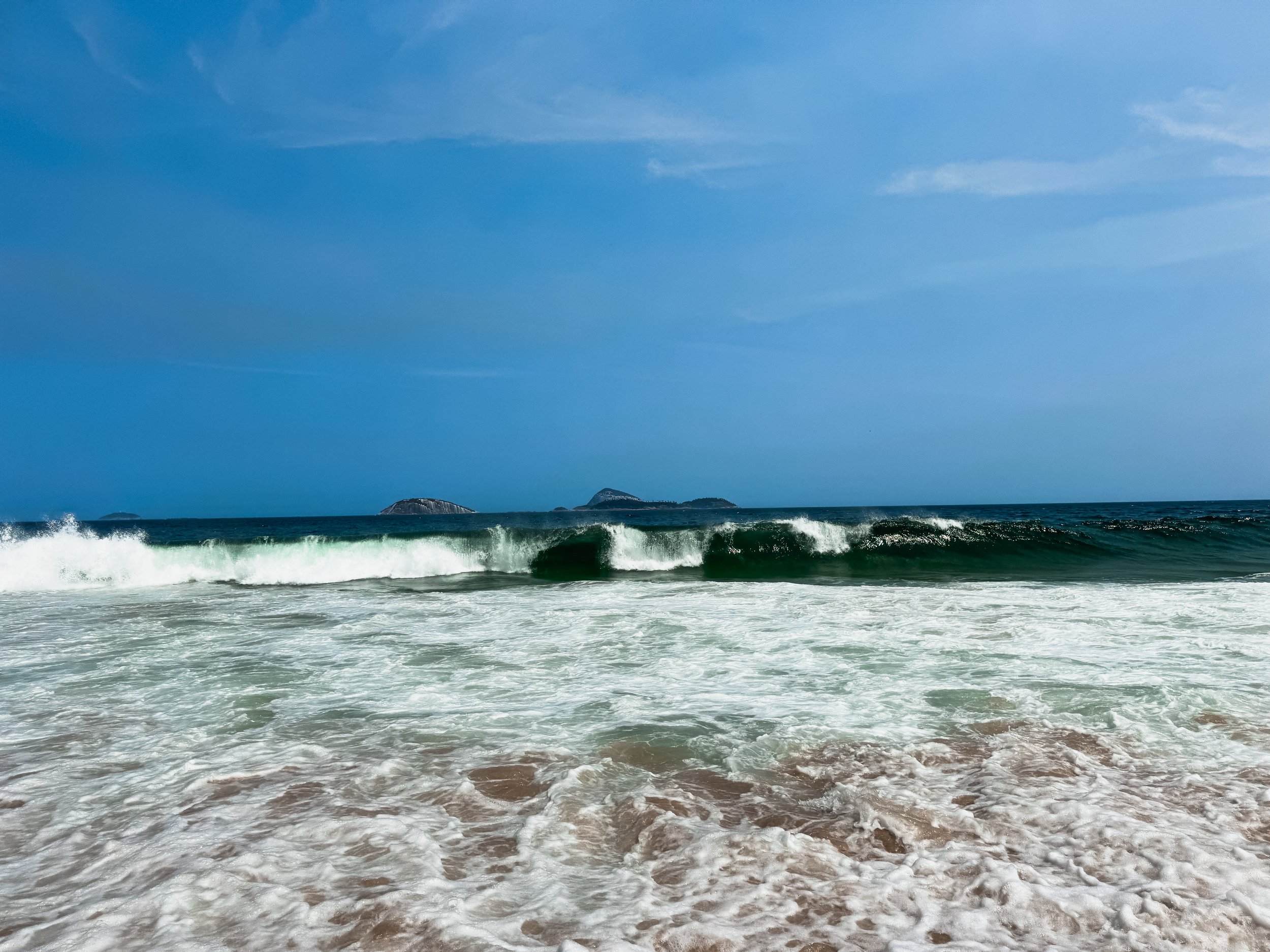
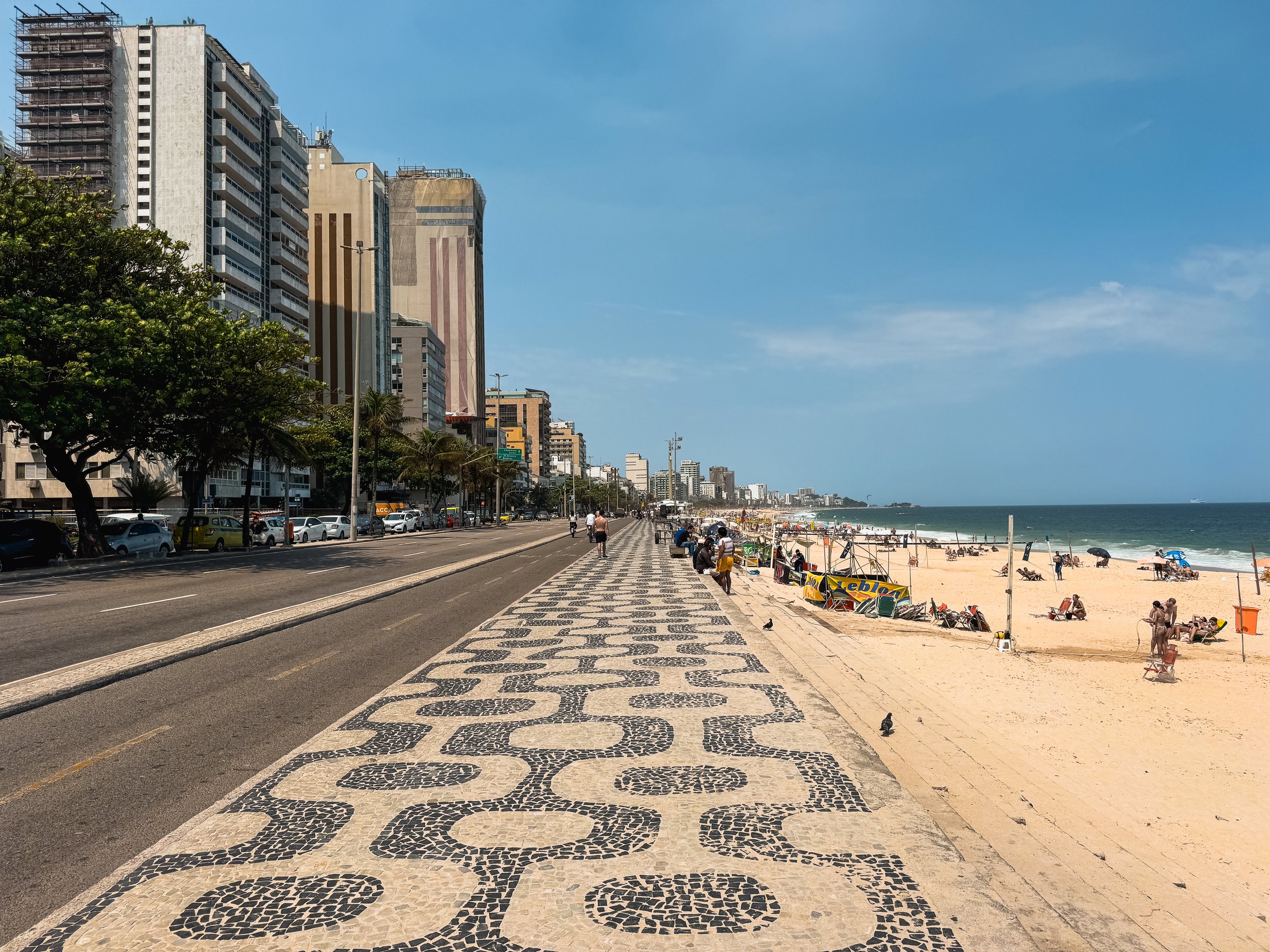
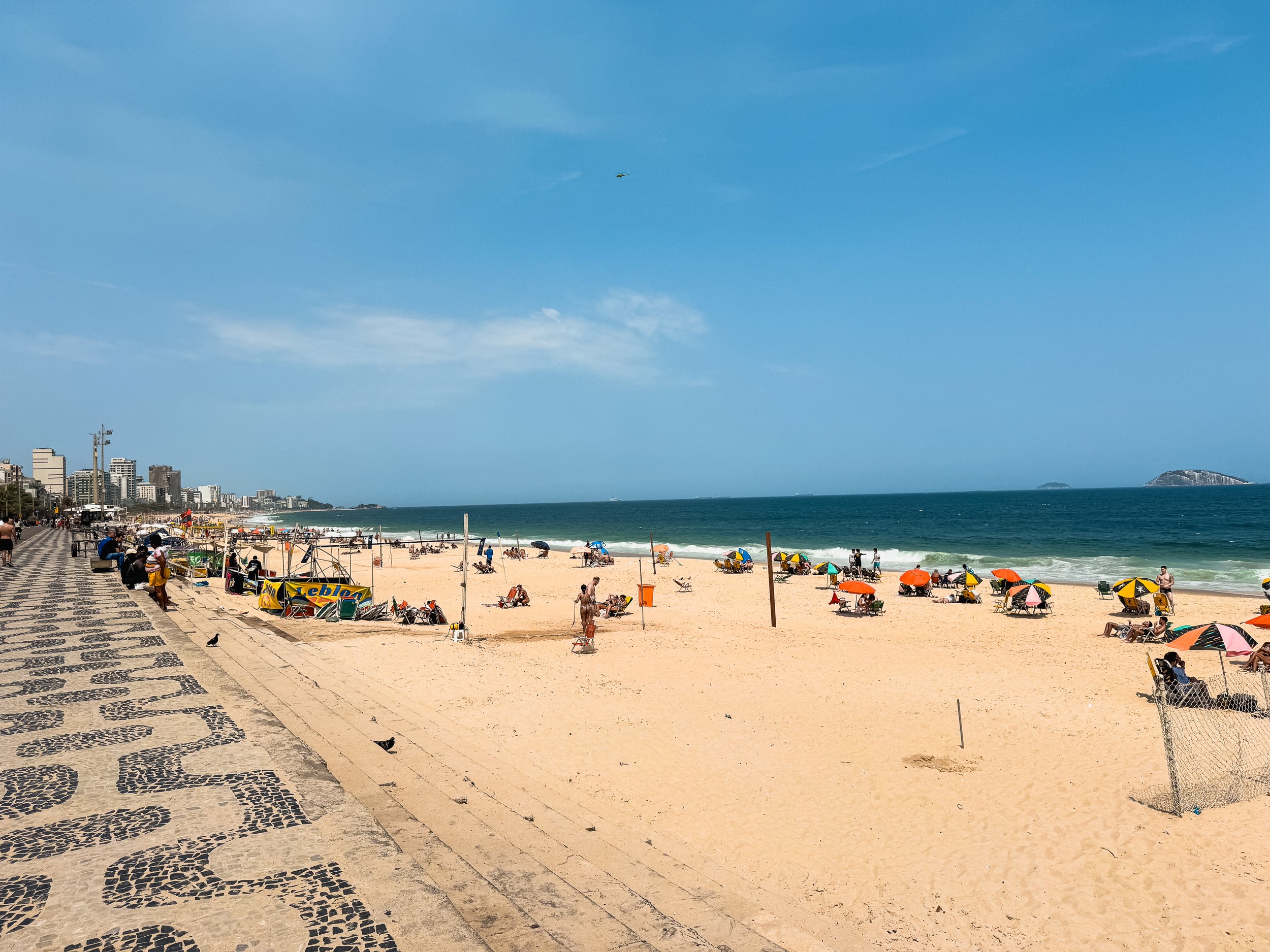
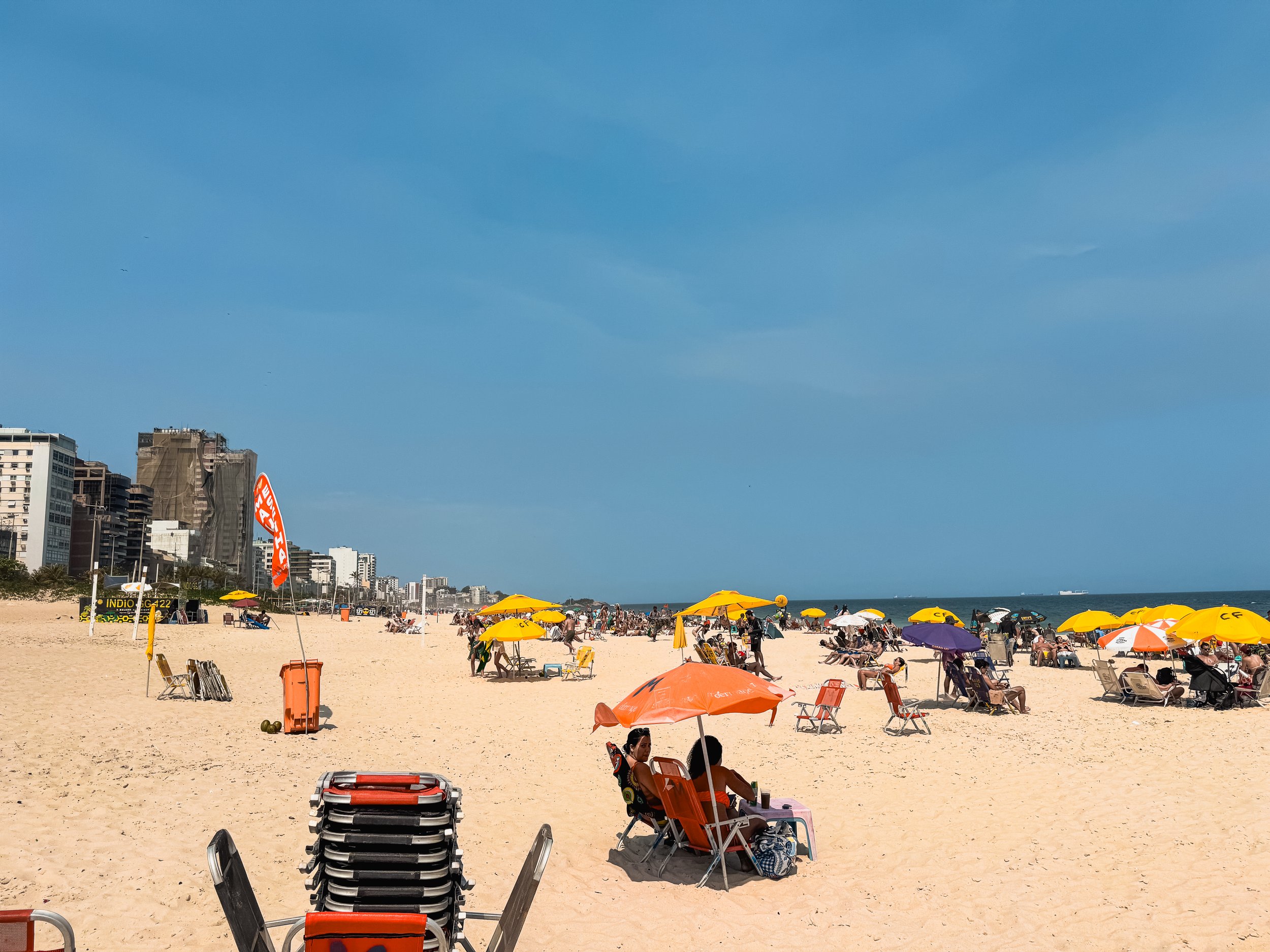
Ipanema Beach
Ipanema is known for its iconic yellow sand beach similar in many regards to Copacabana. It’s popular for swimming, surfing, foot volley and sunsets with over 100 brarrachas selling drinks, snacks and beachwear. The gays like to congregate between Barrachas 57-64. Its tiled promenade is routinely used for walking, jogging and biking and admiring the elegant architecture. The best views are looking west towards Morro Dois Irmãos.
Arpoador Rock. A rocky outcrop with trails overlooking Ipanema Beach. It’s a popular spot to watch the sunset and take surf lessons.
Leblon Beach. A continuation of Ipanema Beach west of the canal in the wealthiest neighborhood of the city.
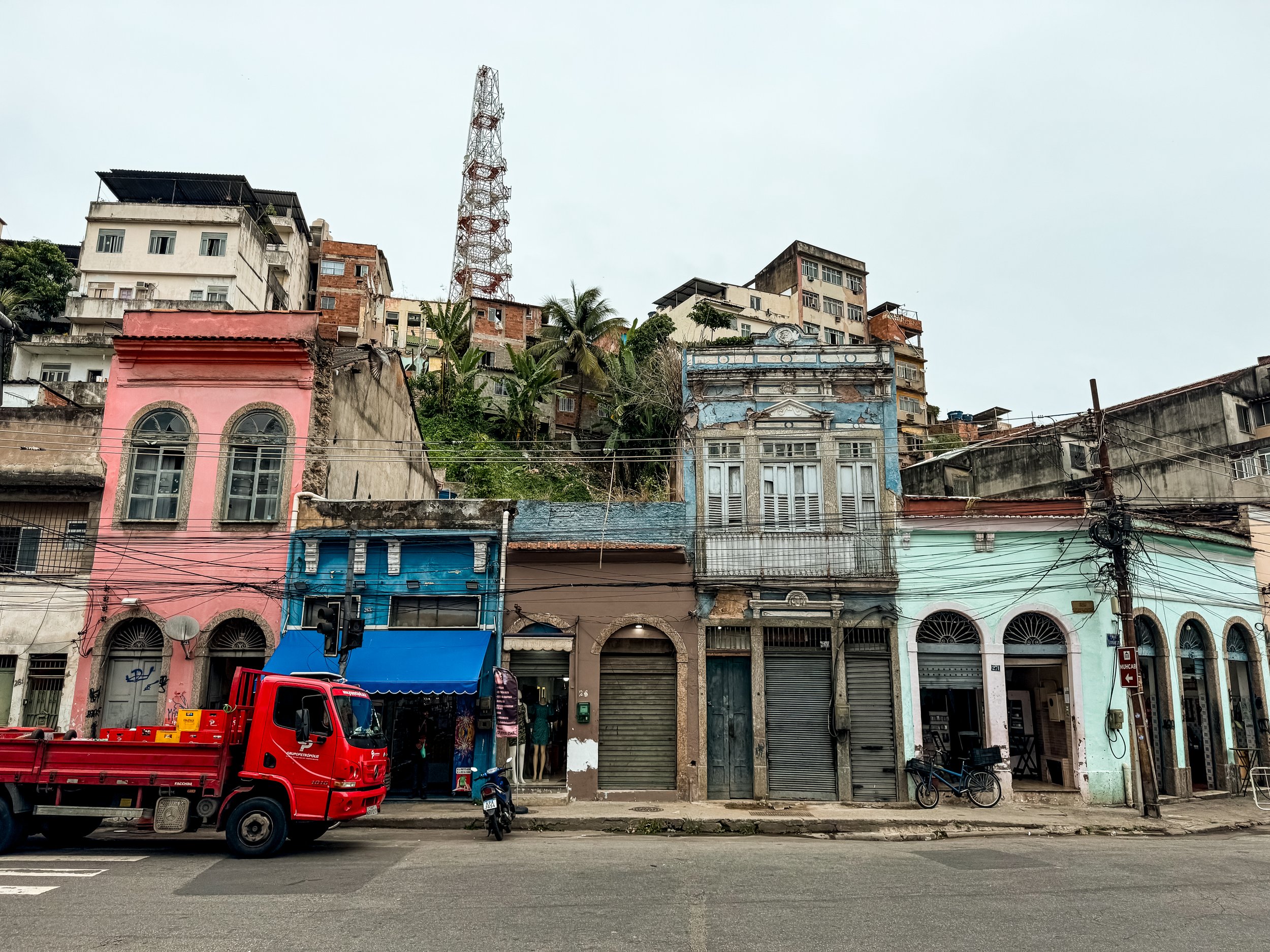

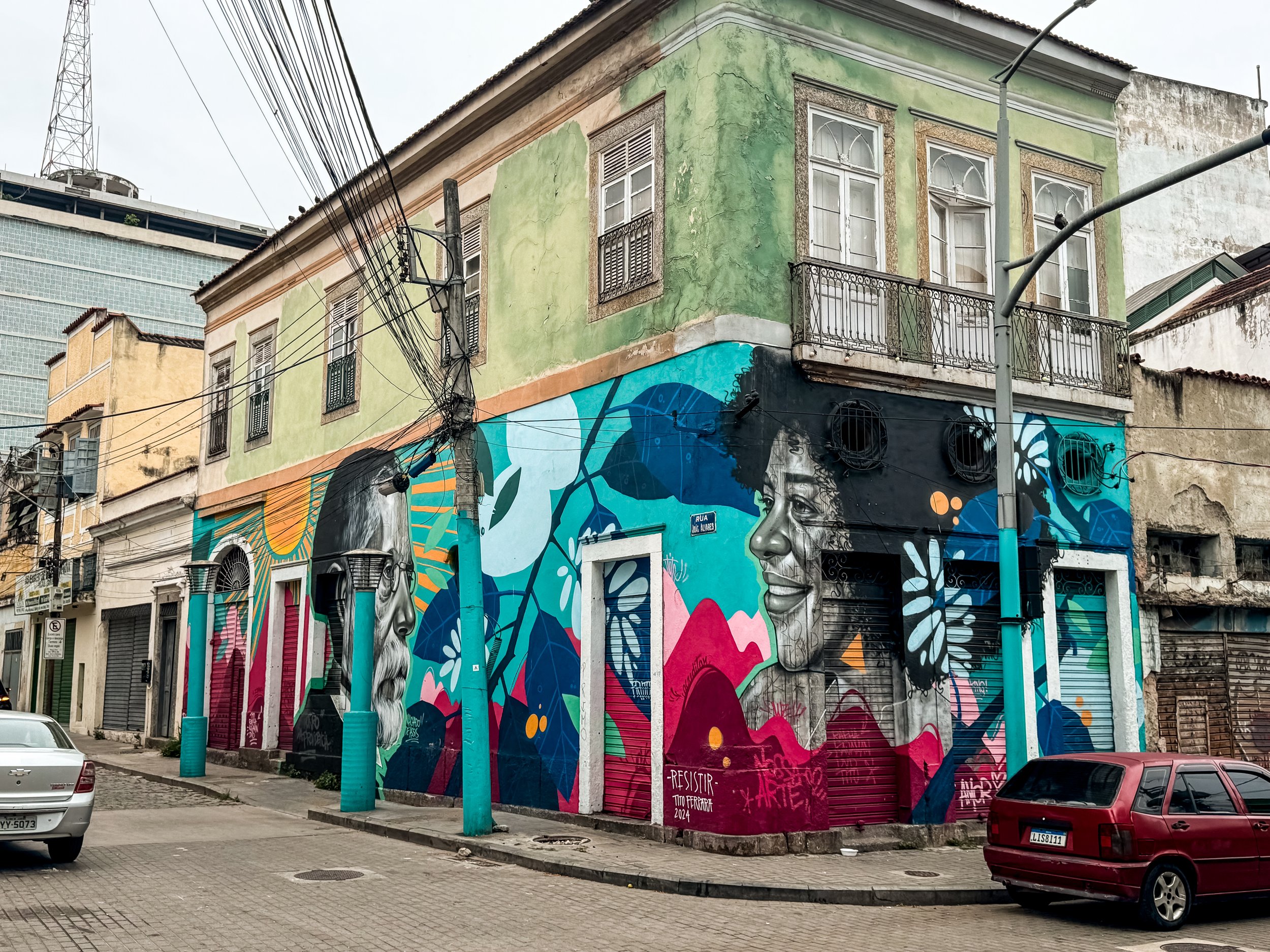
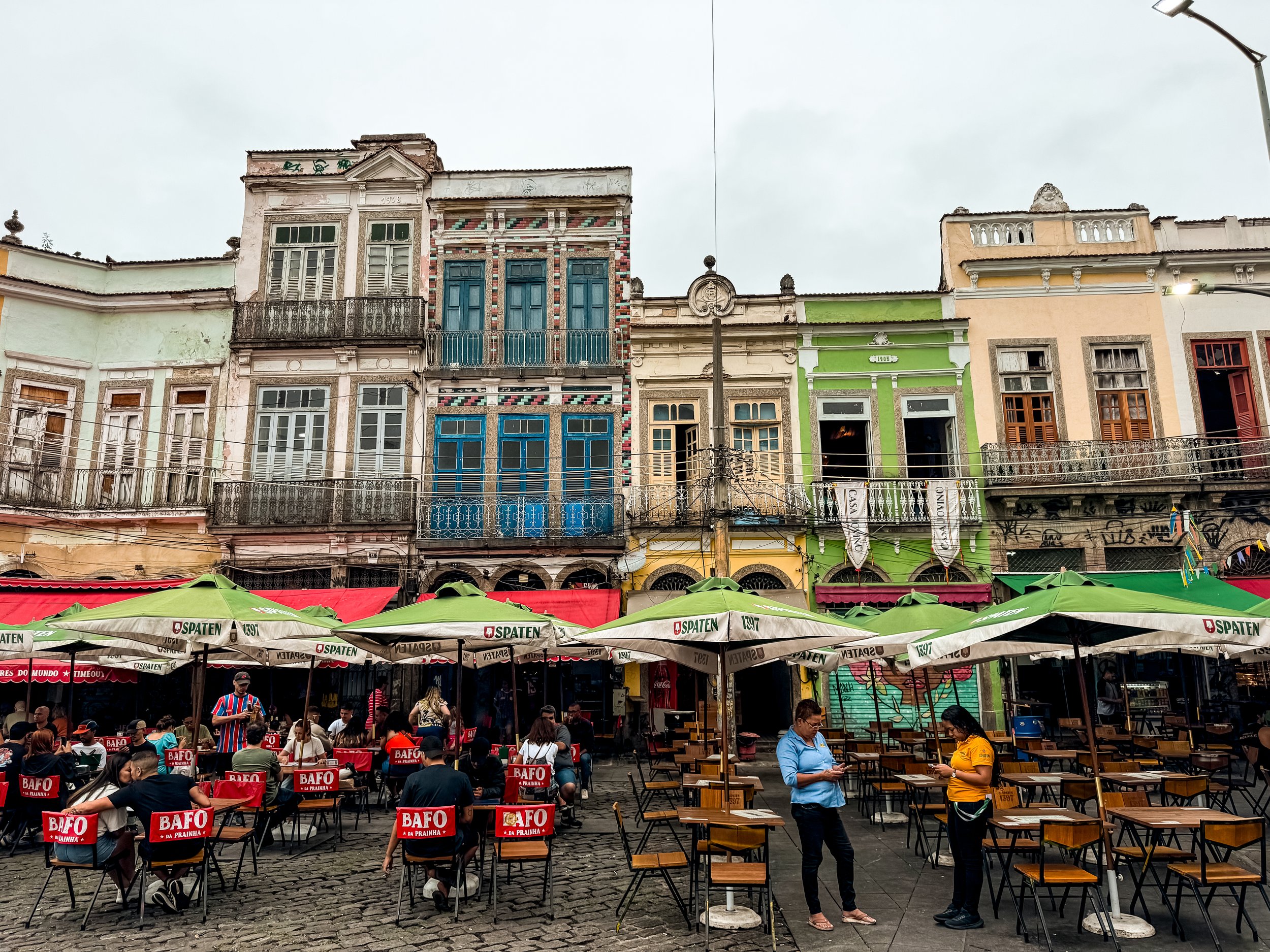
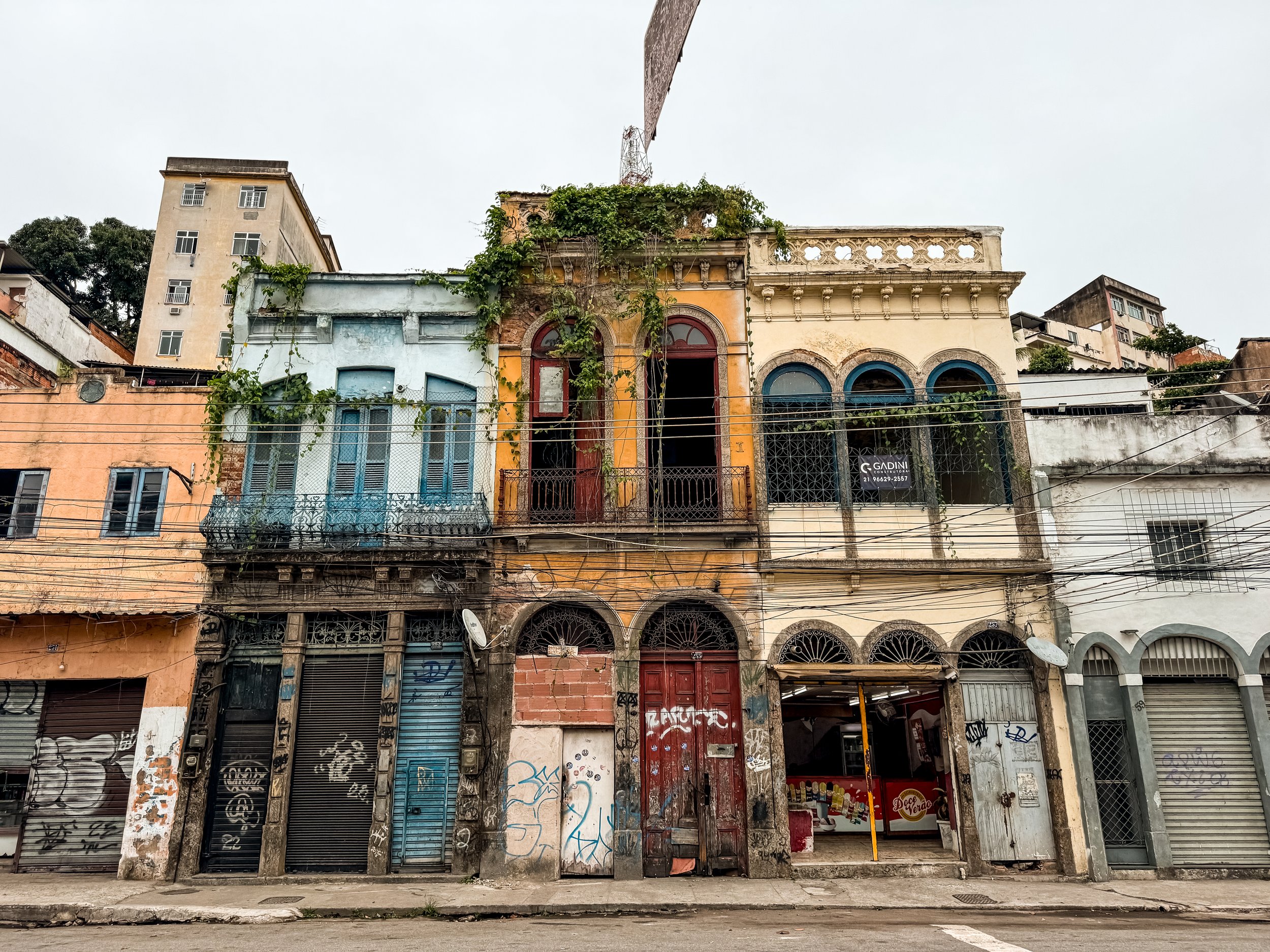
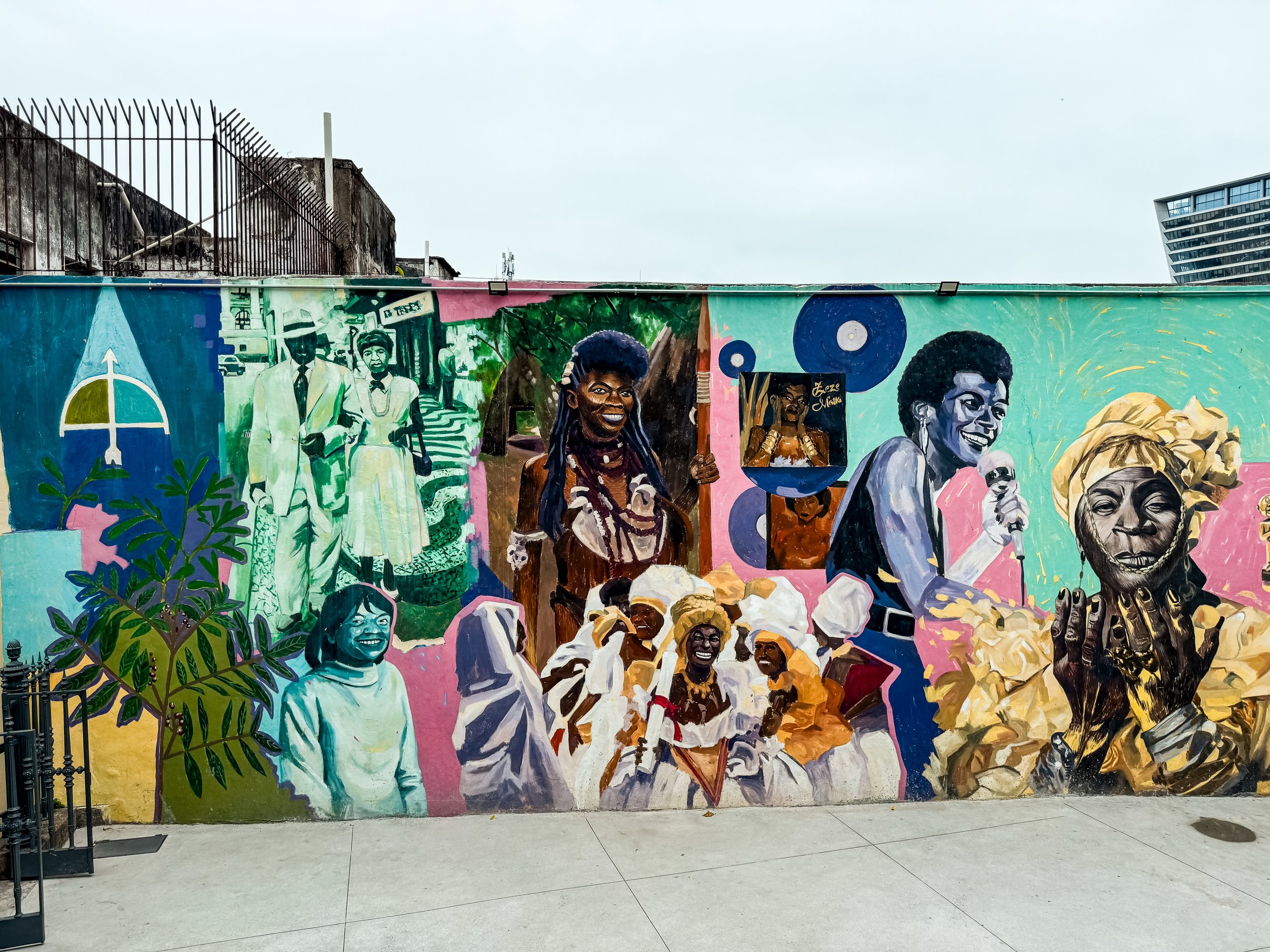
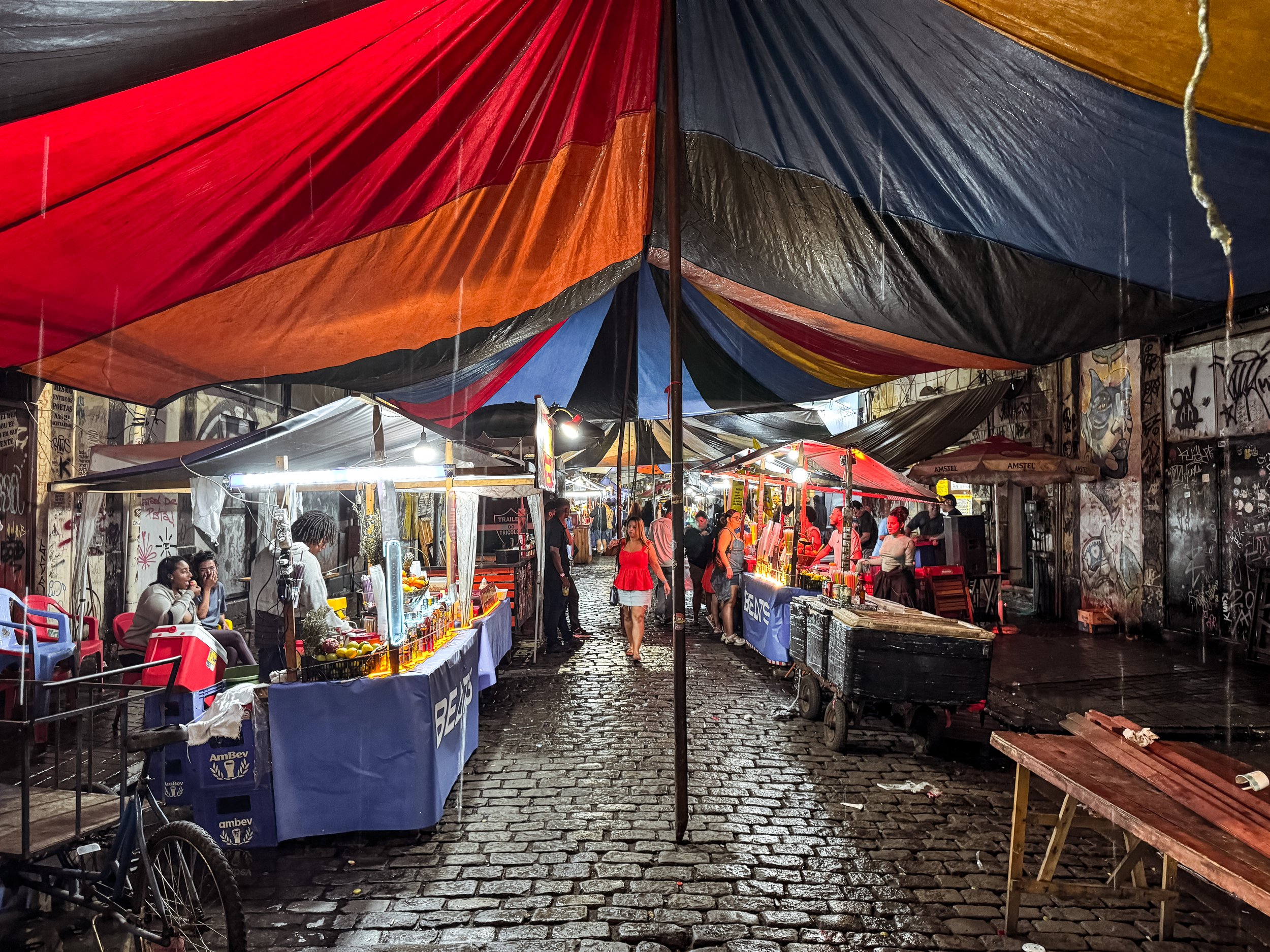
Little Africa
Little Africa is a historic neighborhood home to a large Afro-Brazilian population, many of which are the descendants of enslaved Africans brought to Brazil. Come here to learn about the neighborhood’s history, see the quilombos (favelas), admire the street art and dance to live Samba music.
Museu da História e da Cultura Afro-Brasileira (MUHCAB). Located in Little Africa, this museum is dedicated to Afro-Brazilian history and culture with exhibits on African enslavement, to emancipation and modern day. The museum features artwork, sculptures, textiles, artifacts and Samba music.
Pedra do Sal. Considered the birthplace of Samba, this historic spot in Rio’s Little Africa is home to a nightly party with live Samba music. Under the cover of a colorful tent, the street has an electric atmosphere with feeling for Favela culture. Music emanates between buildings as people dance in the street and sing along in unison. The street is lined with bar carts serving strong caipirinhas and restaurants selling Brazilian snacks. The party starts at sunset and continues into the early morning with Monday and Friday being the liveliest nights.
Escada da Bandeira do Brasil. A small staircase painted in the Brazilian flag at the end of a historic alleyway.
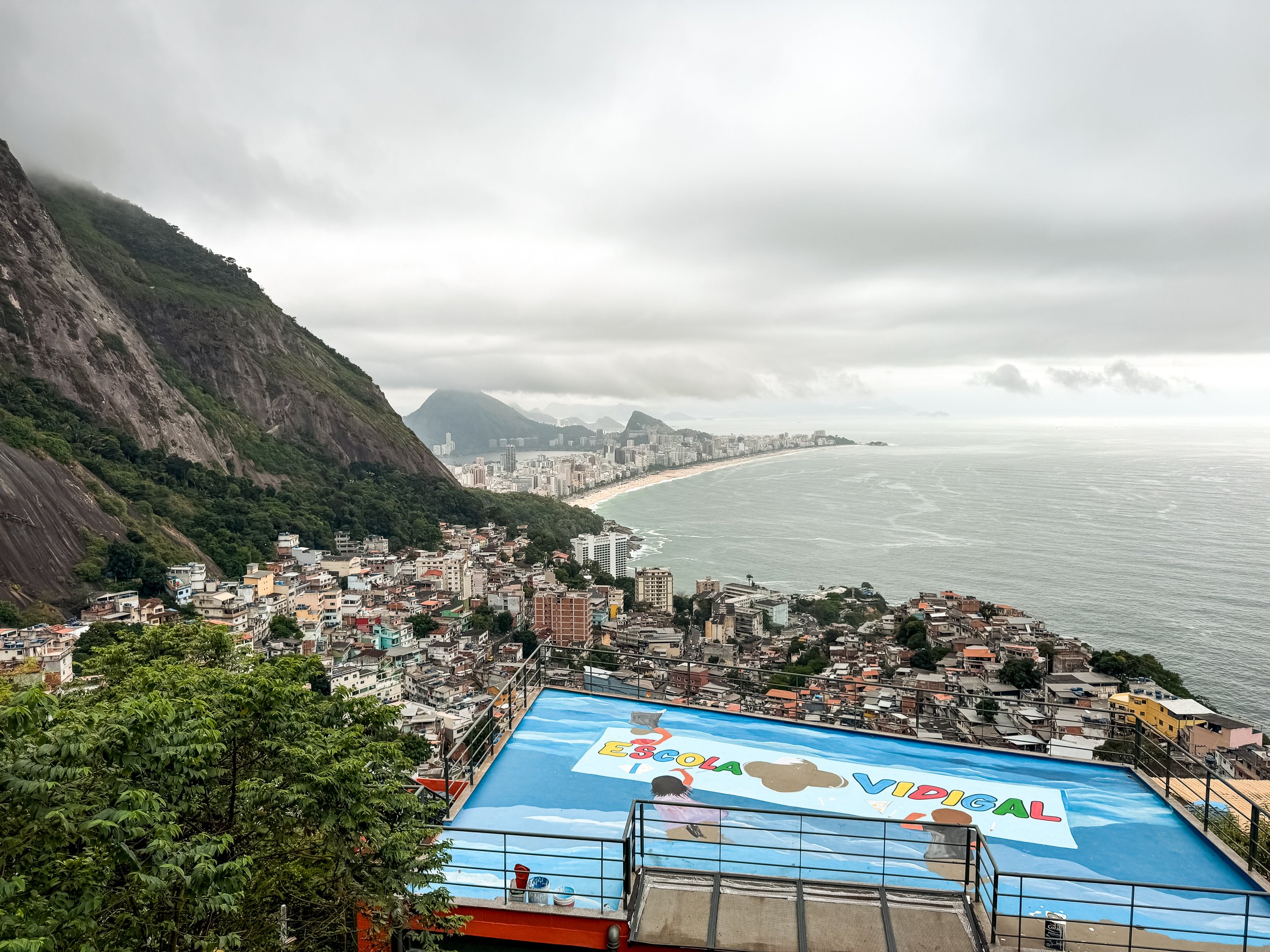
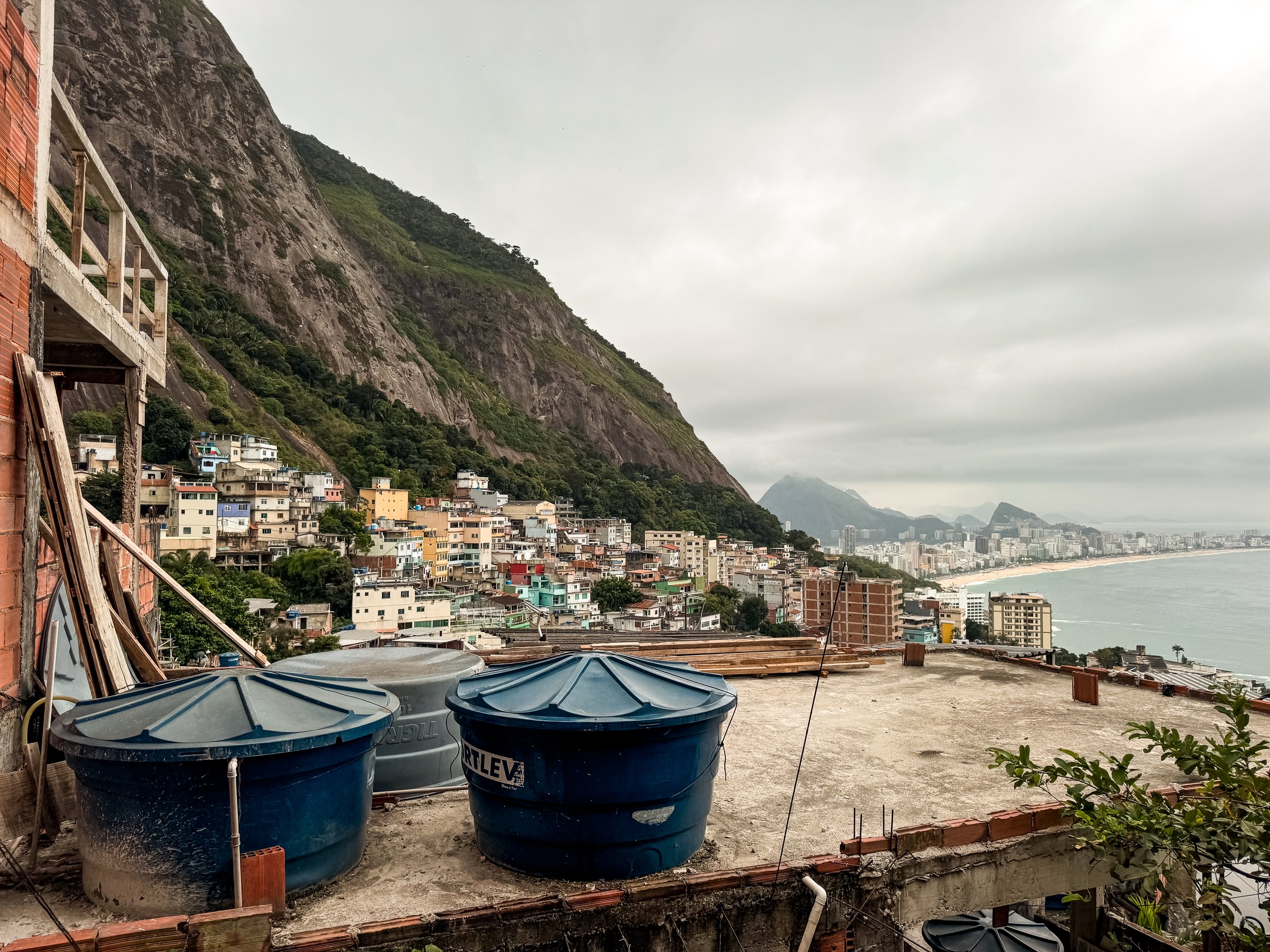
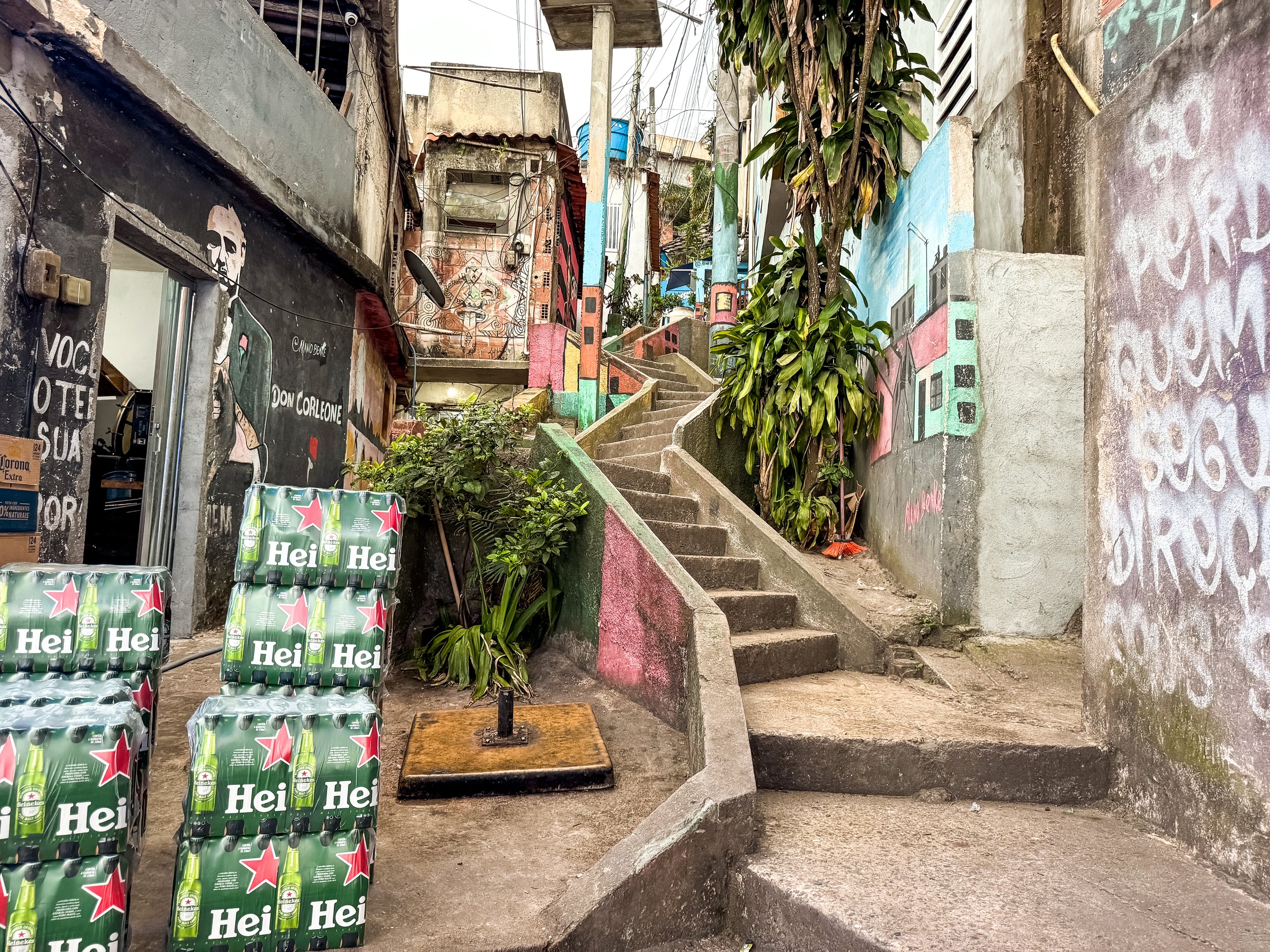
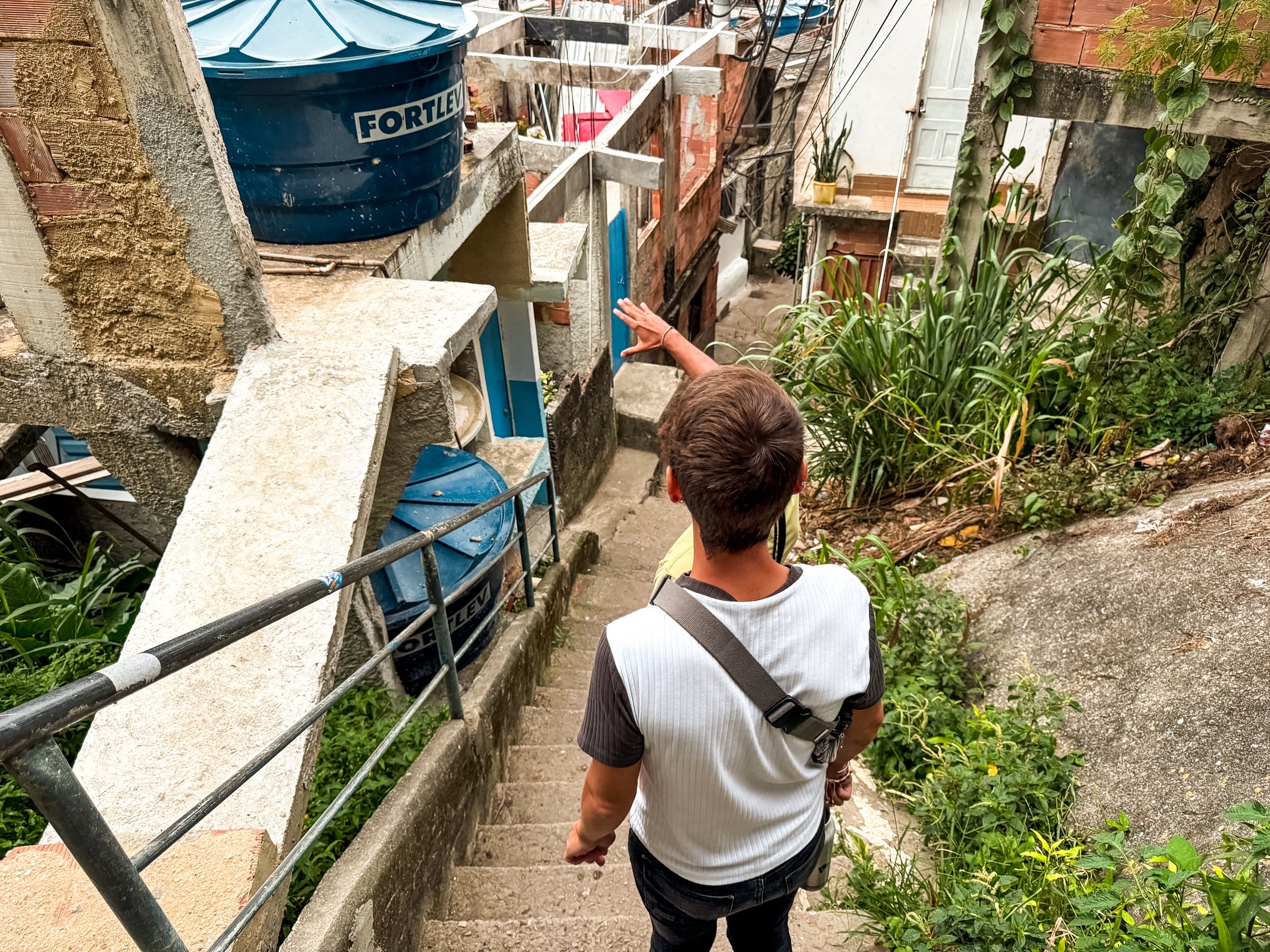
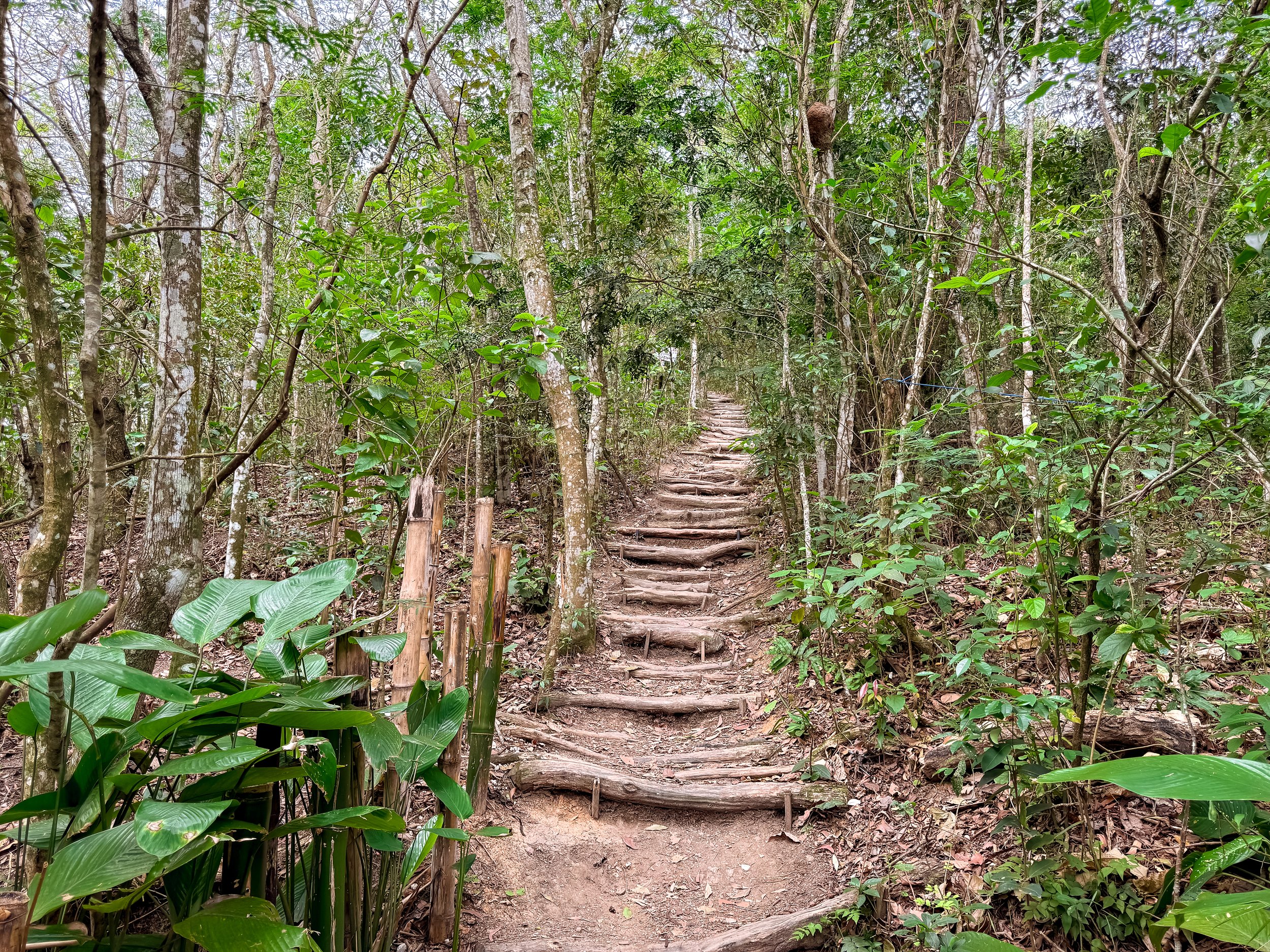
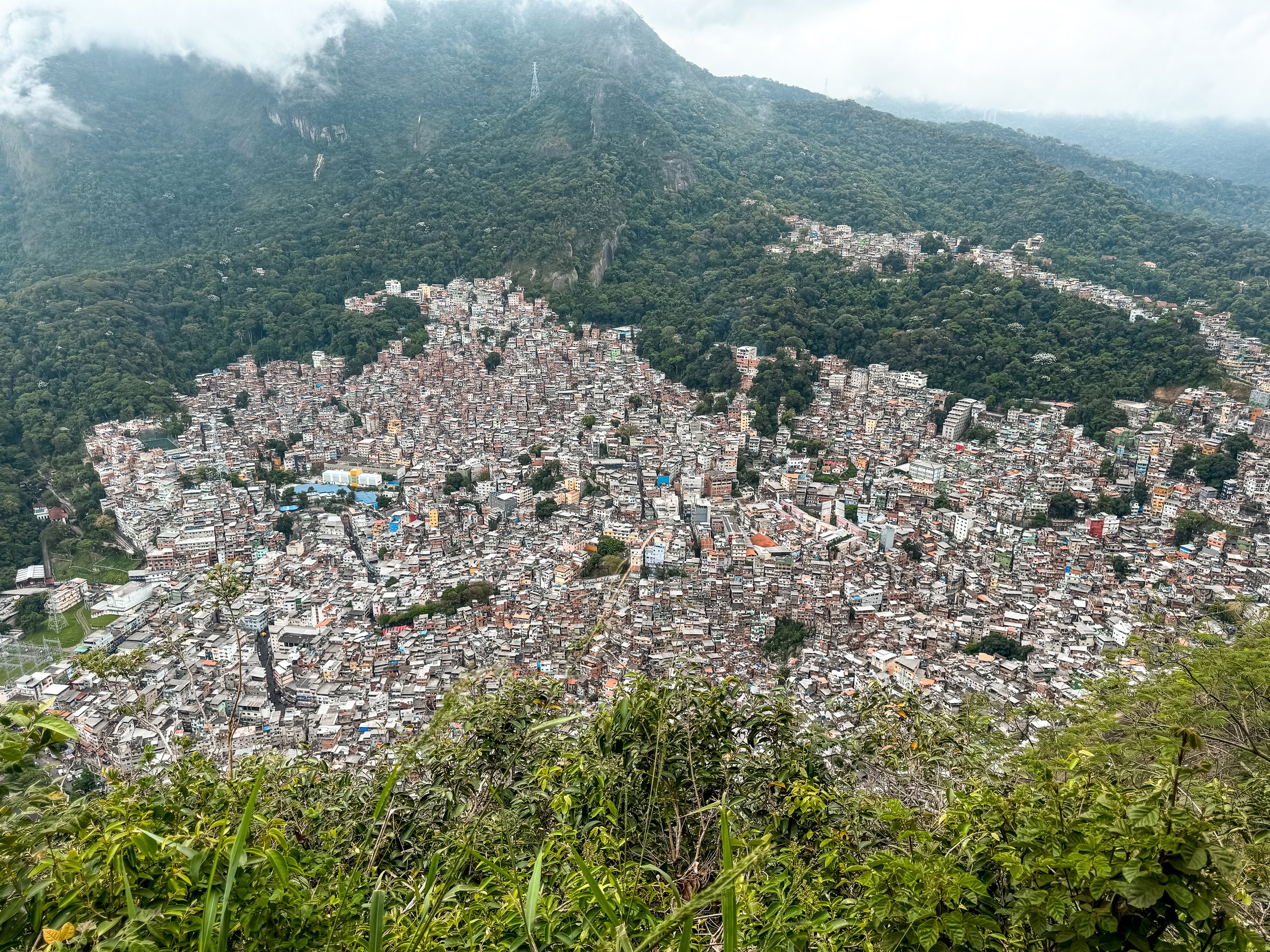
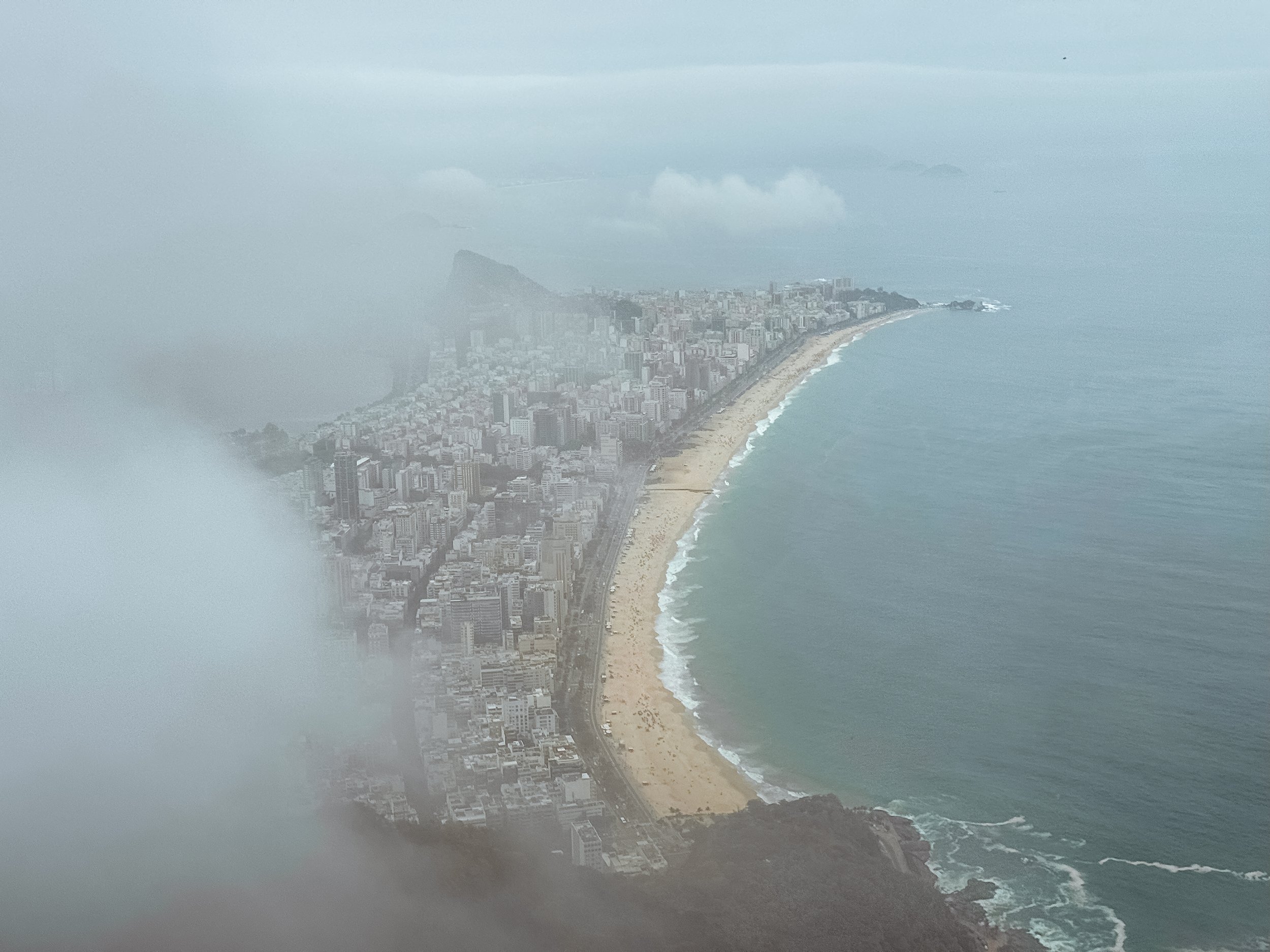
Vidigal Favela
Vidigal is a favela built on the side of the Morro Dois Irmaos. It’s the ‘safest’ of the favelas in Rio and welcoming of tourists with guided tours. We visited with a local guide who toured us through the favela, showed us how people live and explained its history with gangs and government “pacification.”
Vidigal is a densely populated community with narrow winding walkways, steep staircases and unfinished houses built on the hill in very close proximity to each other. The main road through the favela has all the businesses you would typically see in a neighborhood including grocery stores, restaurants, bars, auto shops, churches, laundry mats, a health clinic and post office. The upper area of the favéla has a black market, rooftop bars and outdoor patios overlooking it and Ipanema. We stopped at one for a cold beer while enjoying the view.
The favela is “pacified” by the police but controlled by the Comando Vermelho gang. Their gang sign, CV, was gratified everywhere in the favela while gang members carrying assault rifles were omnipresent. Though we didn’t feel unsafe, it was good to have a guide helping us navigate through a traditionally unsafe community.
Morro Dois Irmaos. A mountain with twin granite peaks known as “The Two Brothers.” The mountain has hiking trails with views of Rio’s largest favela, Rocinha and of Ipanema Beach from the summit.
We took moto-taxis through the Vidigal Favela to reach the trail head. The trail led up rustic stairs until reaching a view of Rocinha. Along the way, we spotted a family of capuchin monkeys feating on jack fruit in a tree. We hiked even further up the dirt trail until reaching the summit of “Big Brother” where we were fully in the clouds. After waiting around, we got to see glimpses of Ipanema beach through brief clearings. Book here!
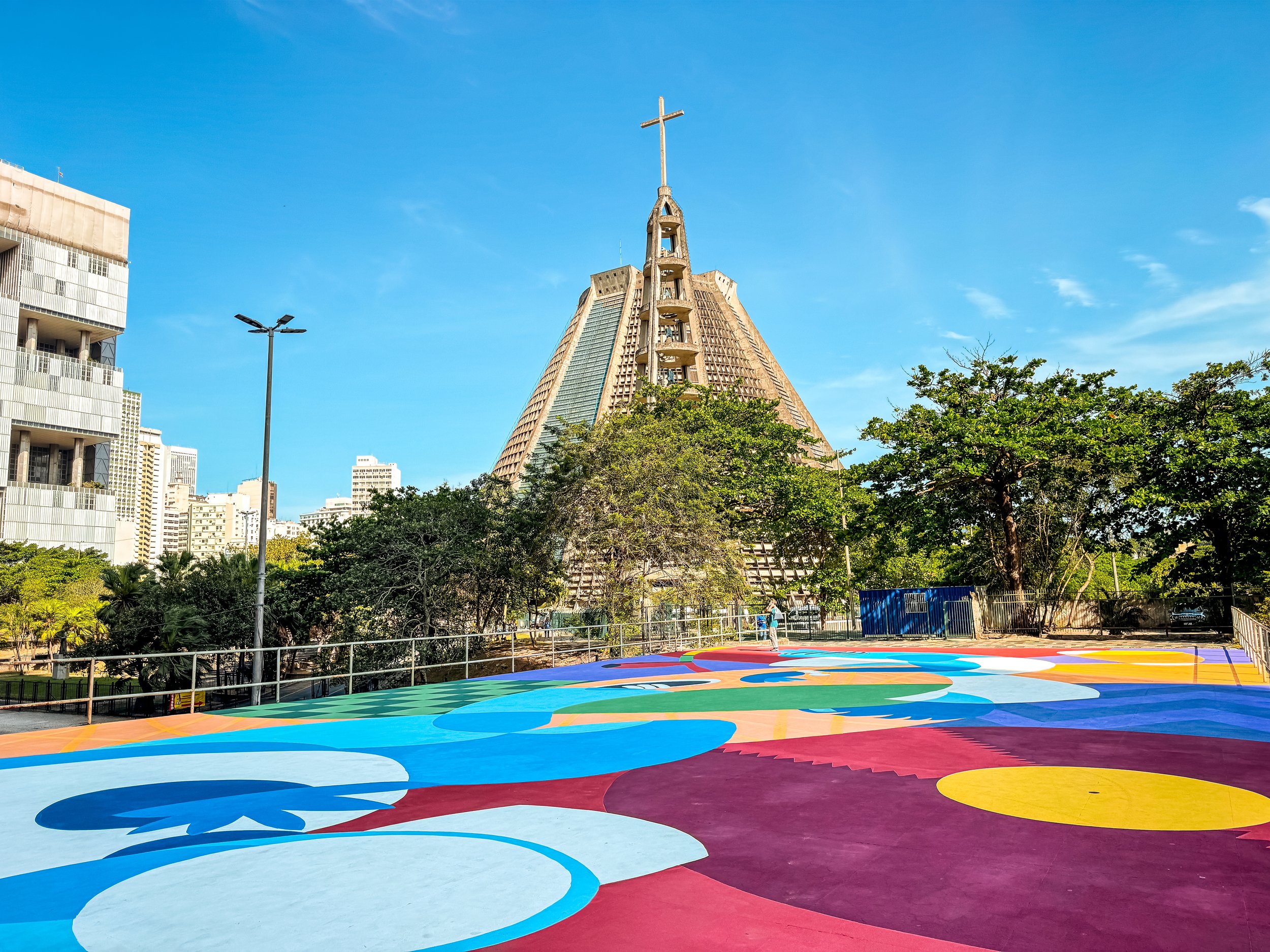

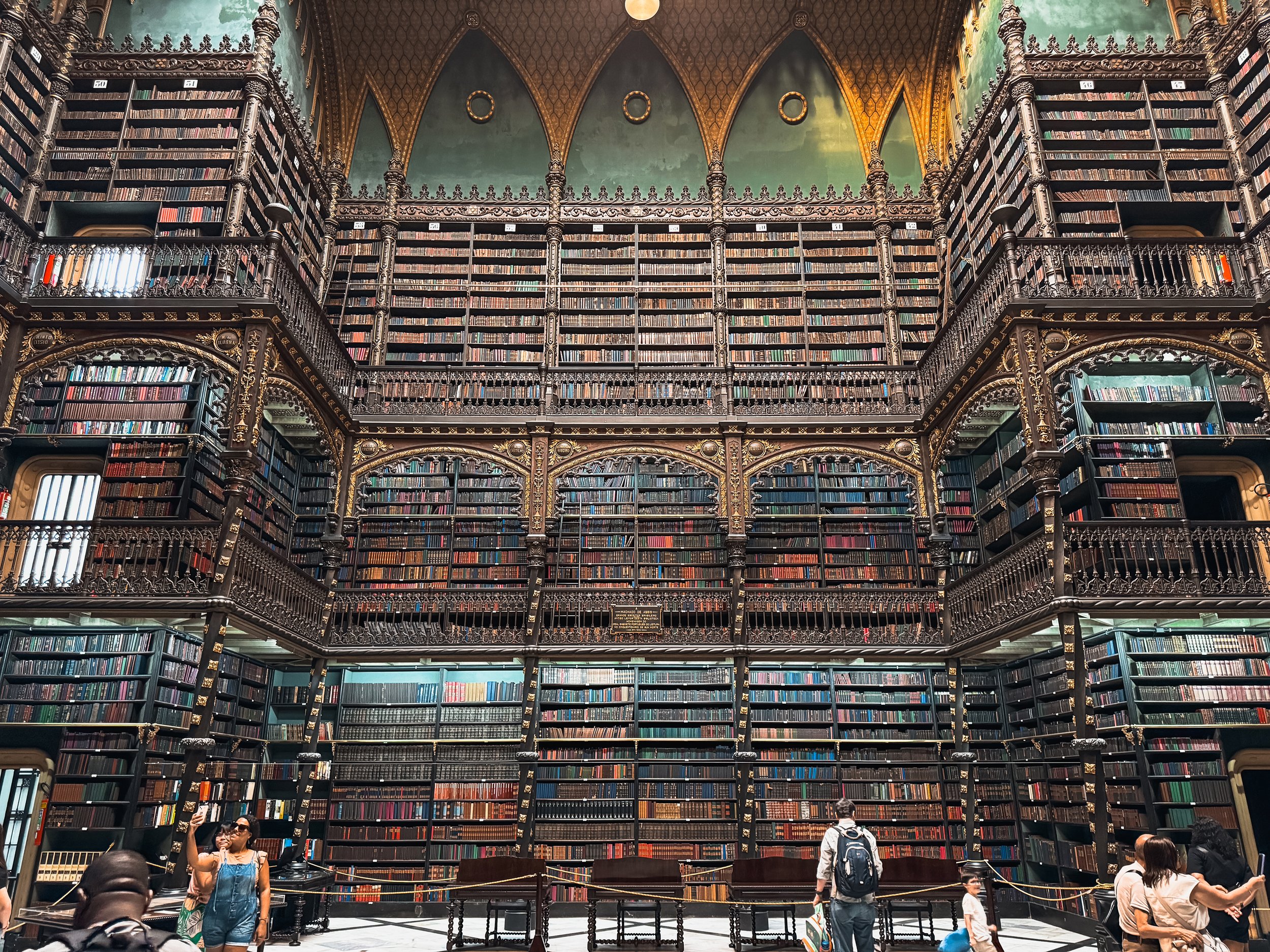
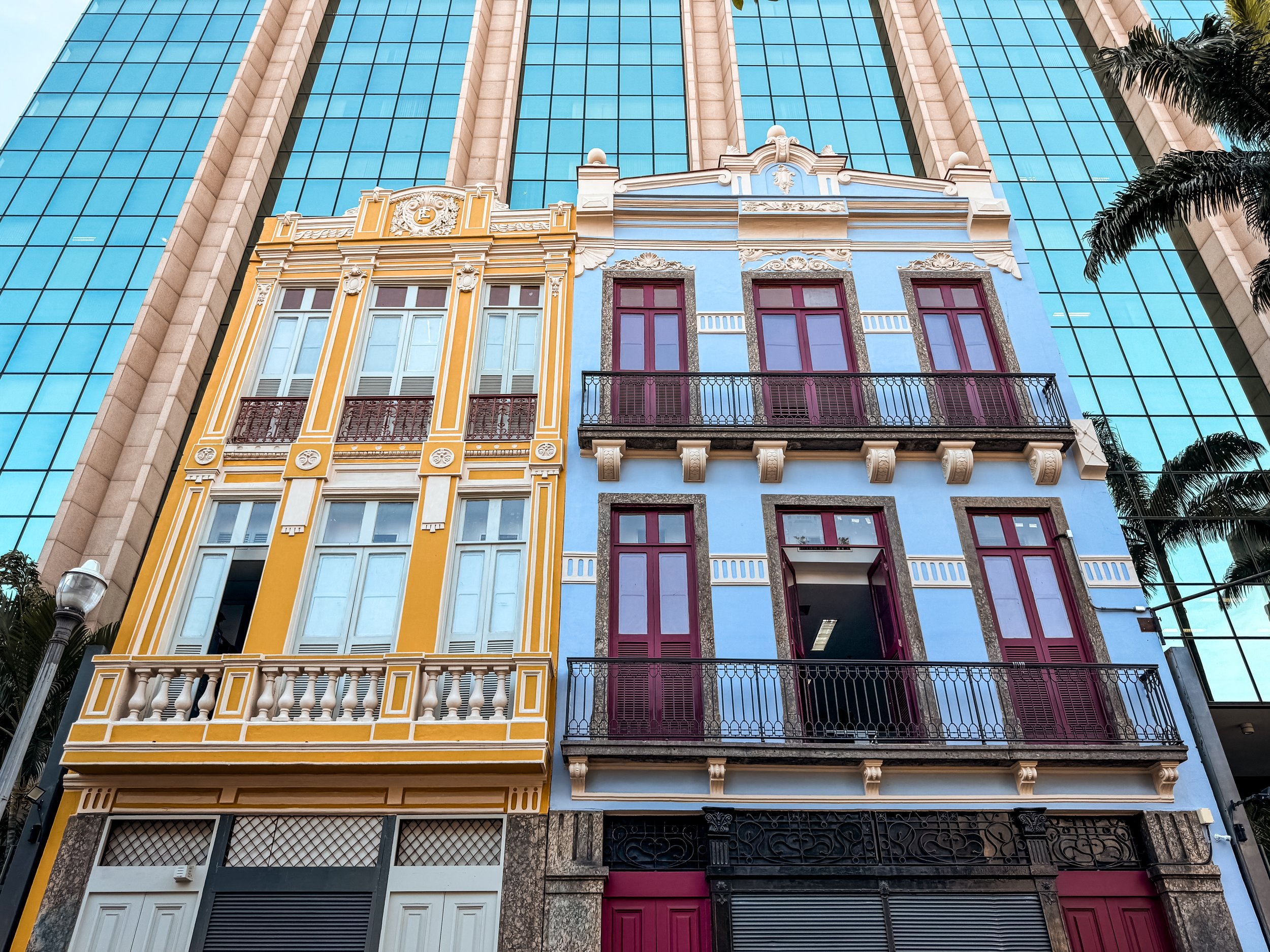

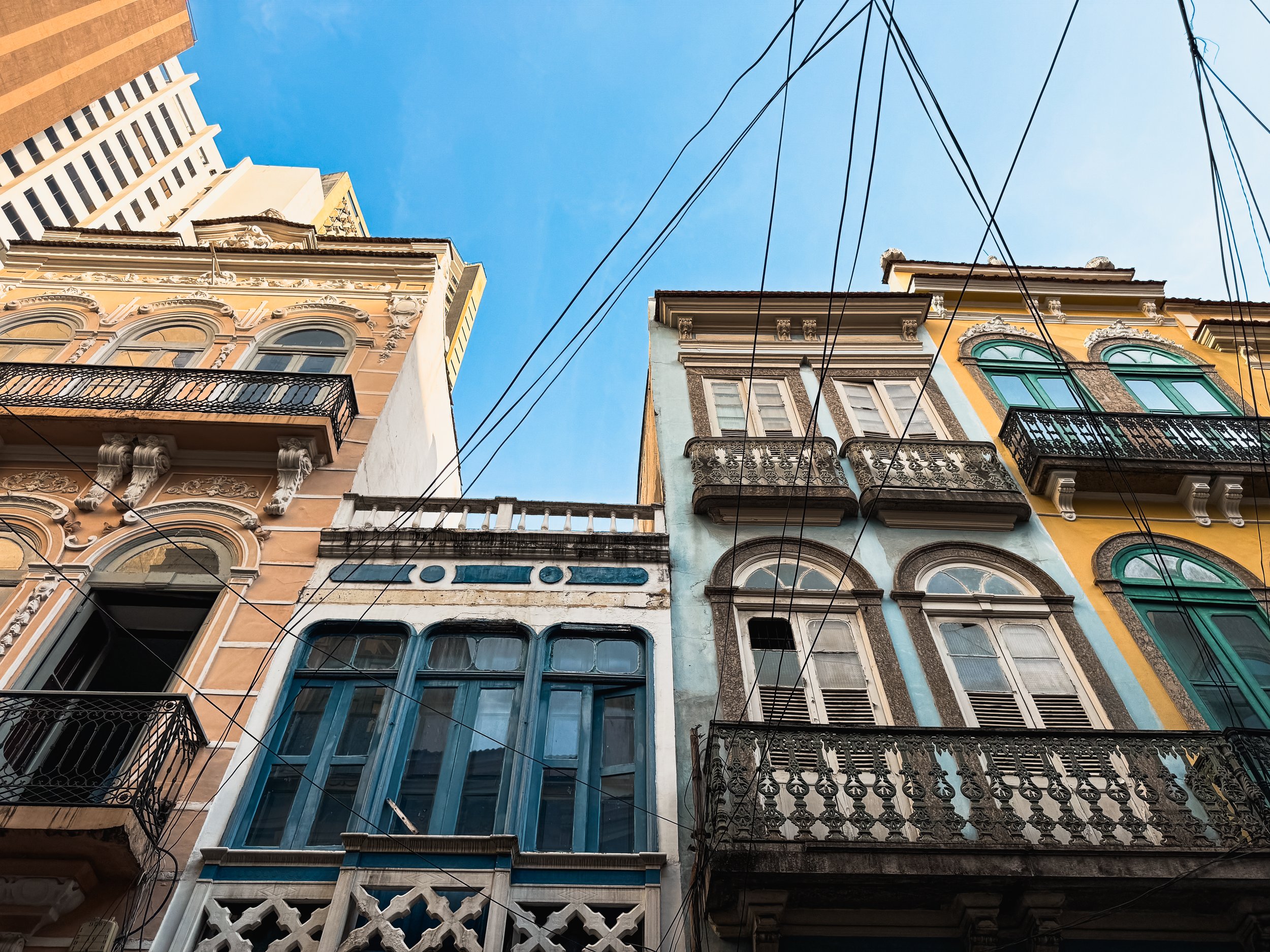
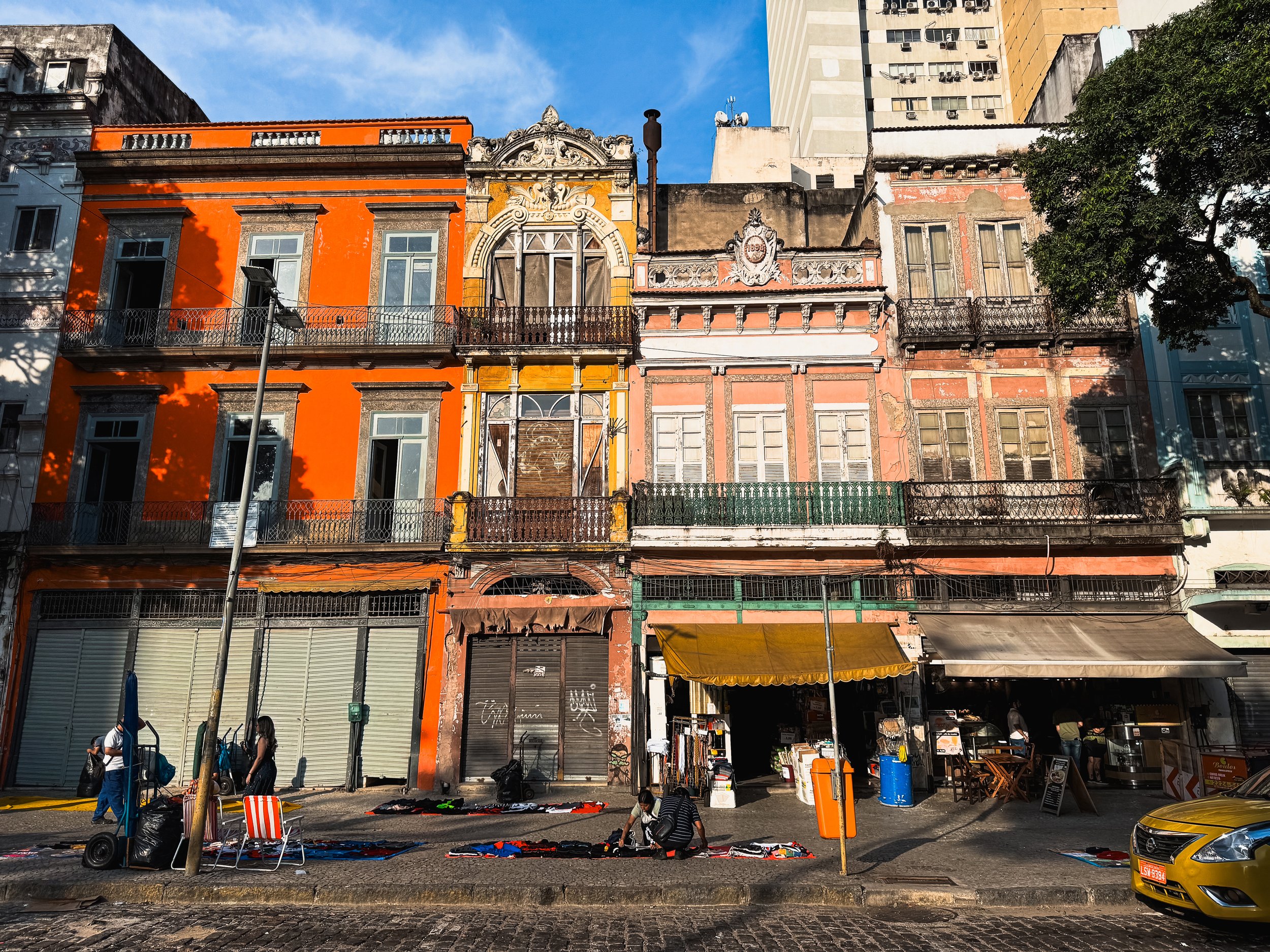
El Centro
El Centro is the central neighborhood of Rio is the historic and cultural hub of the city known for its architecture, museums and plazas. We spent time walking around the neighborhood, following the patterns of tiny black and white stones laid into the sidewalks. Narrow cobble stone streets are lined with ornate historic buildings and wide avenues with modern skyscrapers and elegant neo-classical landmarks.
Museu de Art do Rio. A contemporary art museum with galleries dedicated to local artists. We visited during their main exhibit on Funk music. The exhibit was laid out in two parts. One related to the historical context of Funk going back to black artists from the 70s. The second, depicting contemporary Funk music in favelas.
Museu di Amanda (Museum of Tomorrow). A beautiful, insightful, thought provoking and at times overwhelming museum dedicated to Earth and humanity. Through a series of interactive, descriptive and digital exhibits, the museum builds empathy and connects us as individuals to each other, the planet and our future.
The museum explains our understanding of the Cosmos and Earth’s place it while highlighting the planet’s natural systems, ecology and biodiversity. Reflecting on humanity, an exhibit depicts what it means to be human and connects different culture’s uniqueness and similarities through photography. Continuing with an exhibit of The Anthropocene and human impacts on the planet through statistics related to overconsumption, population growth, human led degradation and the planet’s inability to keep up. The museum ends, leaving us with a choice of how to move forward as individuals and a civilization.
Royal Portuguese Reading Room. A gothic style library with a central atrium surrounded by multiple levels and walls of vertically stacked of antique Portuguese books.
Metropolitan Cathedral. A brutalist concrete cathedral shaped like a cone with 4 vertical stripes of colorful stained glass meeting at a clear cross in the cathedral’s ceiling.
Municipal Theater. An elegant theater with a domed roof, stone exterior, golden statues and bronze moldings.
Praça Quinze de Novembro. A plaza in the central neighborhood with stately neoclassical buildings.
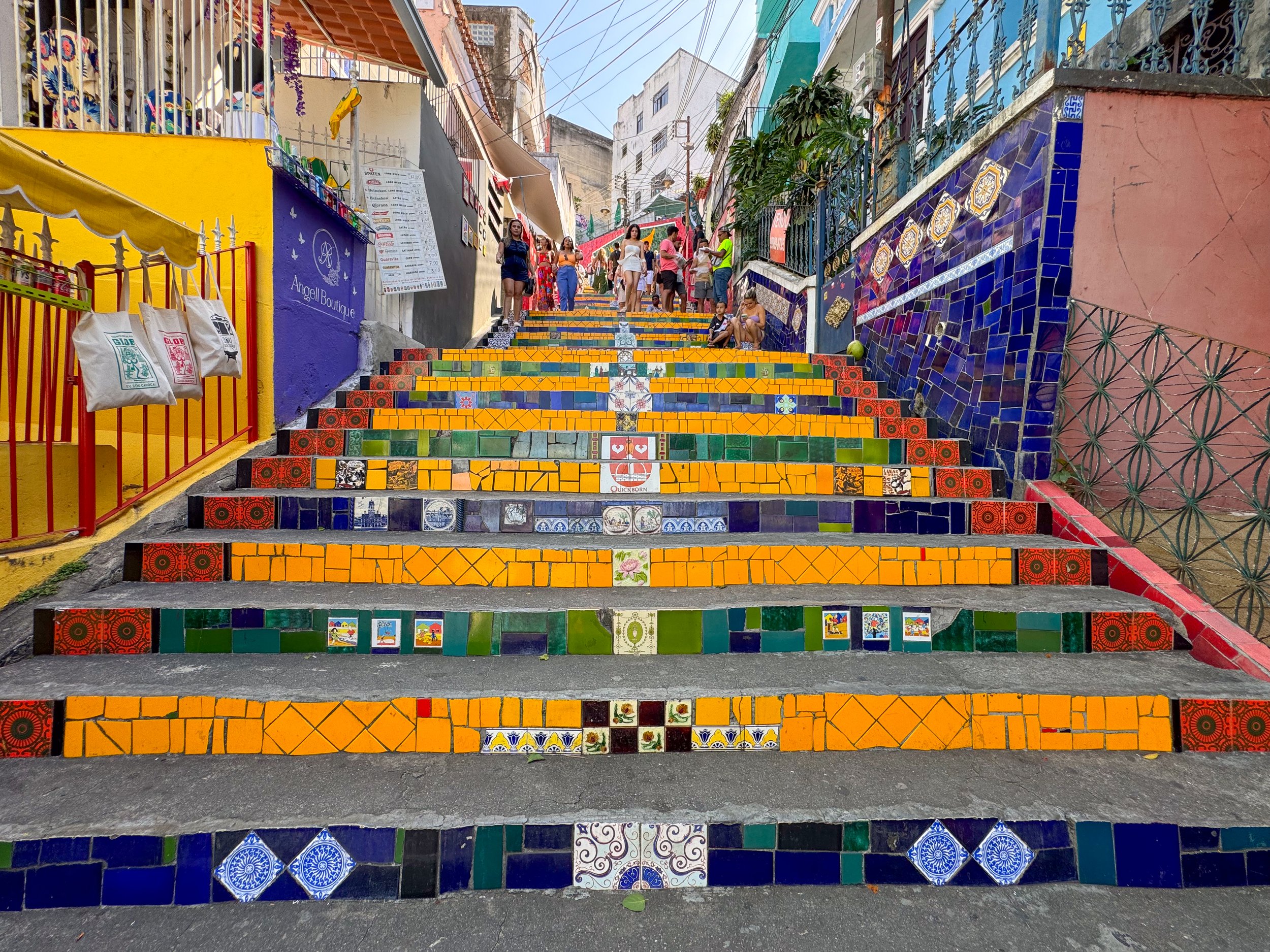
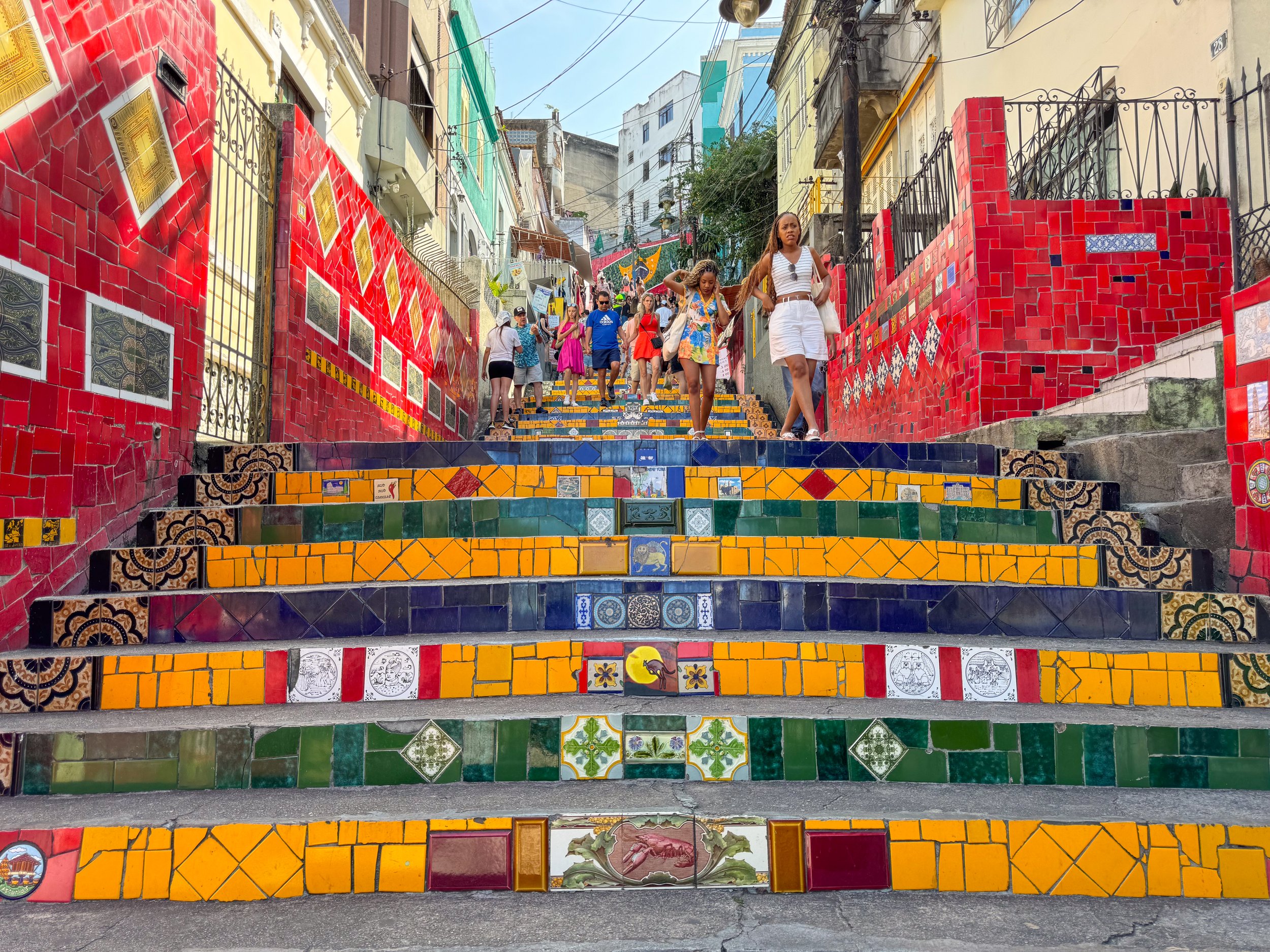
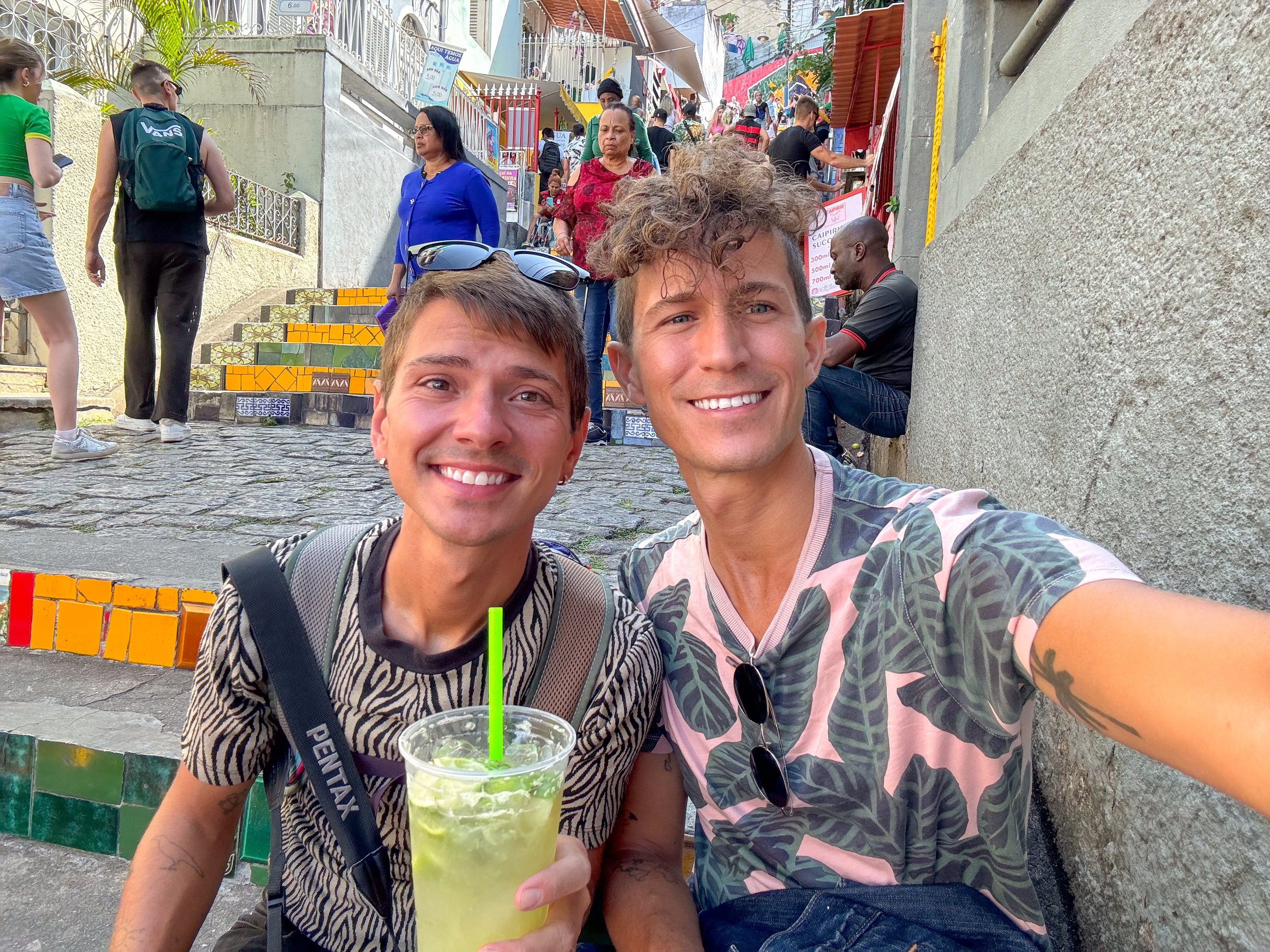

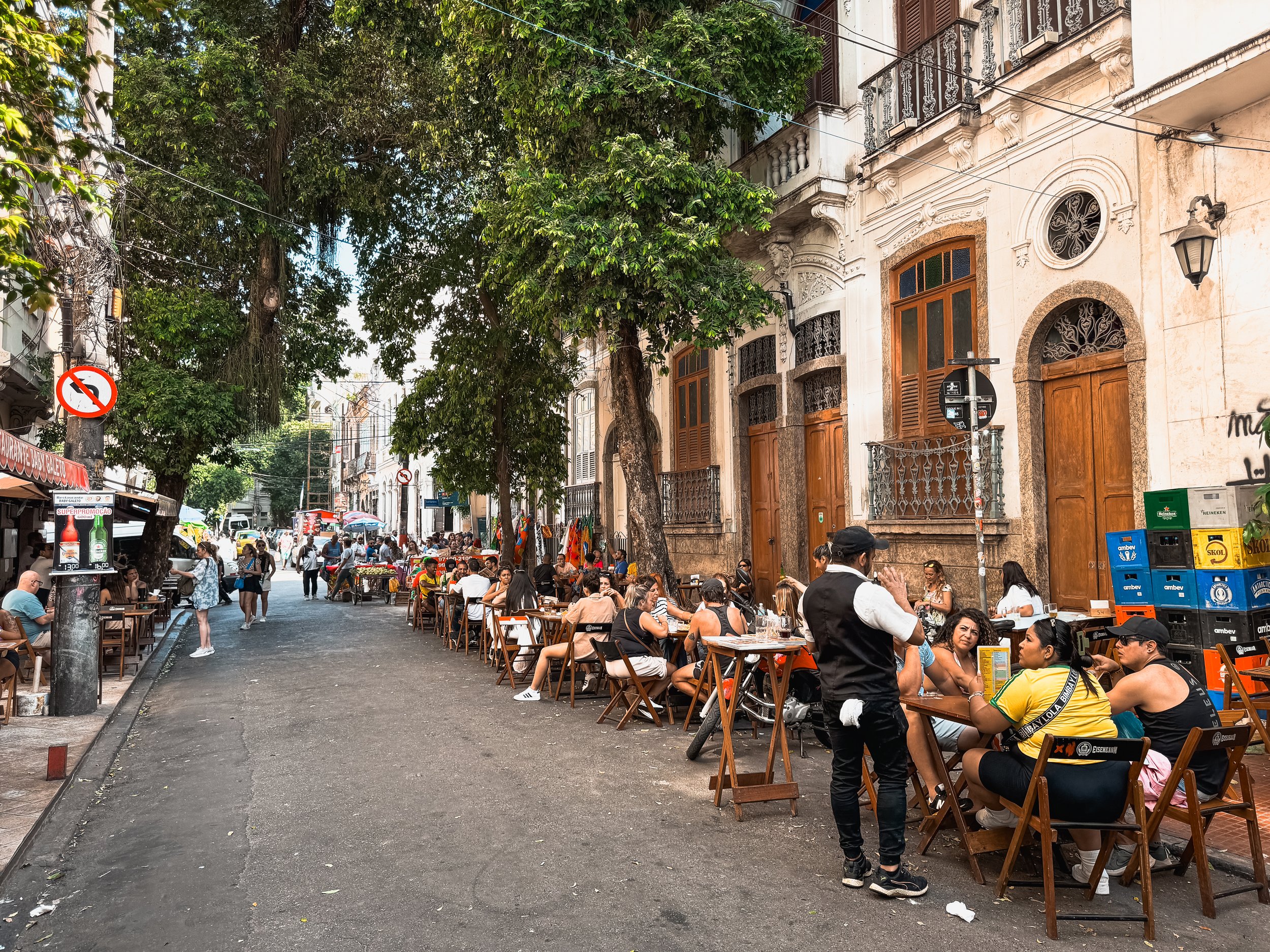
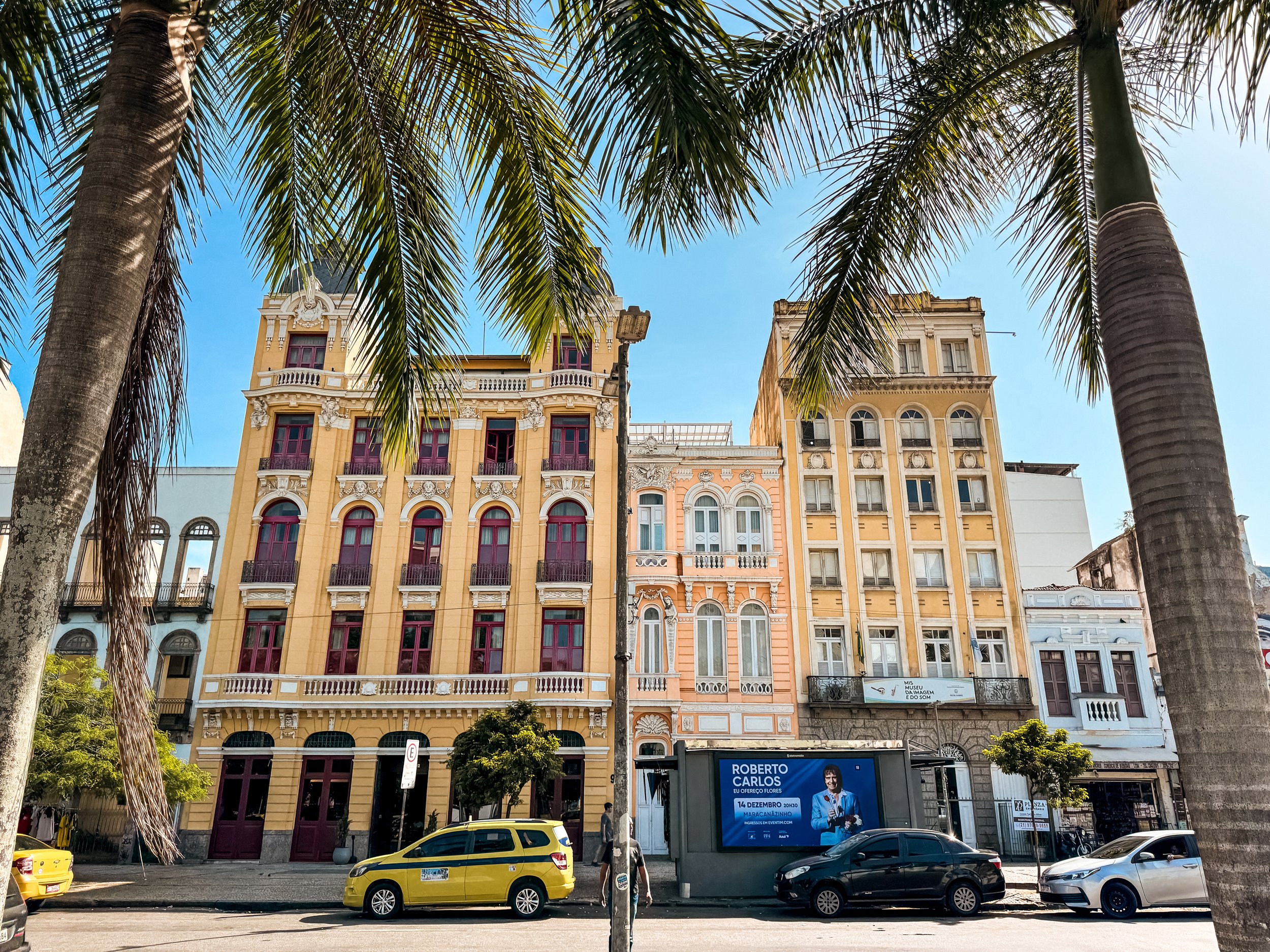

Lapa
Lapa is small but central neighborhood known for its nightlife, street art and the Escadaria Selarón. The neighborhood can be a bit dicy during the daytime and we suspect even more so at nighttime.
Escadaria Selarón. A beautiful mosaic tiled staircase in the Lapa neighborhood. It’s a very popular selfie spot with many tourists walking up the stairs and posing for photos. There are vendors selling caipirinhas from their homes. We ordered a large one for R$8, sat on the steps and people watched. At its base is a street lined with bars, restaurants and murals.
Arcos da Lapa. A white arched aqueduct converted into part of the Santa Teresa Tram route. There are many homeless people sleeping under the arches.
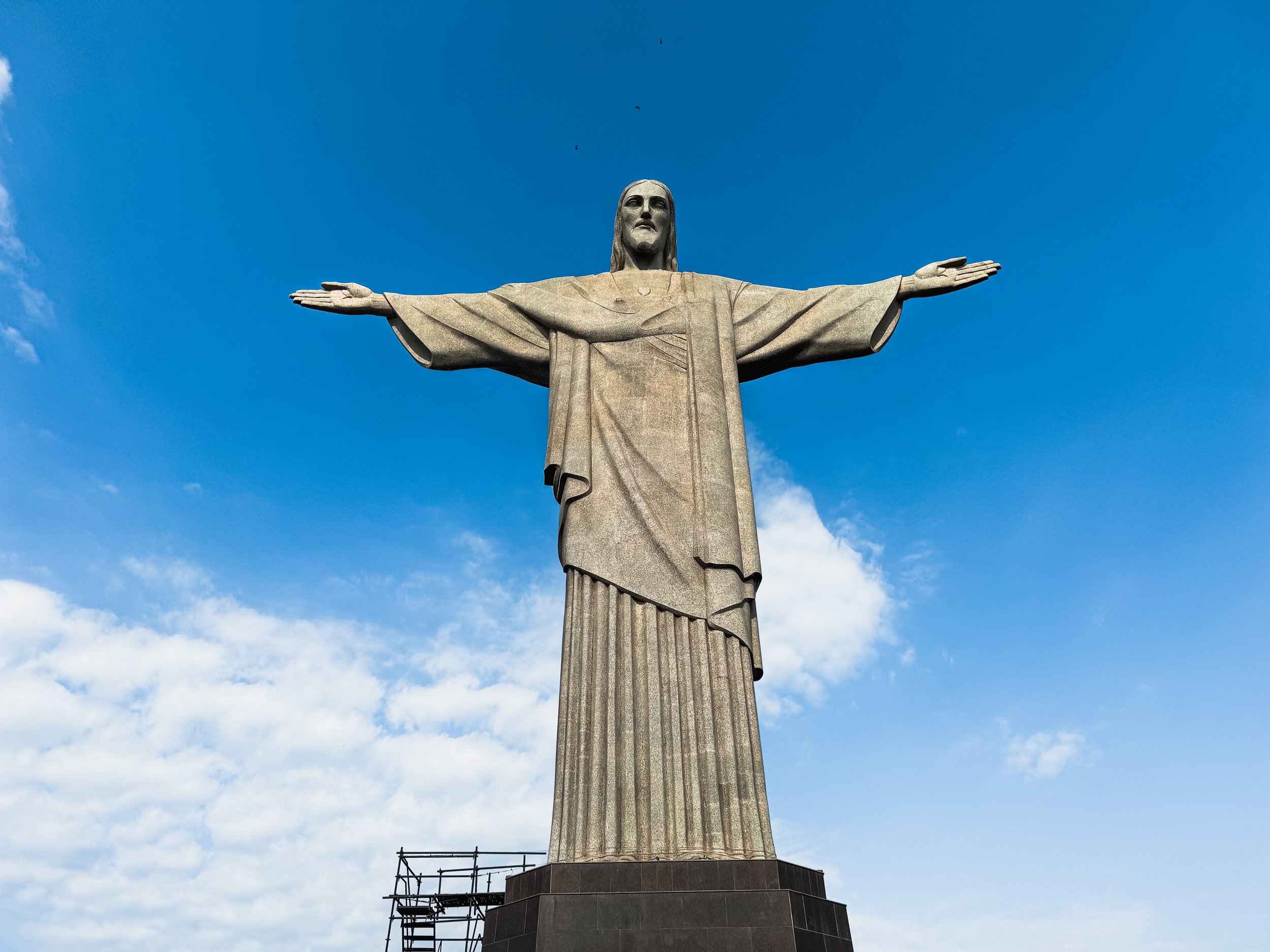
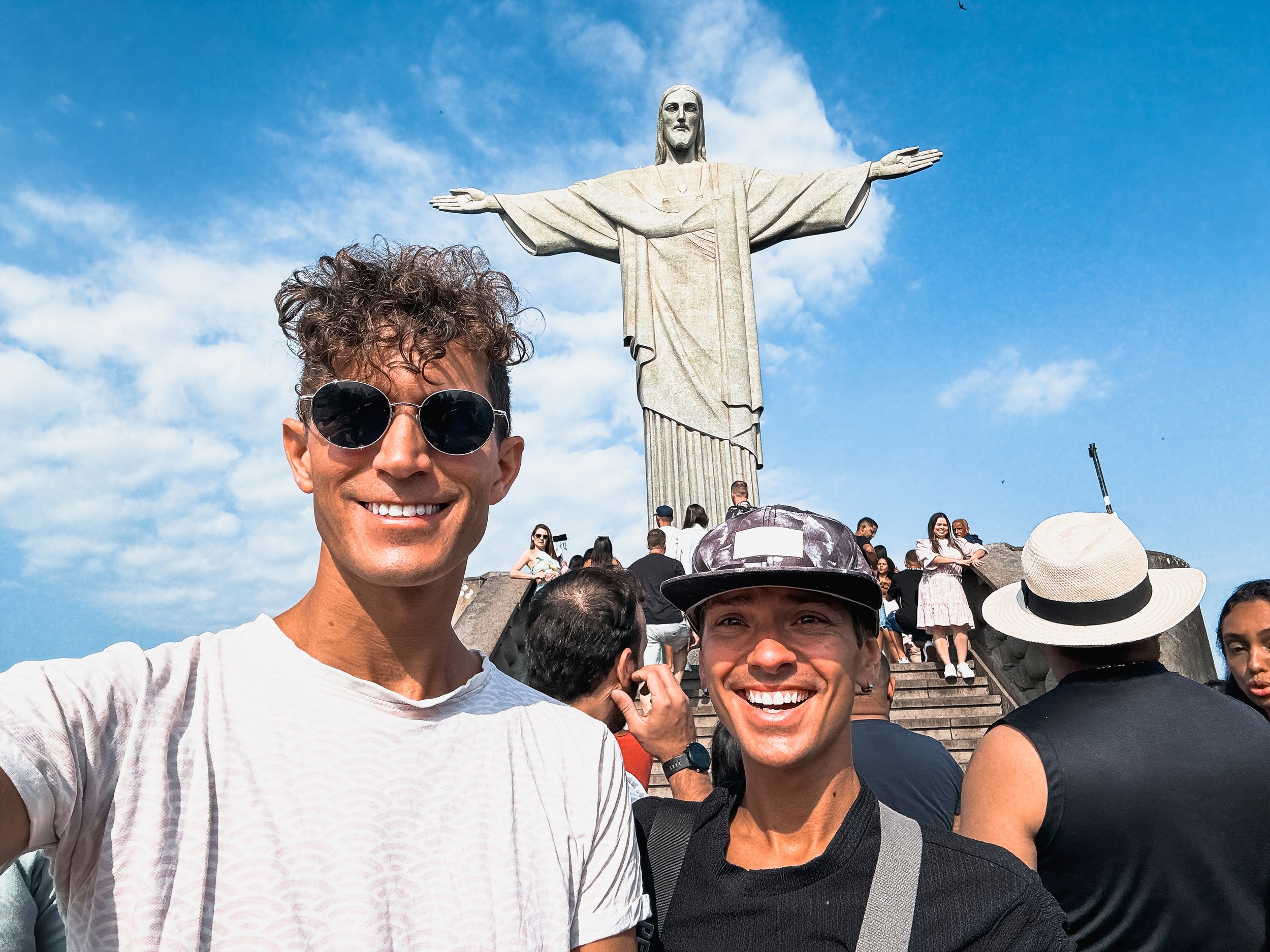
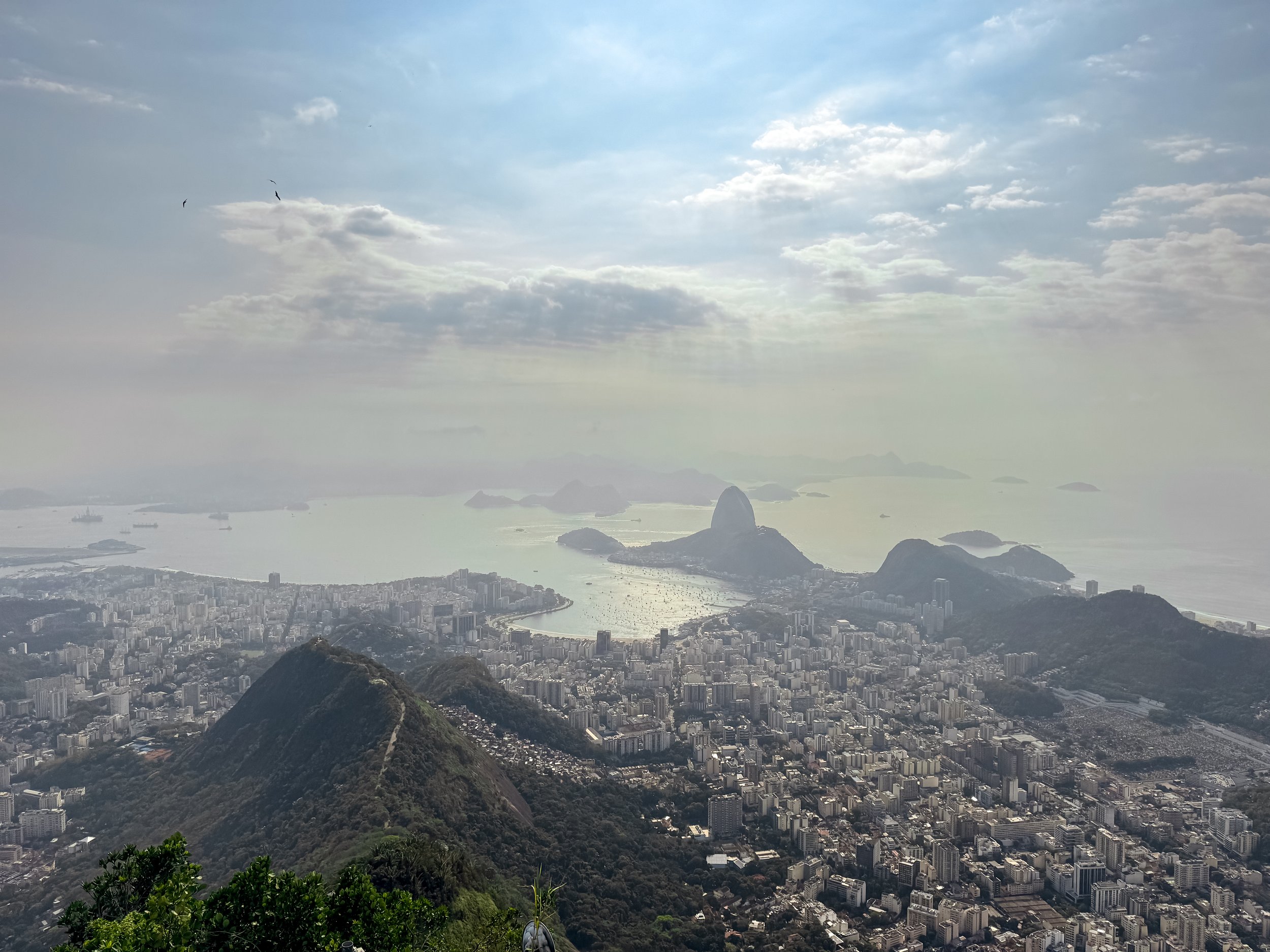
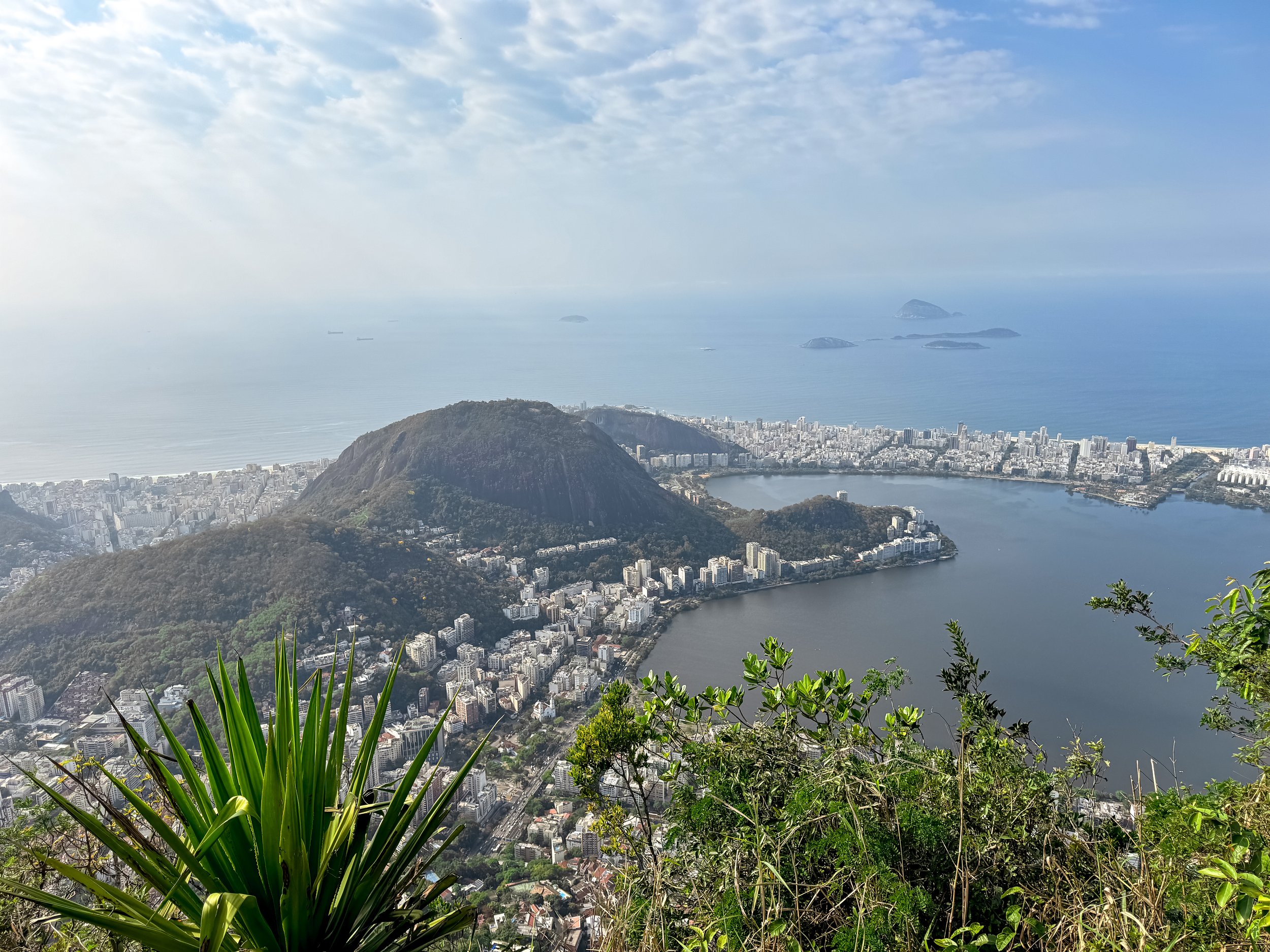
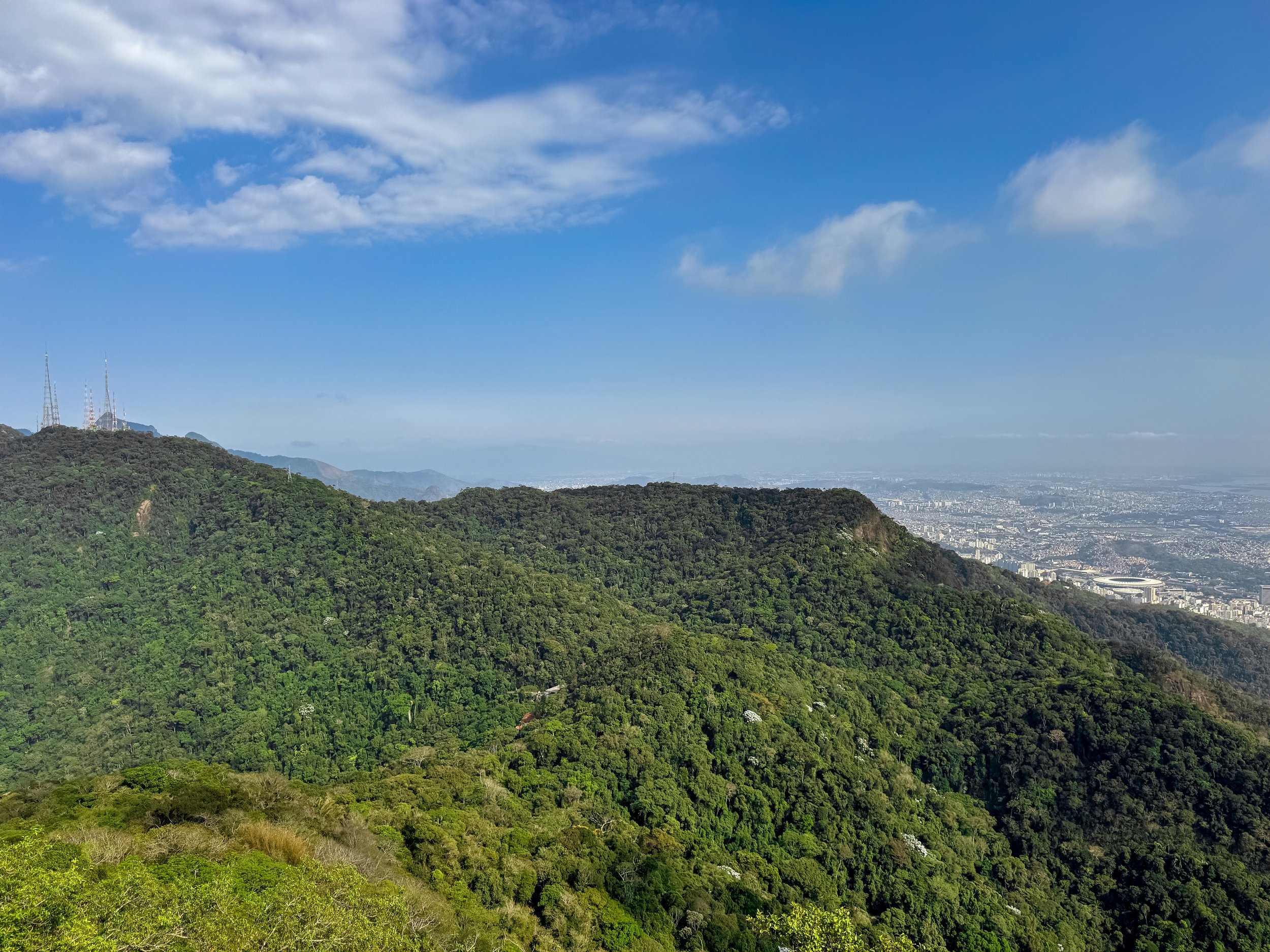
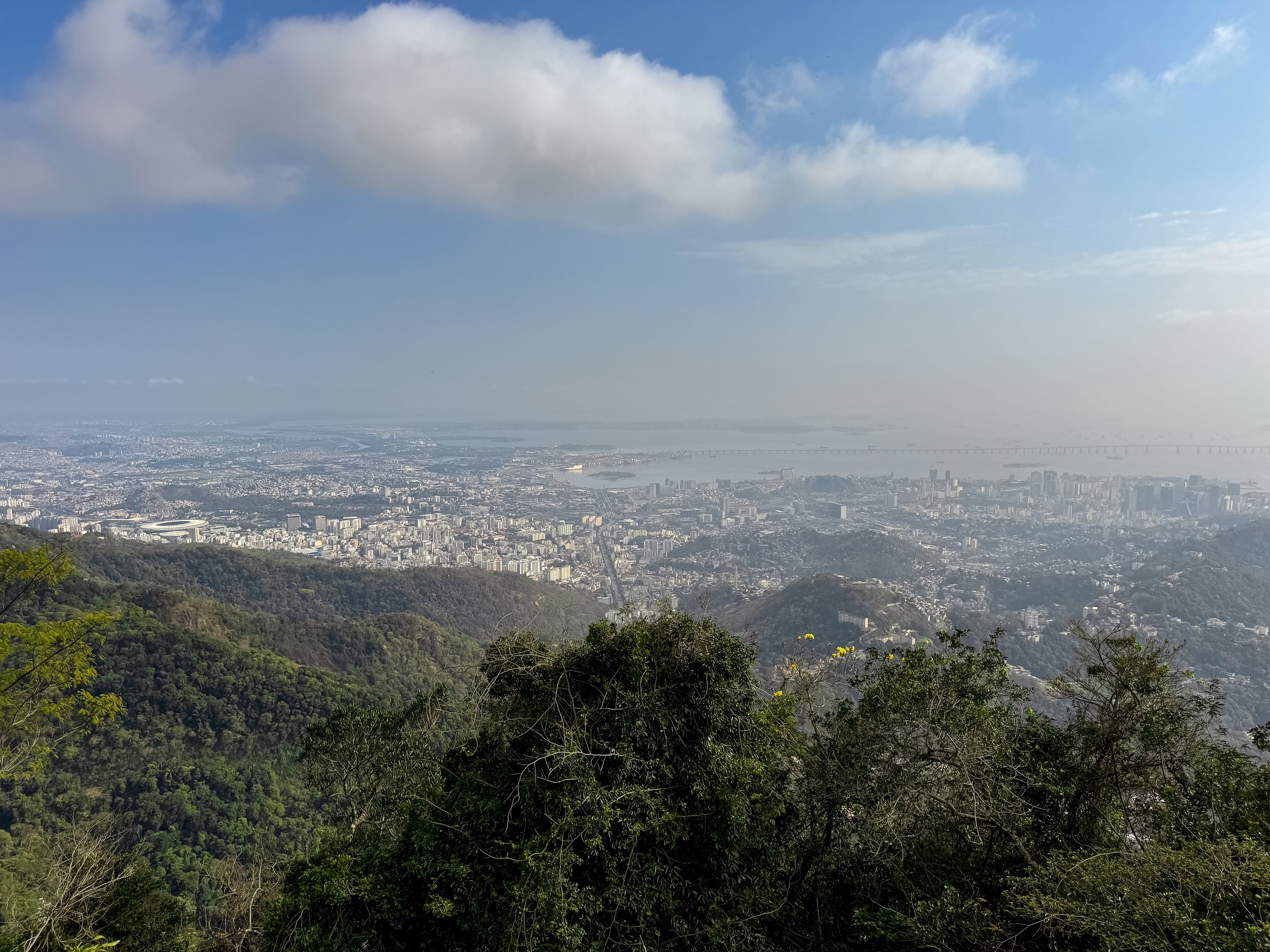
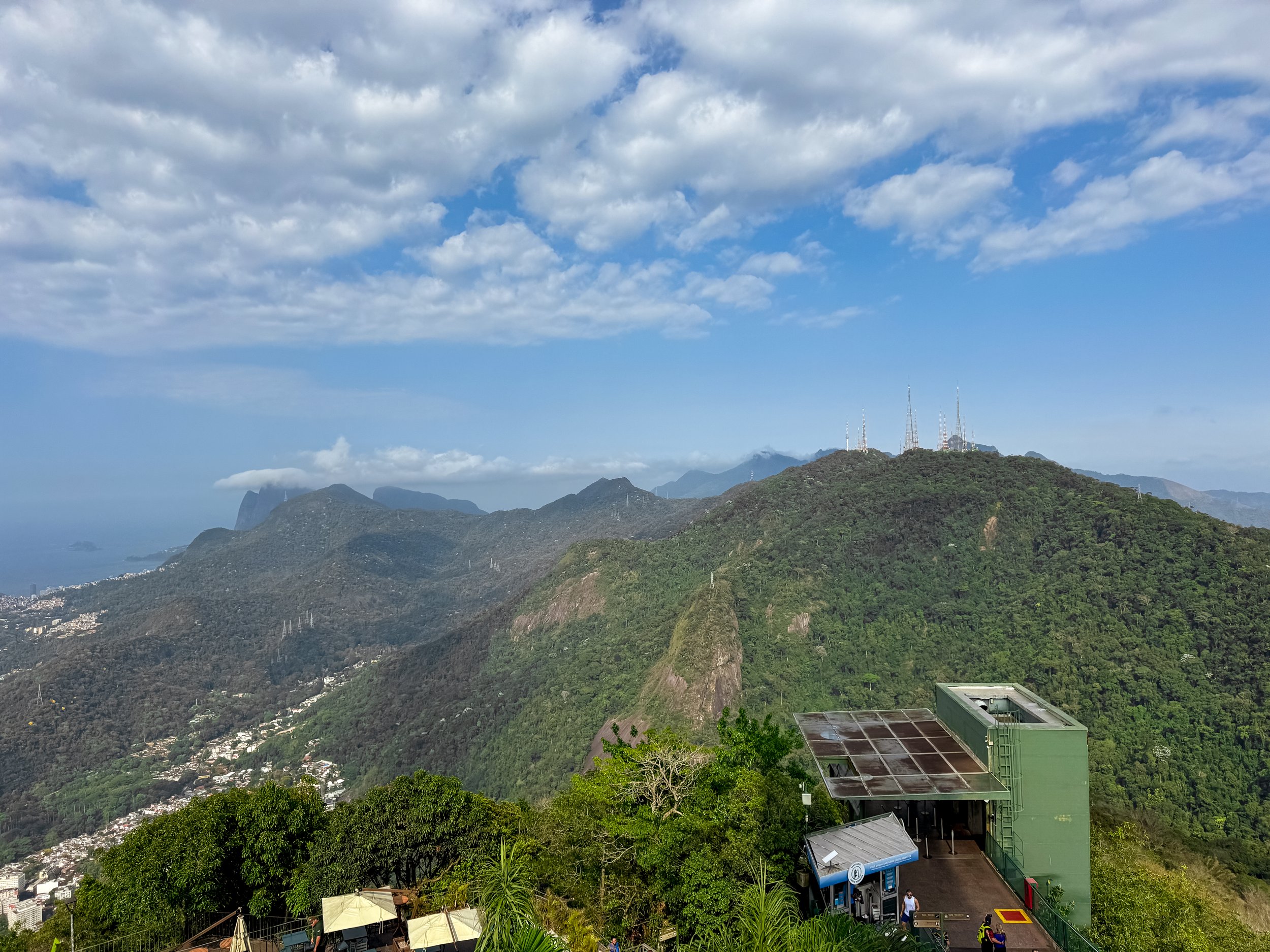
Christ The Redeemer
The iconic statue of Christ with his arms outstretched atop of the mountain overlooking Rio. On a clear day, he’s visible from across the city, peaking between skyscrapers and smaller mountains.
Tremdo Corcovado. A train that goes up the mountain to reach Christ the Redeemer. We booked our tickets a few days ahead of time for 7:20 on a clear morning. The best views of the statue are in the morning light while the best views of the city are in the afternoon. Even in the early morning, the summit was crowded with people taking selfies and admiring the view. Book here!
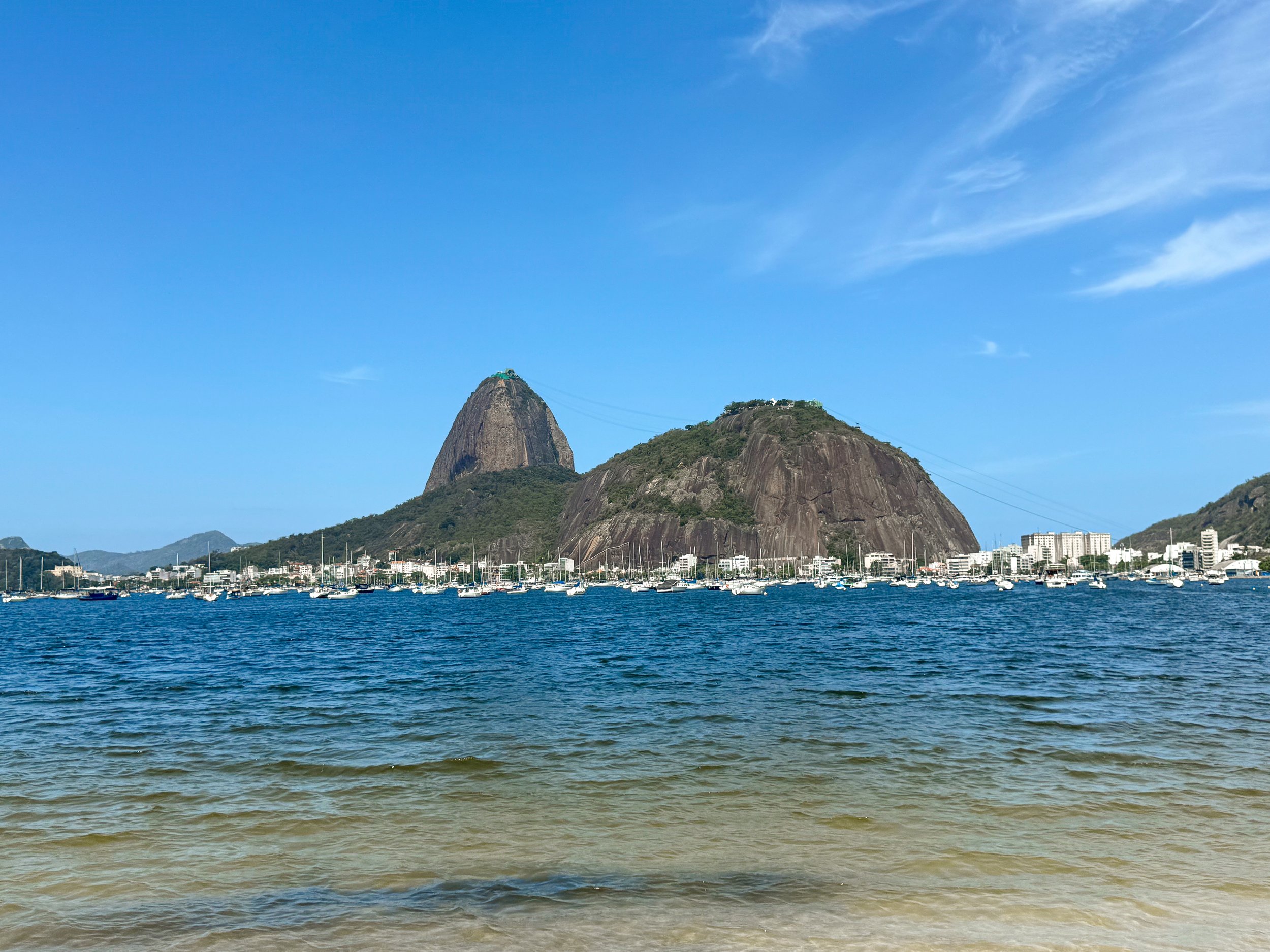

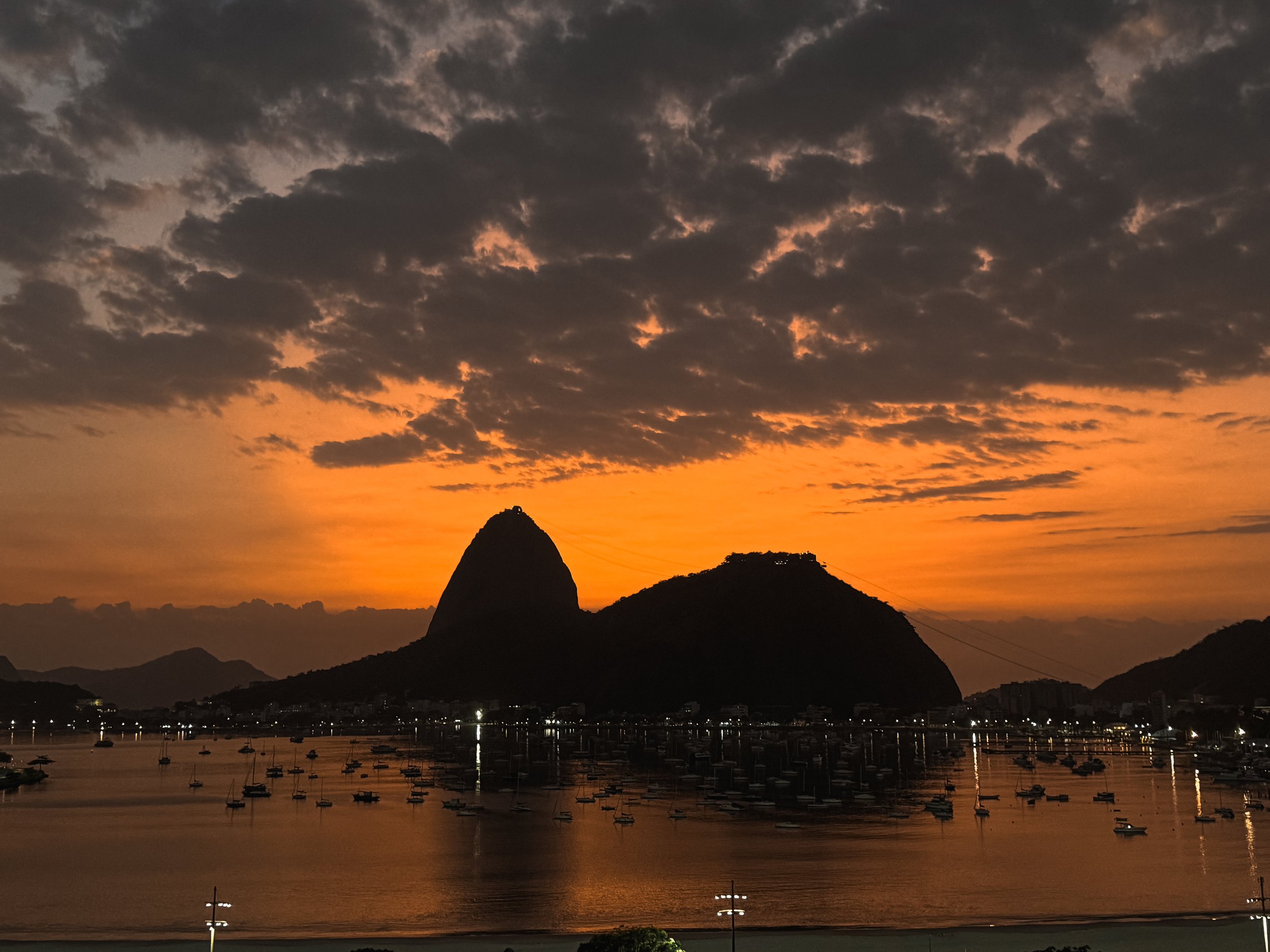
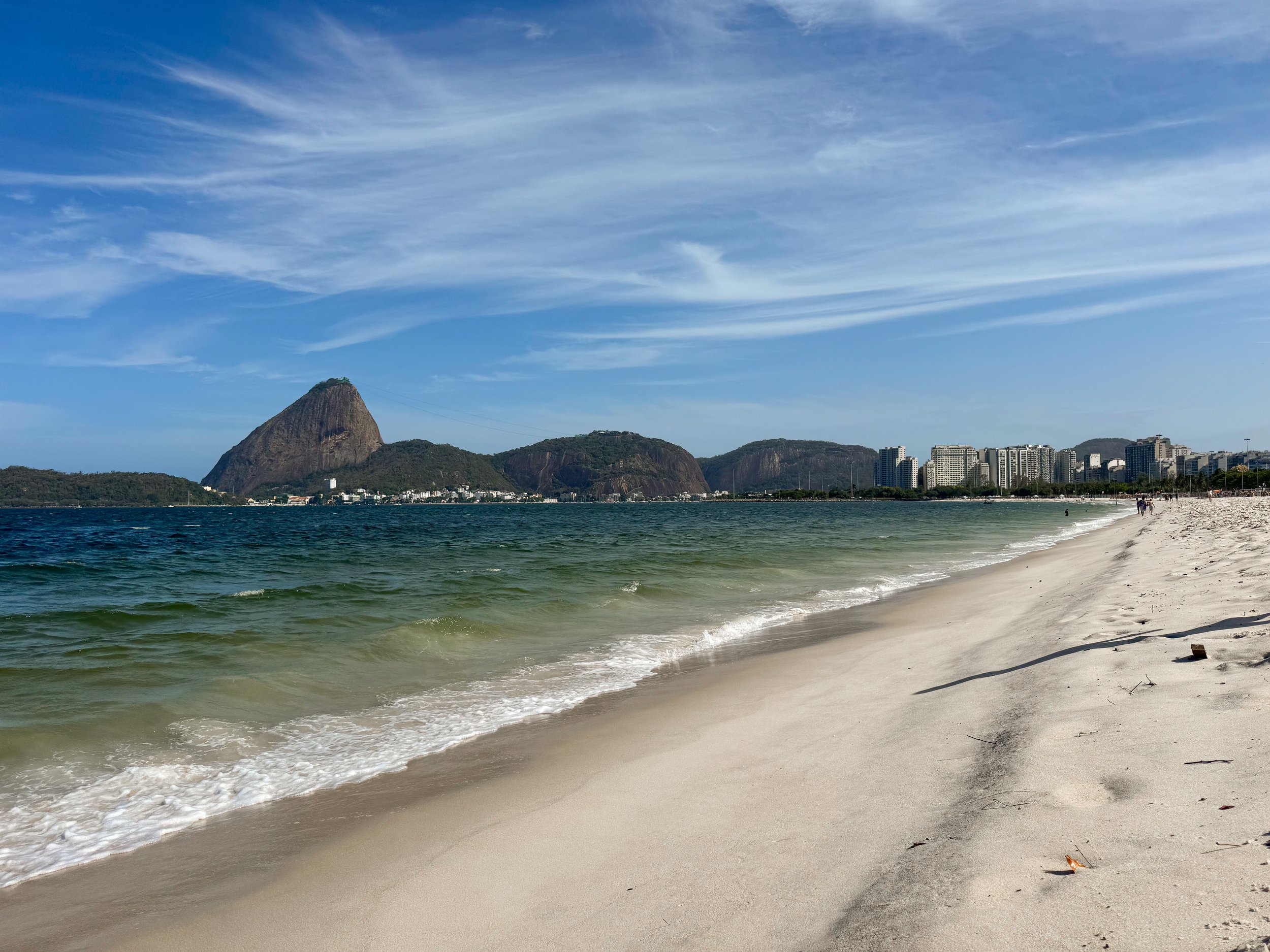


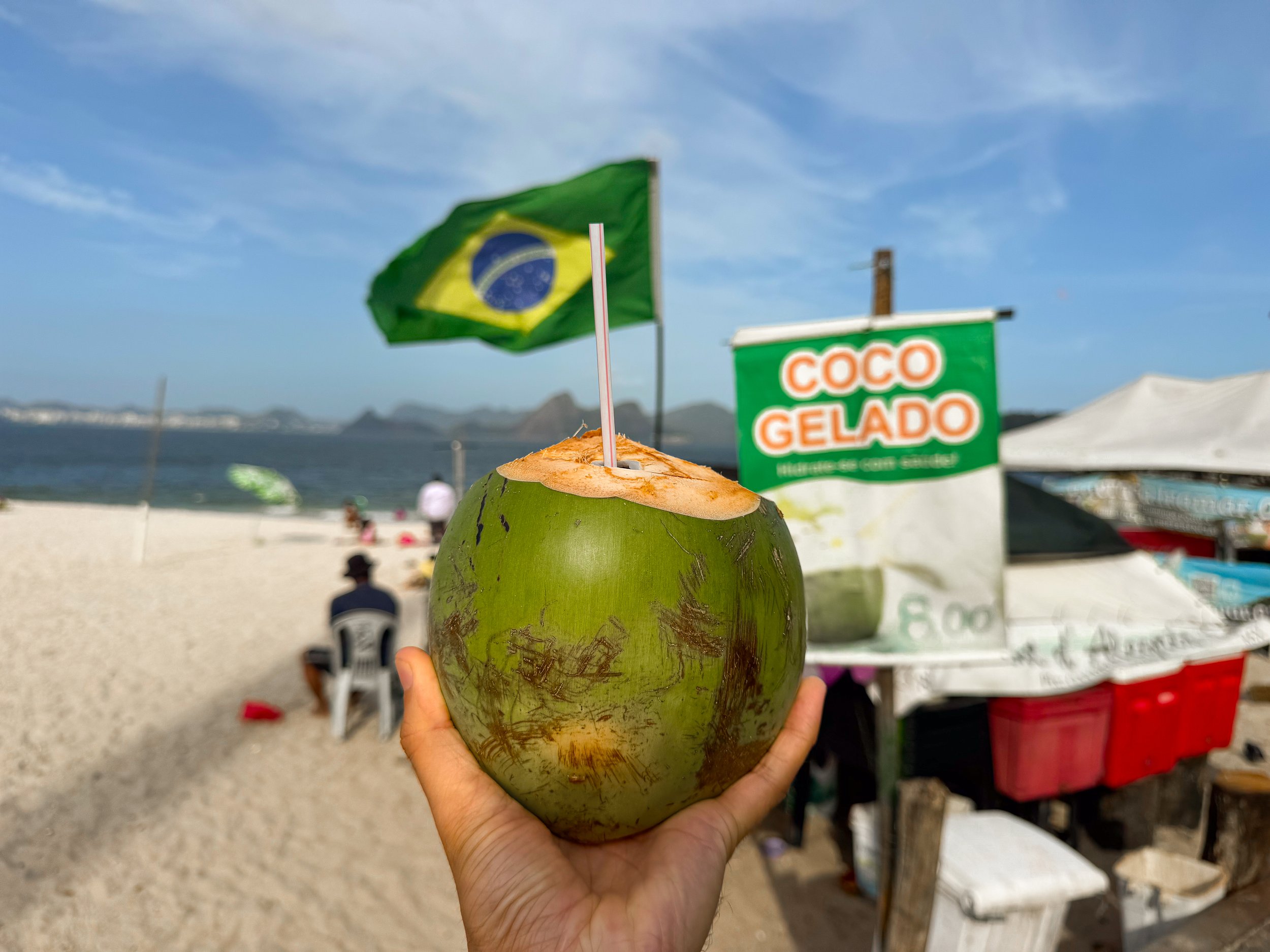
Botafogo & Flamengo
Botafogo & Flamengo are two adjacent neighborhoods with white sand beaches, cafes, restaurants, bars & hotels.
Botafogo Beach. A half moon shaped white sand beach with picturesque views of the ship dotted harbor and Sugarloaf Mountain. The water is often non-swimmable due to swim in due to sewage and pollution.
Flamengo Beach. A lengthy white sand beach with sun-kissed beach goers, vendors selling fresh coconuts, toned people flexing at the outdoor gyms, tournaments of Brazilian foot volley and a park with gardens and cycling paths.
Av. Infante Don Henrique. A scenic waterfront trail connecting both Flamengo and Botafogo Beaches with views of the harbor, sugarloaf mountain and Christ redeemer. People come here to take a leisurely stroll, jog, exercise and bike.
Brewteco Botafogo. A rooftop restaurant and bar overlooking Botafogo Beach and Sugarloaf Mountain. Come here for shareable appetizers like fried tapioca cheese bites and Brazilian beers including their house brewed beers.
Flor de Cactus. A coffee shop with sandwiches, pastries and locally made goods like honey, dried beans, hot sauce and juice.
What to Eat and Drink
Feijoada. A traditional Brazilian stew made from black beans and multiple meats. It’s commonly served with rice and sliced oranges. We cooked a vegan version of it at our Airbnb.
Moqueca. A traditional Brazilian stew made with fish, shrimp, plantains, coconut milk, tomatoes and spices.
Pastel. A fried or baked squared shaped pastry filled with any number of proteins from meats to cheese.
Pao de Quejo. Tasty and addicting Brazilian rolls made with cheese and tapioca flour. They popular everywhere in Brazil and common at breakfast.
Queijo Coalho. A popular Brazilian snack made from skewered cheese grilled over coals, covered in honey and sprinkled with oregano.
Bolhinos. Crispy fried cod fritters. They’re popular as appetizers at restaurants and bars.
Brigadeiro. A Brazilian truffle made from a chocolatey caramel covered in chocolate sprinkles.
Pipoca (Popcorn). The tasty snack is served in food carts across the streets of Rio. Try is served buttered & salted or glazed in caramel.
Palmito. Known as heart of palm, it’s common in salads.
Açaí. The tiny Amazonian super fruit from the Açaí palm. By itself, it has a bitter blackberry like flavor. It’s often served as a sorbet with other fruits, granola and honey.
Coconuts. Fresh coconuts sold whole and sliced open with a machete are synonymous with Brazil! The refreshing and tasty drinks are served on beaches across Rio for around $R10.
Caipirinha. A cocktail made from sliced limes and sugar muddled together shaken with cachaça, a little water and ice. It’s essentially a Brazilian margarita. They’re sold from street vendors, at beaches, bars and restaurants across Rio.
Guaraná Antarctica. A very popular Brazilian soda made from the guaraná fruit. It has a fuzzy cane sugar like flavor.
Brazilian Beers. There are three popular and inexpensive Brazilian beers sold almost everywhere. Brahma which is the most popular followed by Skol and Original.
Where to Stay
We stayed at an Airbnb overlooking Botafogo Beach and Sugarloaf Mountain. With is views, it was the most dreamy location we could have imagined staying in Rio while giving us beach access to layout under the Brazilian sun.
Good to Know
Language. Portuguese is the national language of Brazil. Even is a city like Rio, very few people speak English. We got by on some basic Portuguese phrases and words combined with some Spanish and Google Translate.
LGBTQ+ From rainbow flags at beaches to meeting other Brazilians from across the spectrum, Rio is very welcoming of LGBTQ+ tourists.
Drinking Water. The tap water is technically safe to drink in Rio although it has an unpleasant taste, not even boiling water will eliminate the flavor. Unfortunately, we drank mostly bottled water while in Rio.
Cash. Very few places accept cash. The ones that do don’t often have change for larger bills like 50s or 100s.
Beaches. The beaches were surprisingly clean across Rio with little to no trash anywhere on shore.
Weather. Though the air temperature was warm, the water was still very cold in the early spring (mid October).
Getting Around. Ubers and yellow taxis are plentiful & inexpensive to get around the city as well as the airport.
Safety
Be Aware. Despite everyone’s warning, we felt very safe in Rio. Like in most cities, we were aware of our surroundings, kept our phones and wallets in our front pockets, double checked directions and use instincts before walking down a street.
Avoiding Favelas. Favelas are notoriously dangerous due to the high risk of violent crime and best avoided. Even on a guided tour like we took in Vidigal, our safety couldn’t be guaranteed.
We used the satellite view on our maps app to determine if an area may be a favela. Generally, high density areas with tin roofs and no defined streets are favelas. Areas with clay tiled roofs, skyscrapers with streets are generally safer neighborhoods.
The north side of the city between the international airport and El Centro should be avoided. This is the most dangerous region with several favelas.
Beaches. To avoid theft on the beaches, we kept our valuables out of reach of anyone passing by. People mentioned not to visit the beaches at night however we didn’t see any issues. Most beaches including Copacabana, Ipanema and Botafogo are well lit and well utilized at night.
For Next Time…
Having caught a cold during our week in Rio, it limited our ability to do and see everything we had hoped. Luckily, Rio is now near the top of our list of places to return to. For next time, we plan to:
Take Surf Lessons at Amador or Grumari beaches.
Go on a boat tour of the Cargarras Islands, a protected nature reserve off the coast of Rio.
Hike to the summit of Piedra Bonita, one of the city’s tallest granite peaks.
Visit during Carnival, the world’s largest party with parades, music festivals & feathered dancers.




